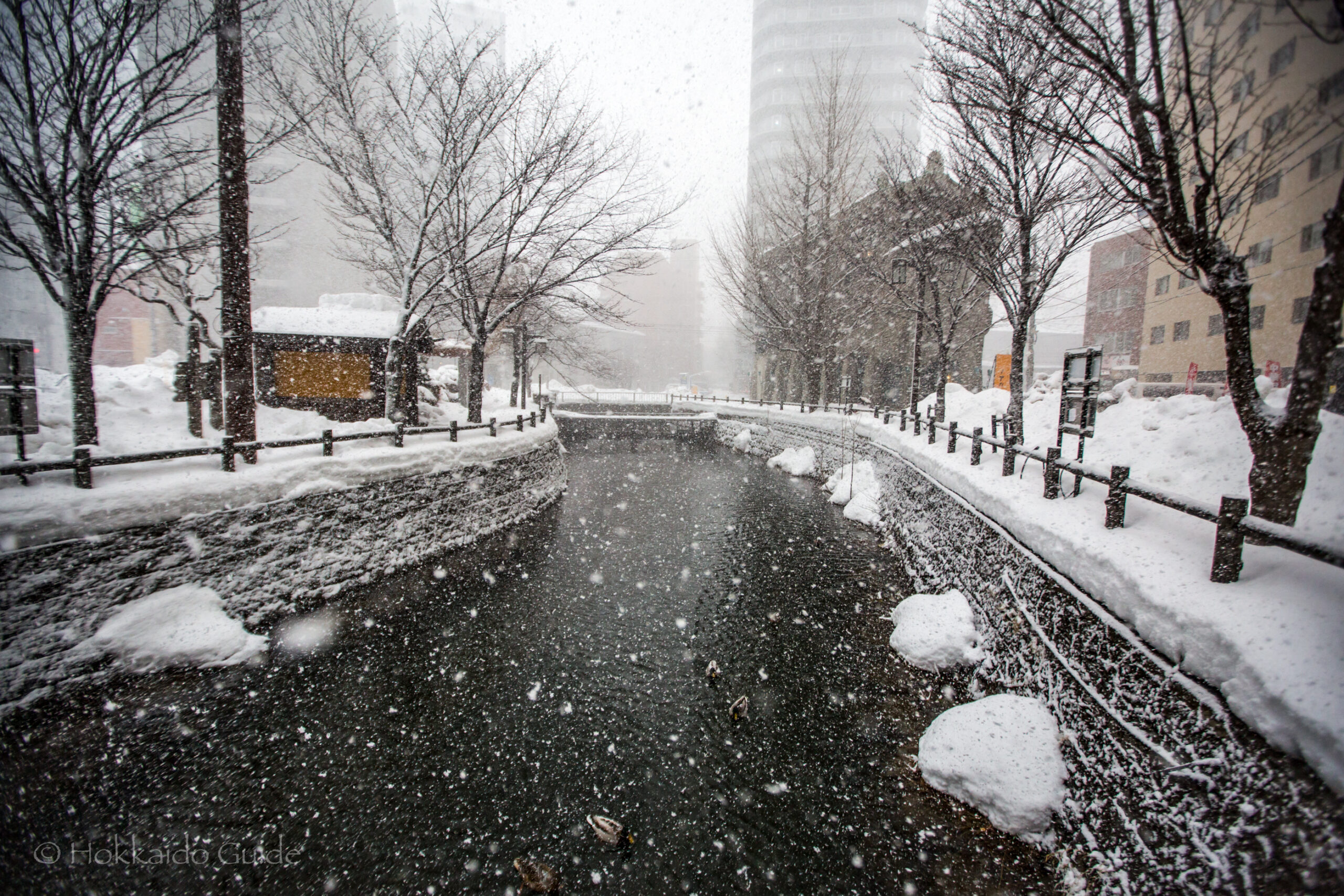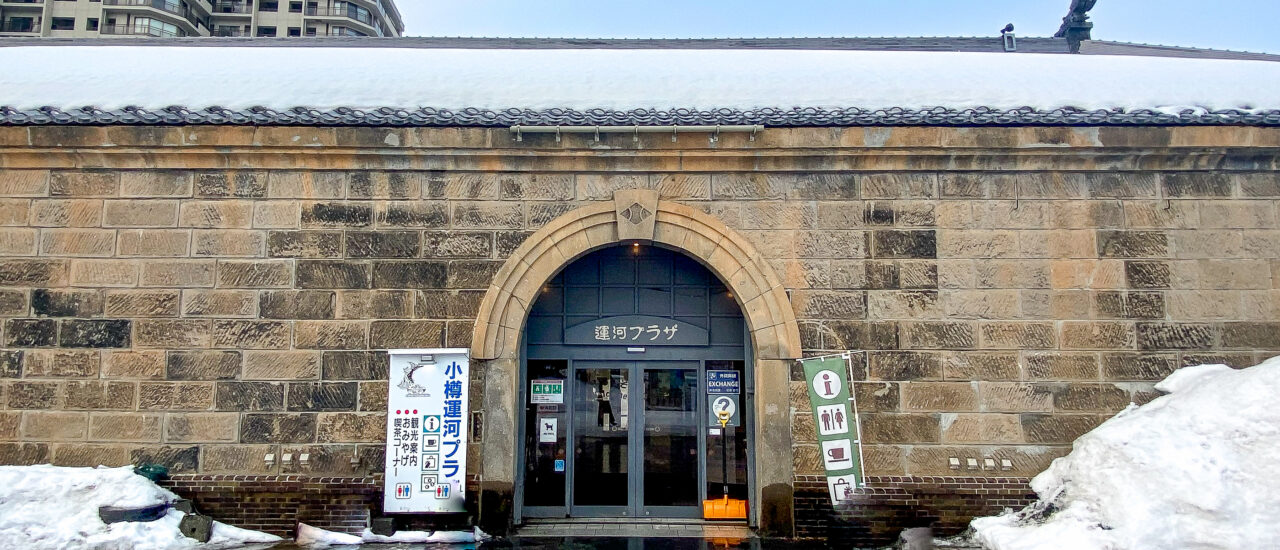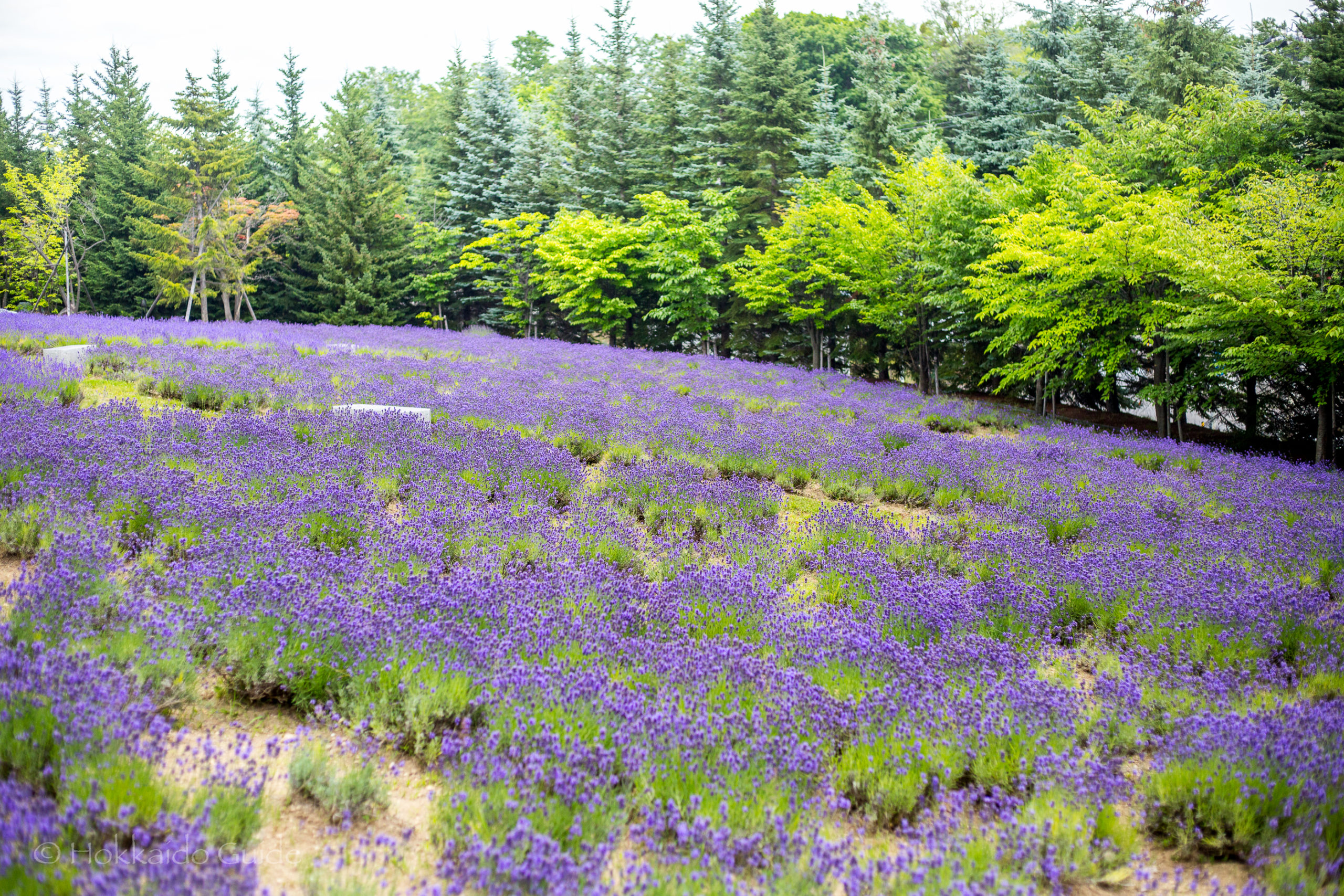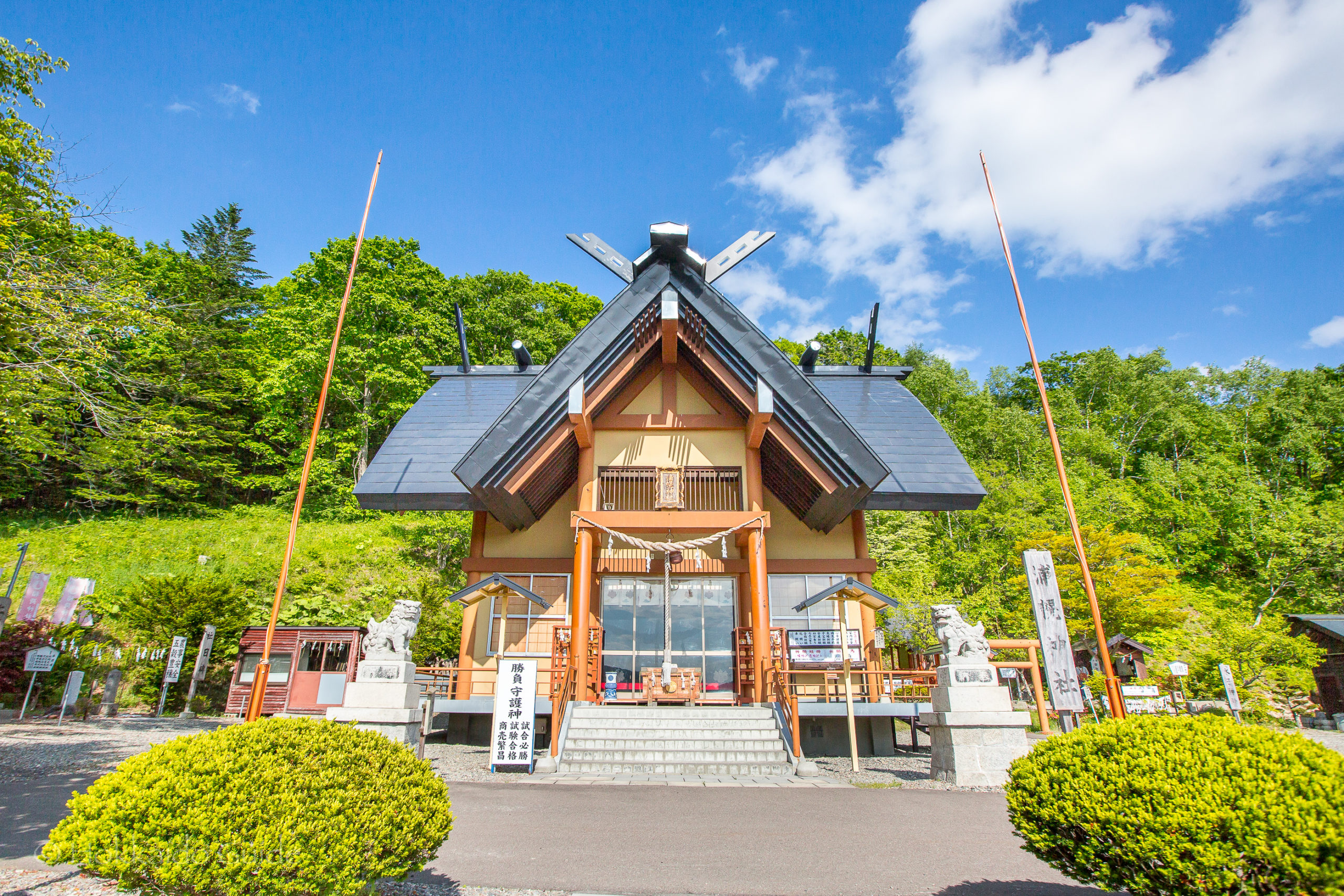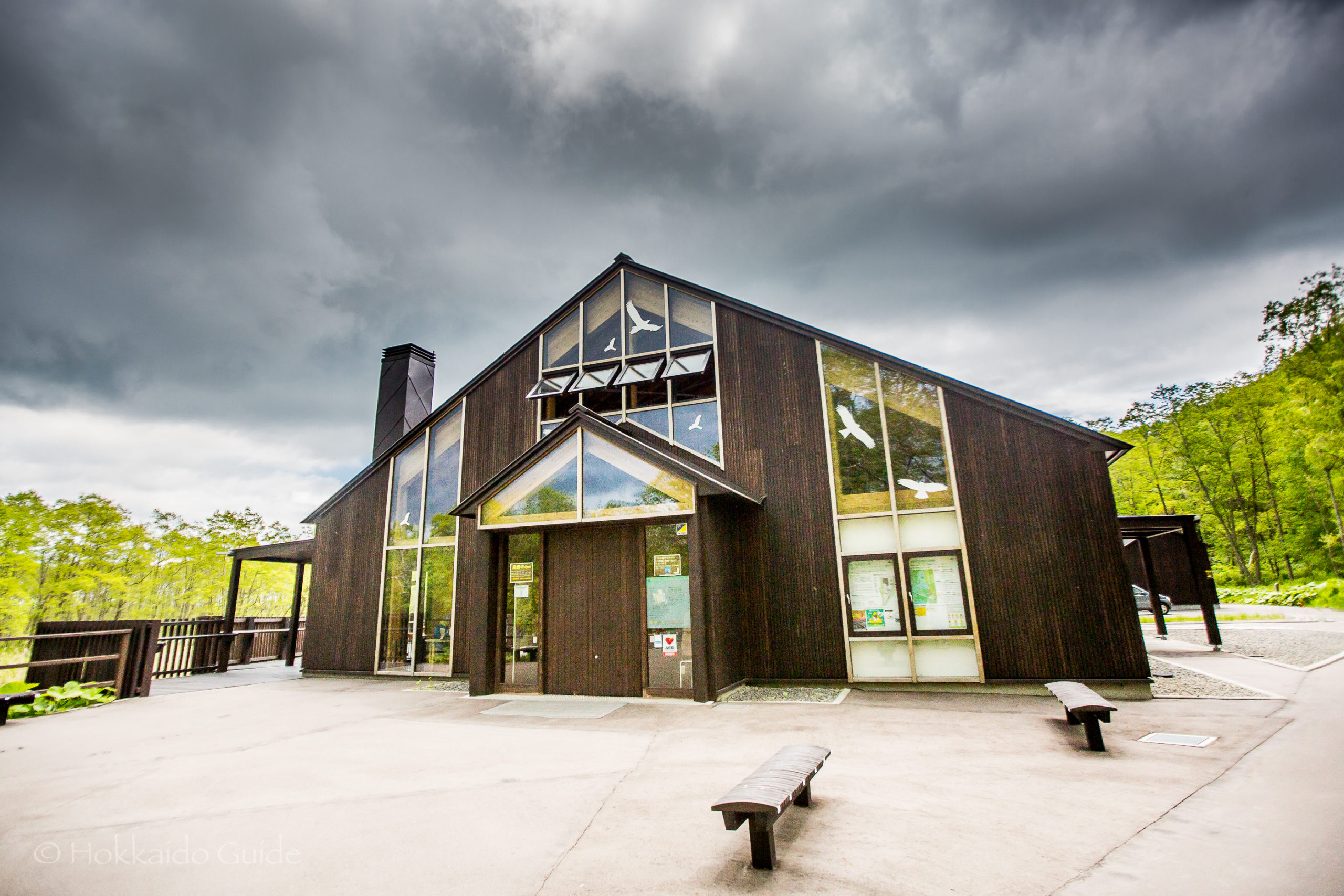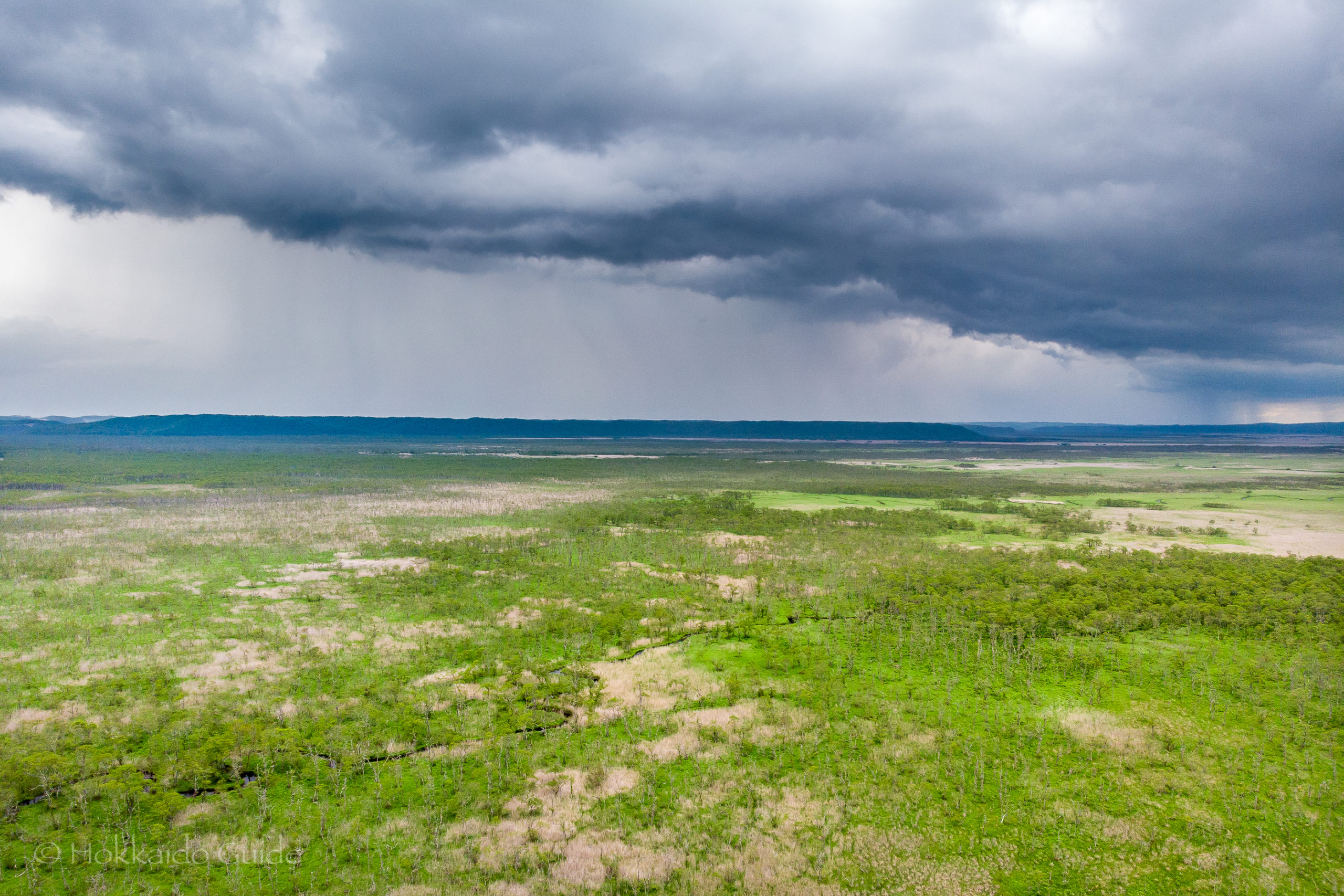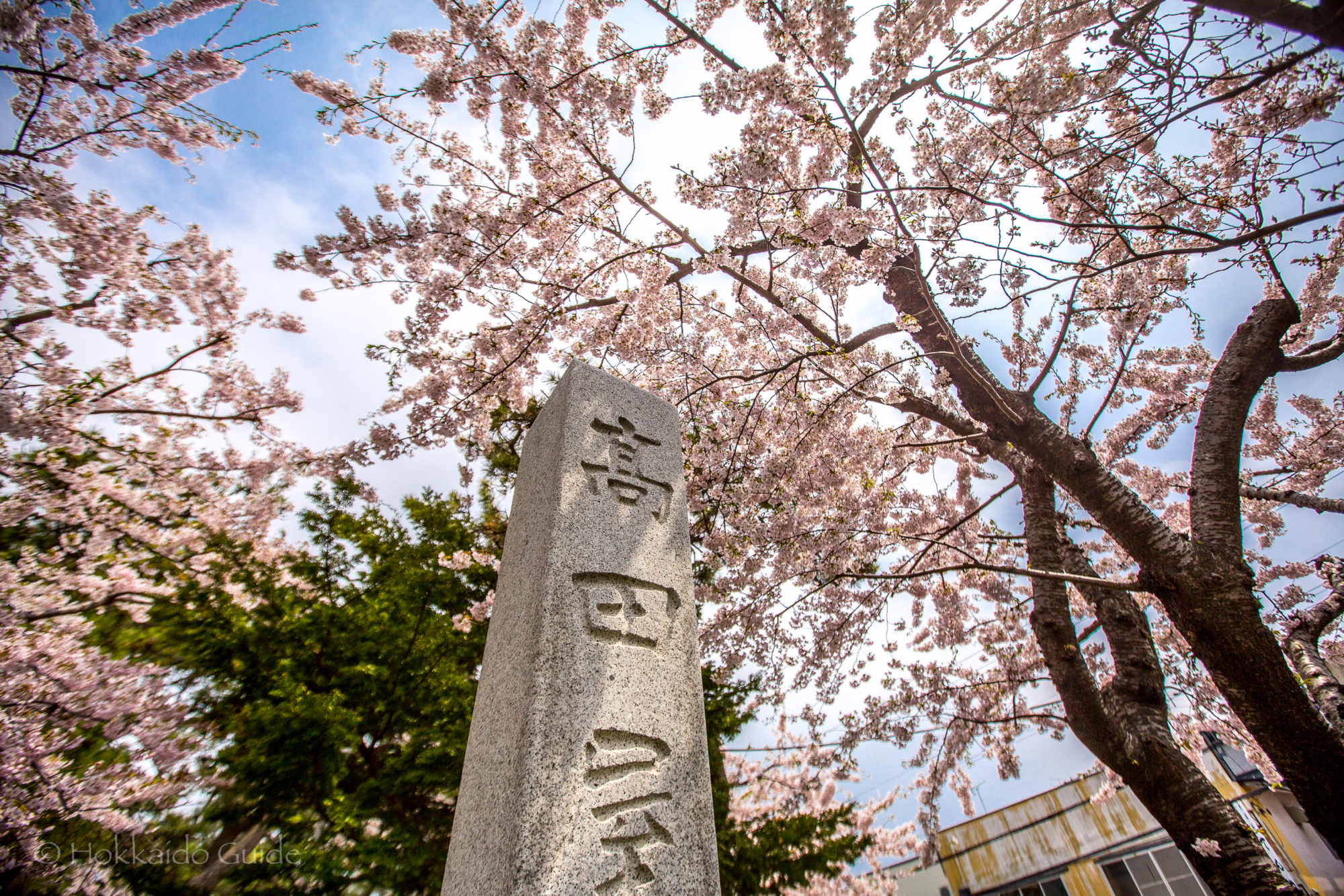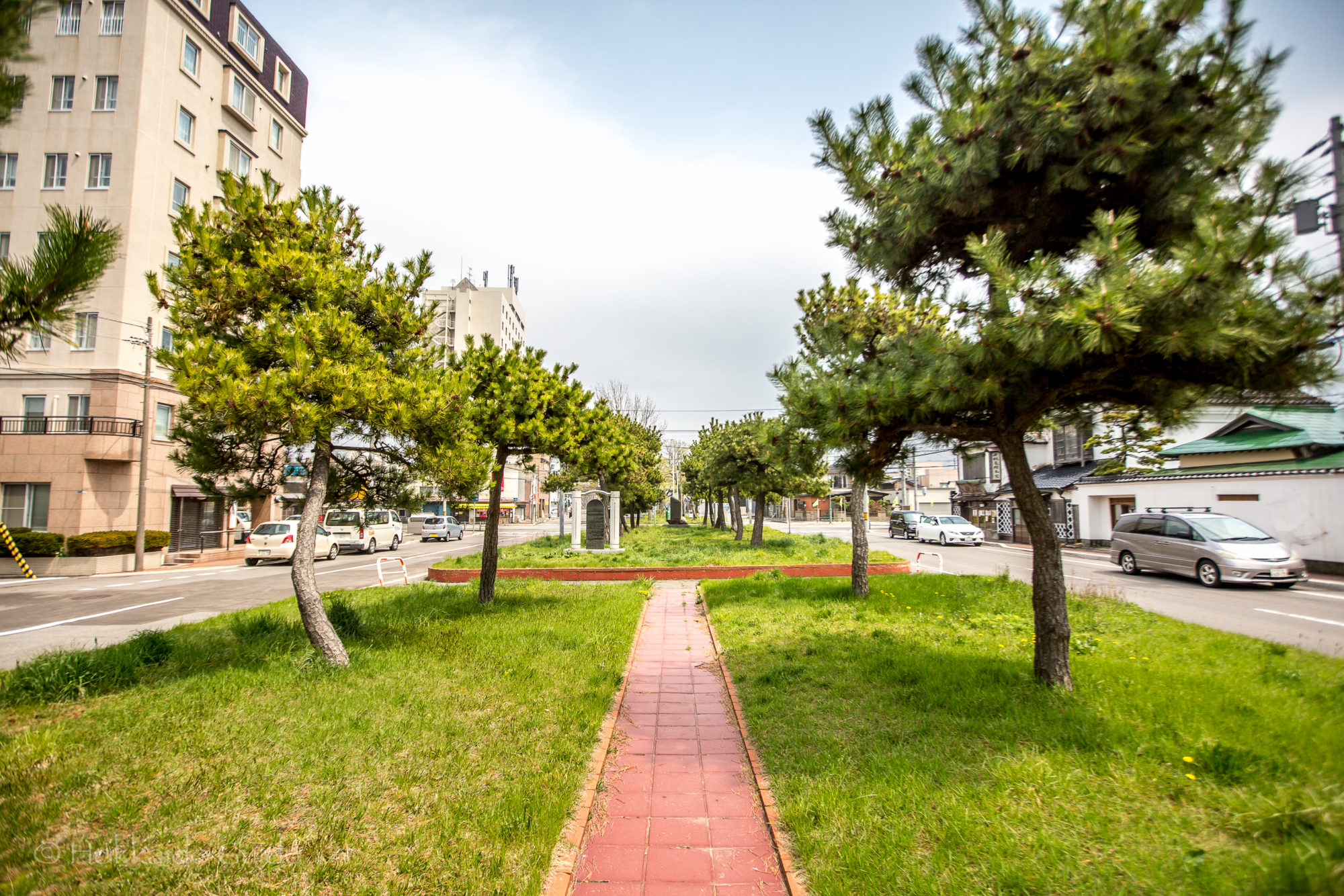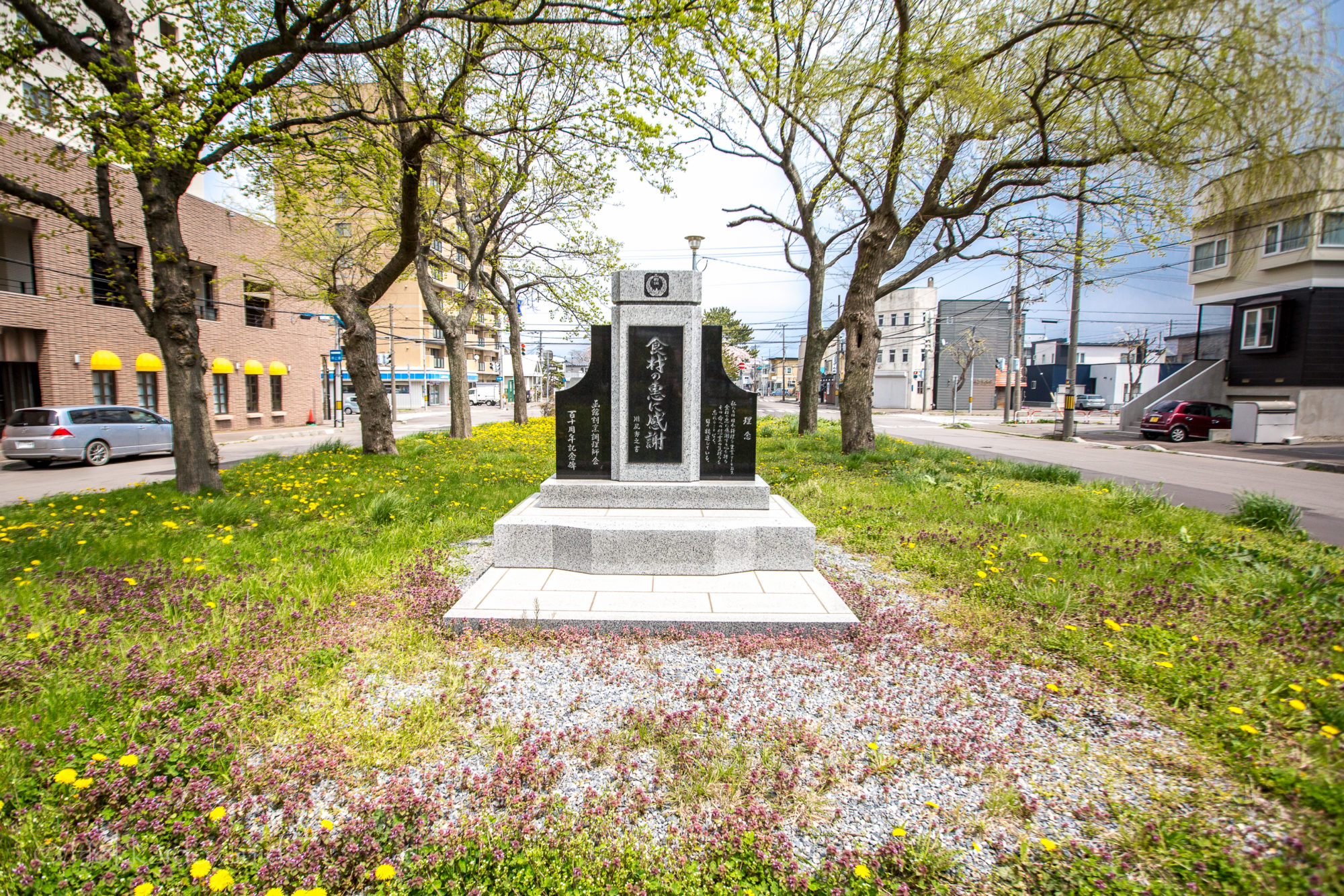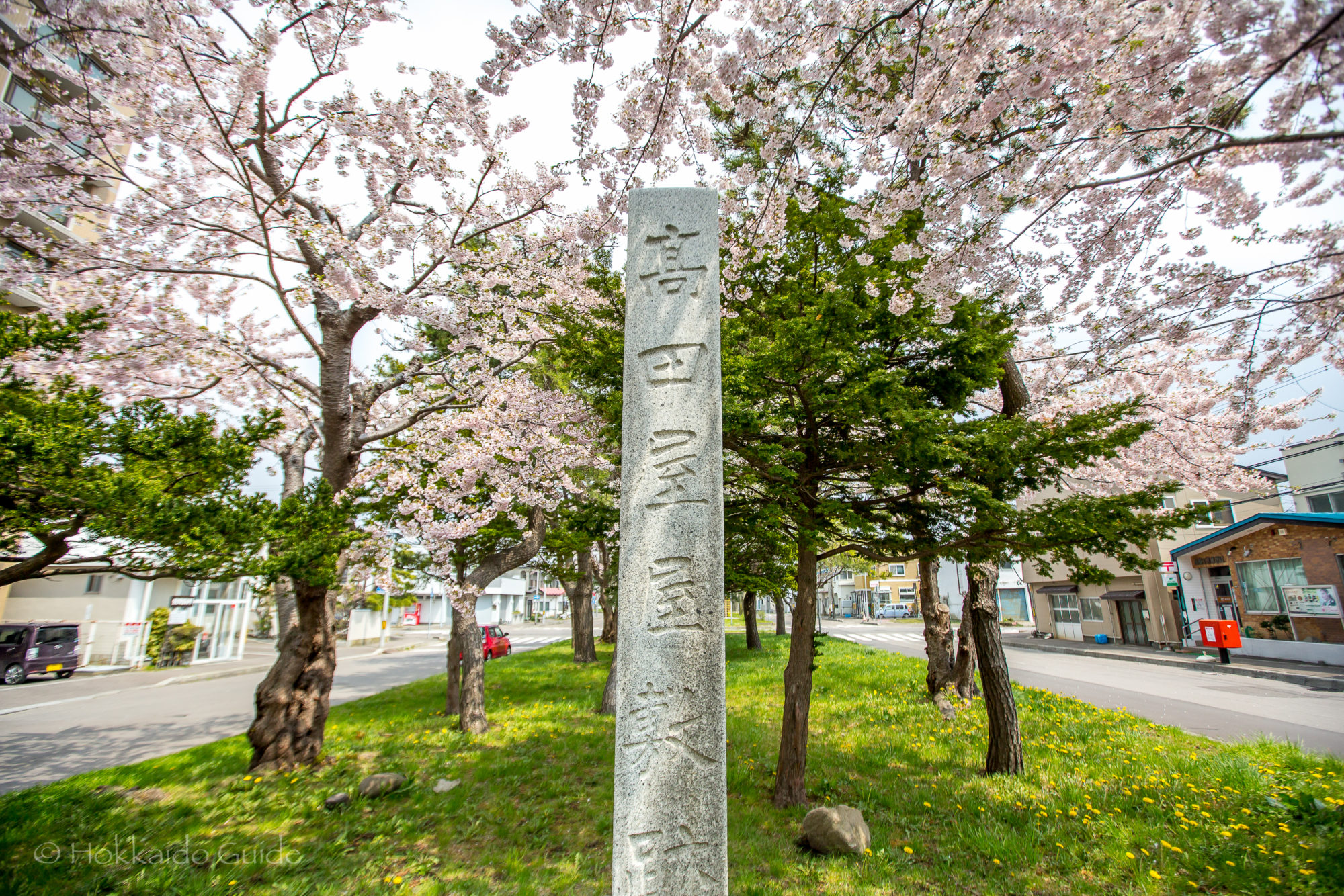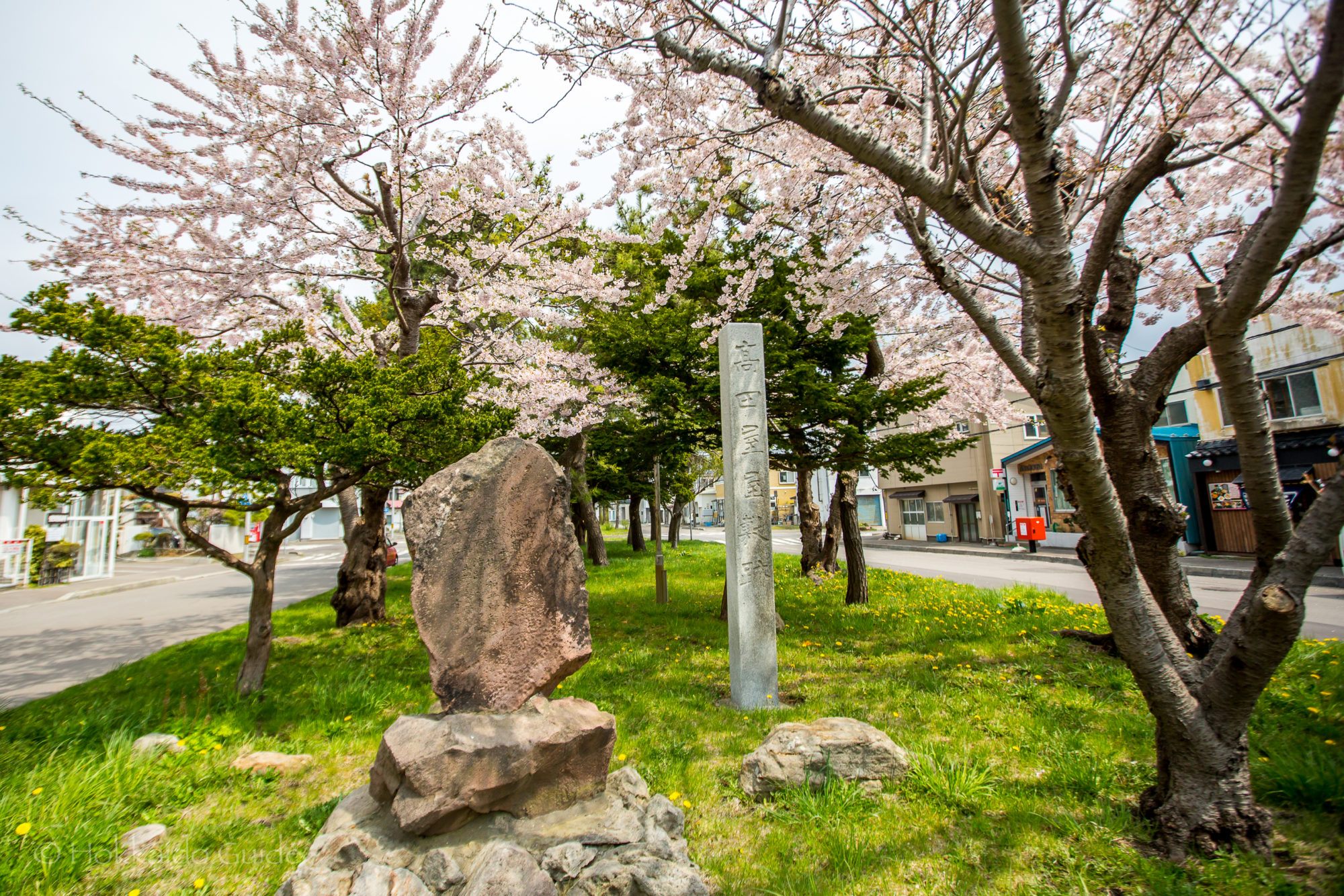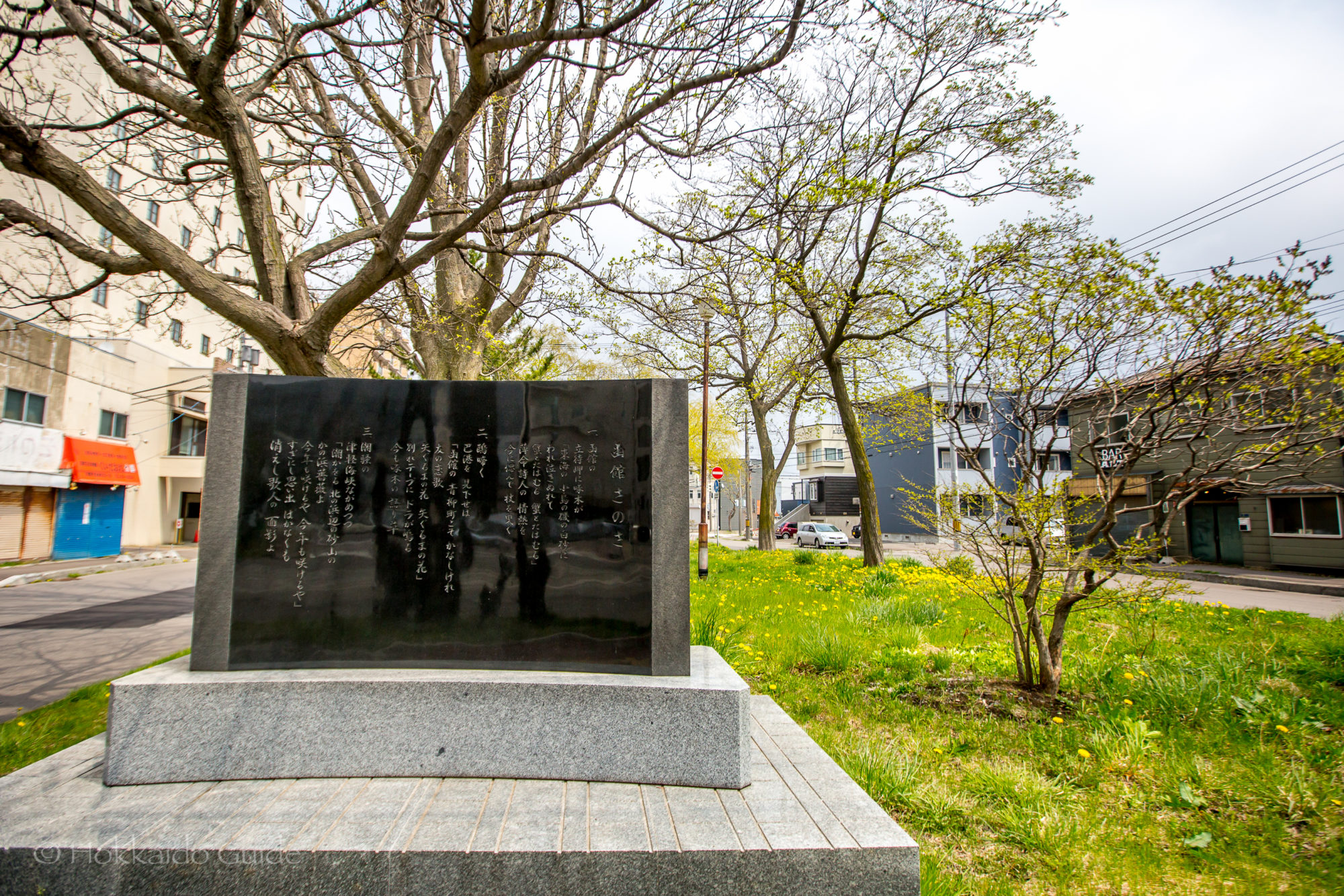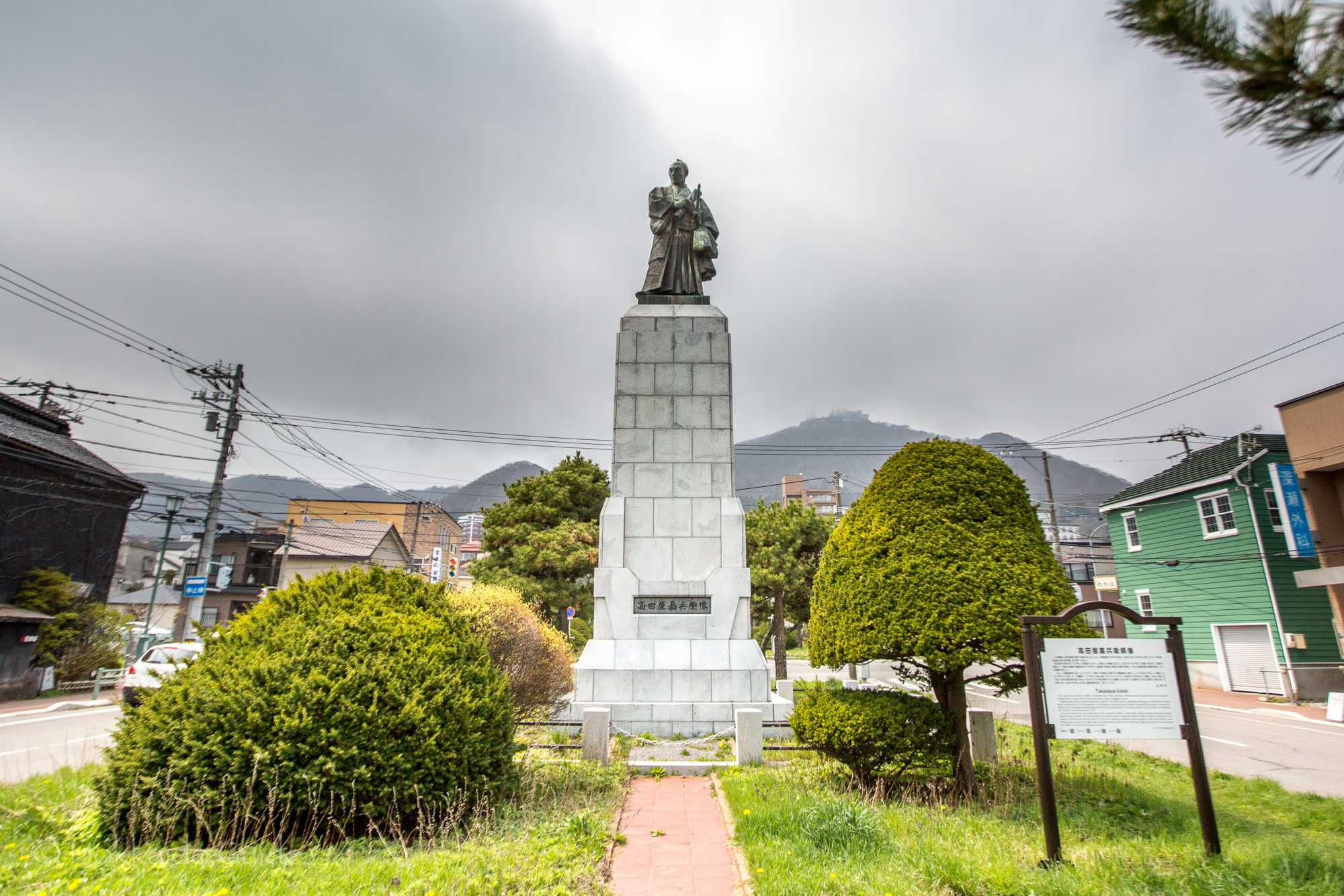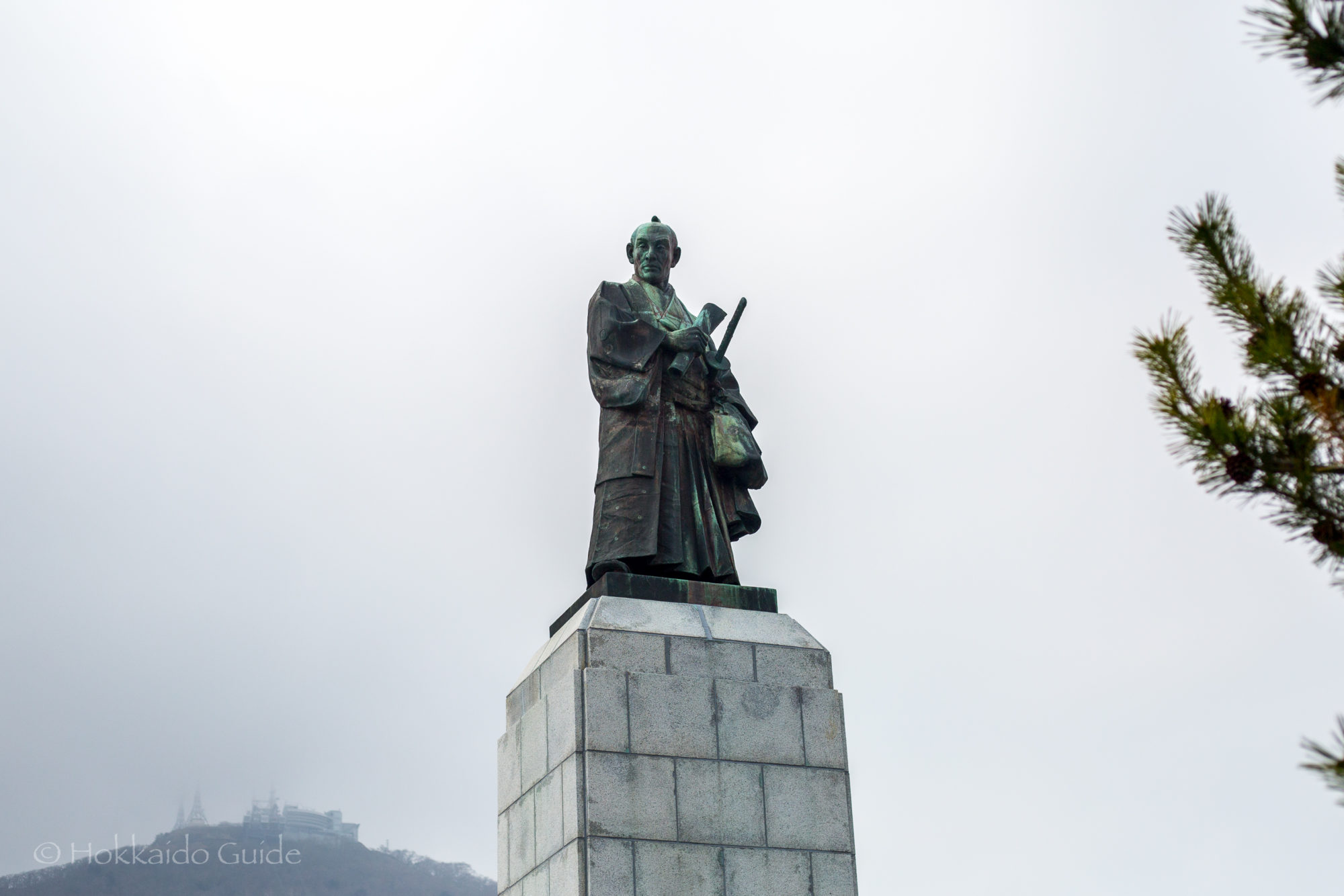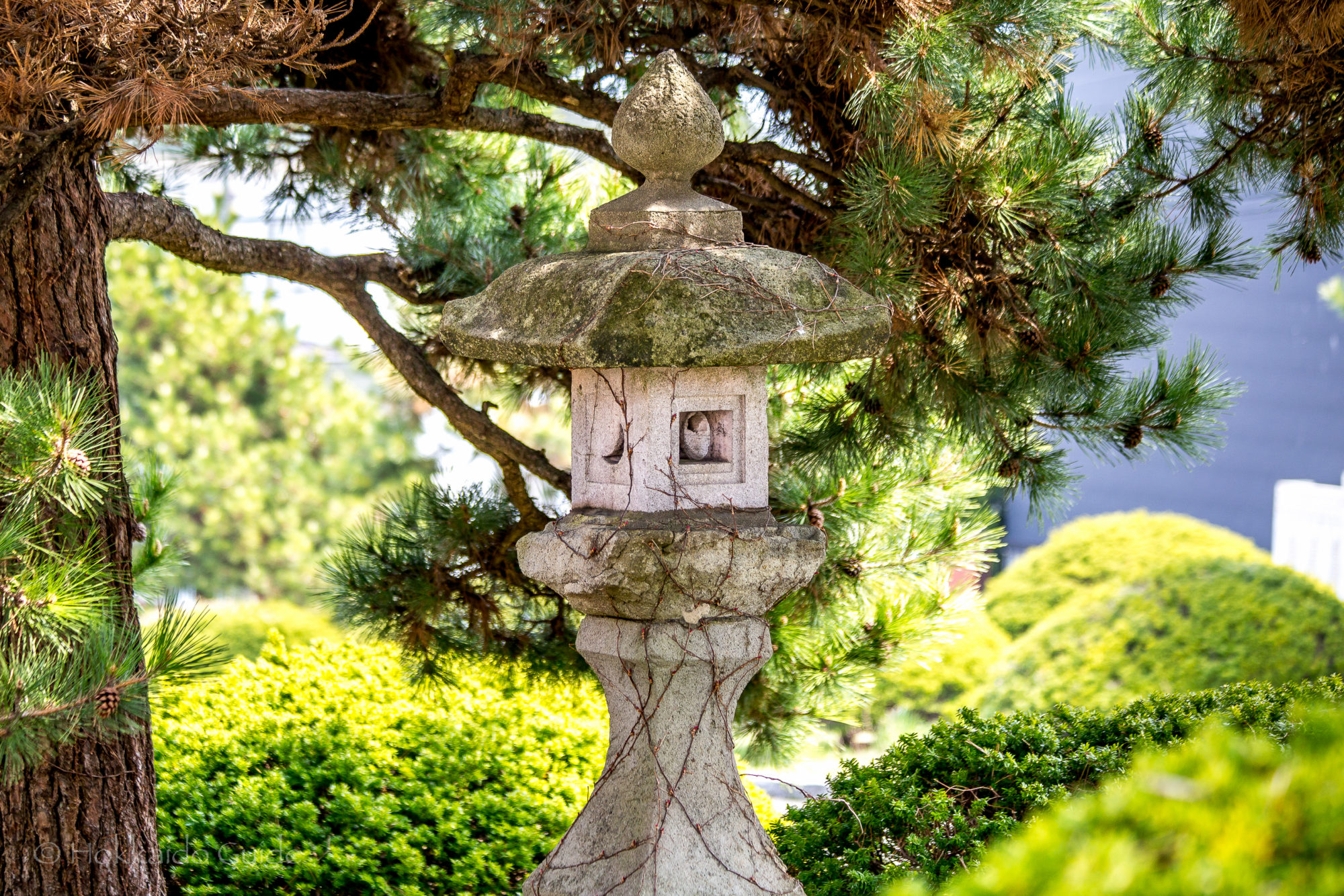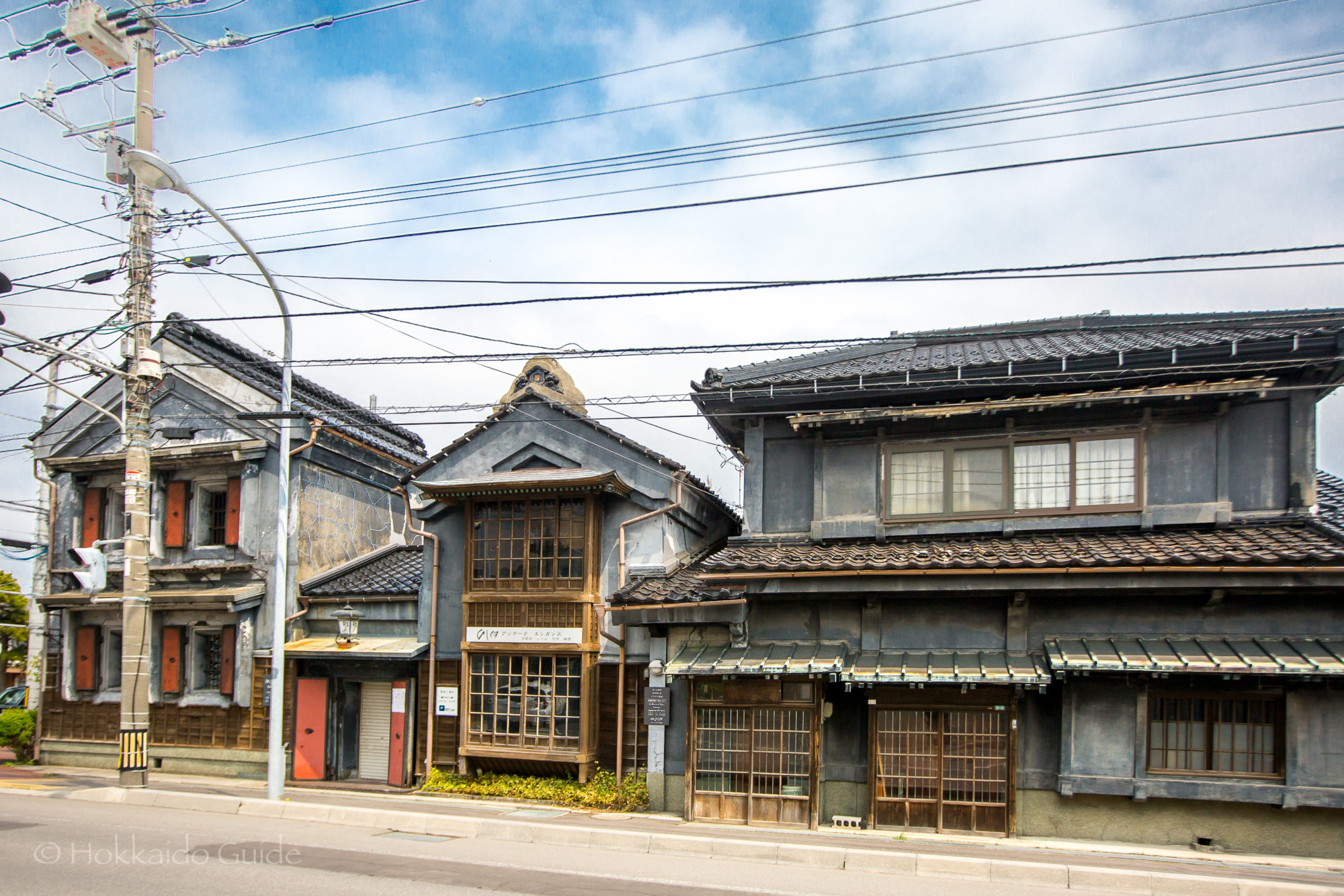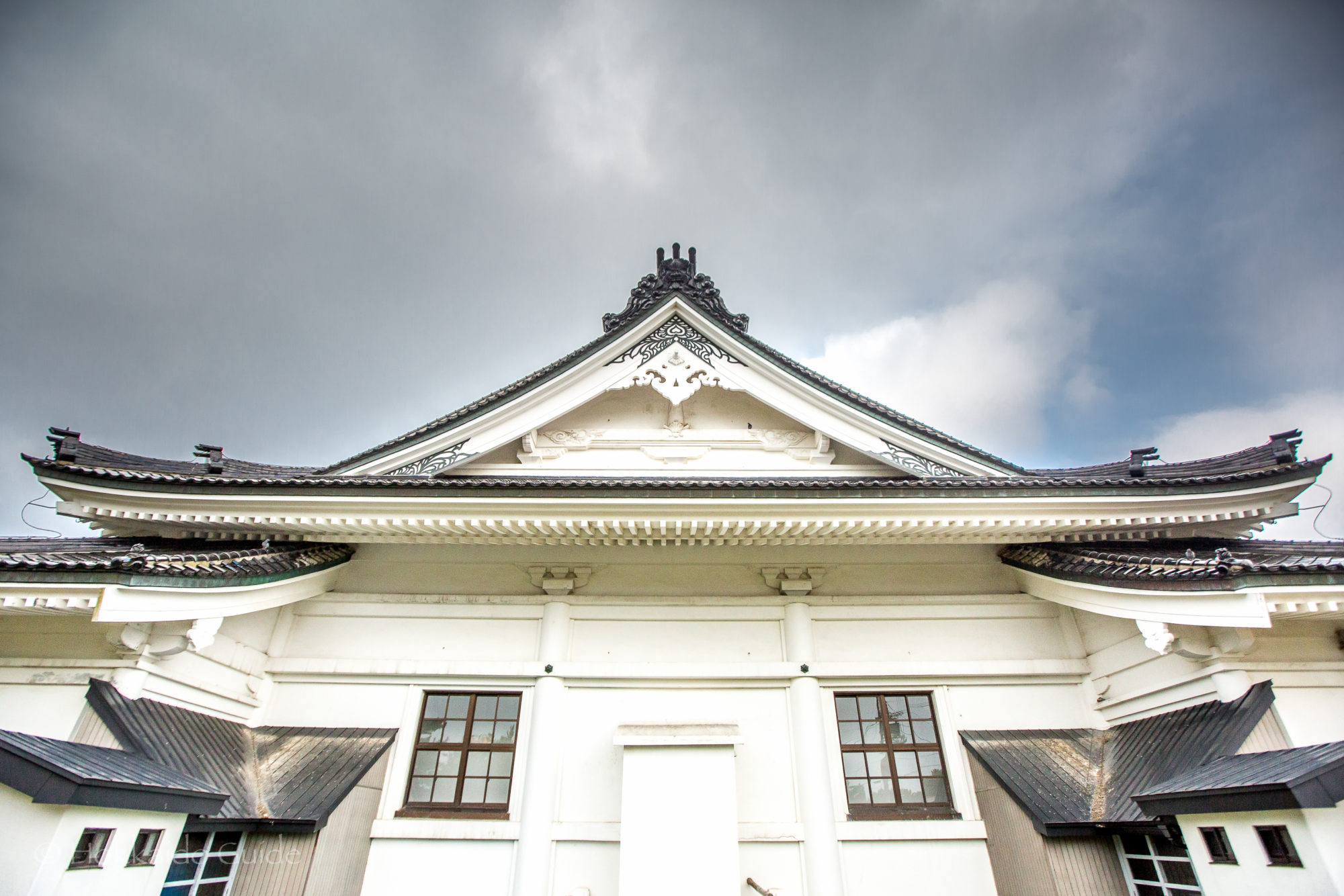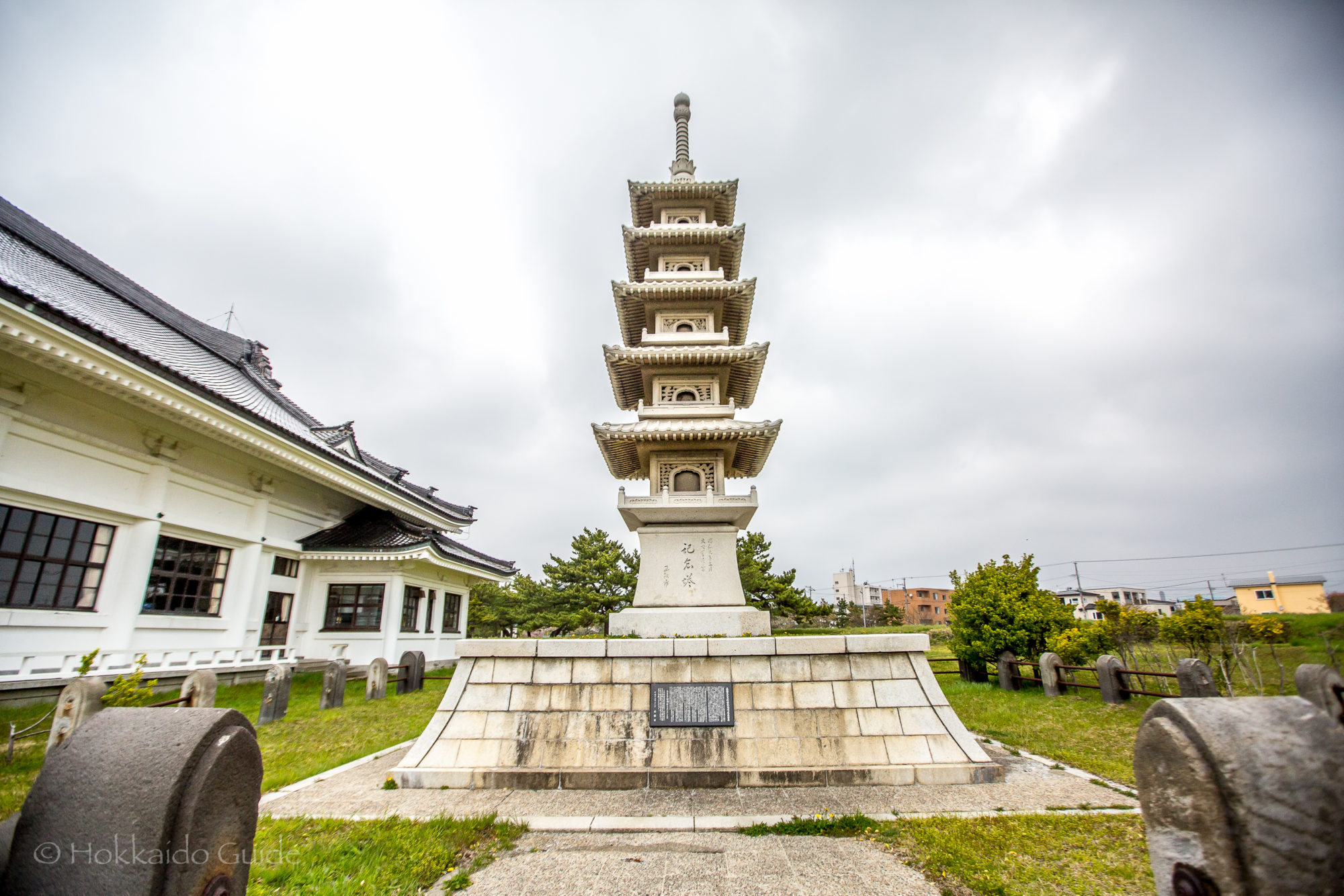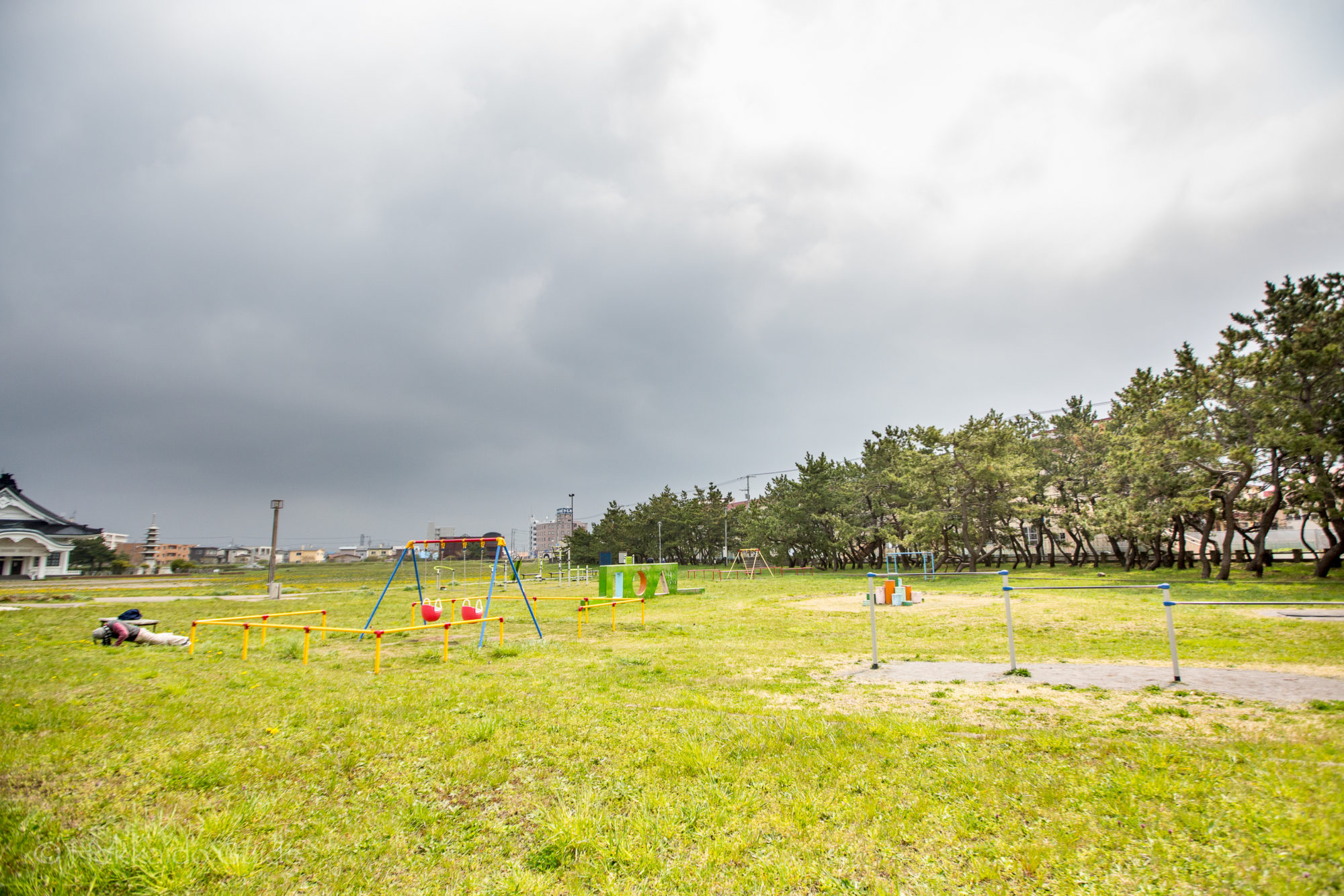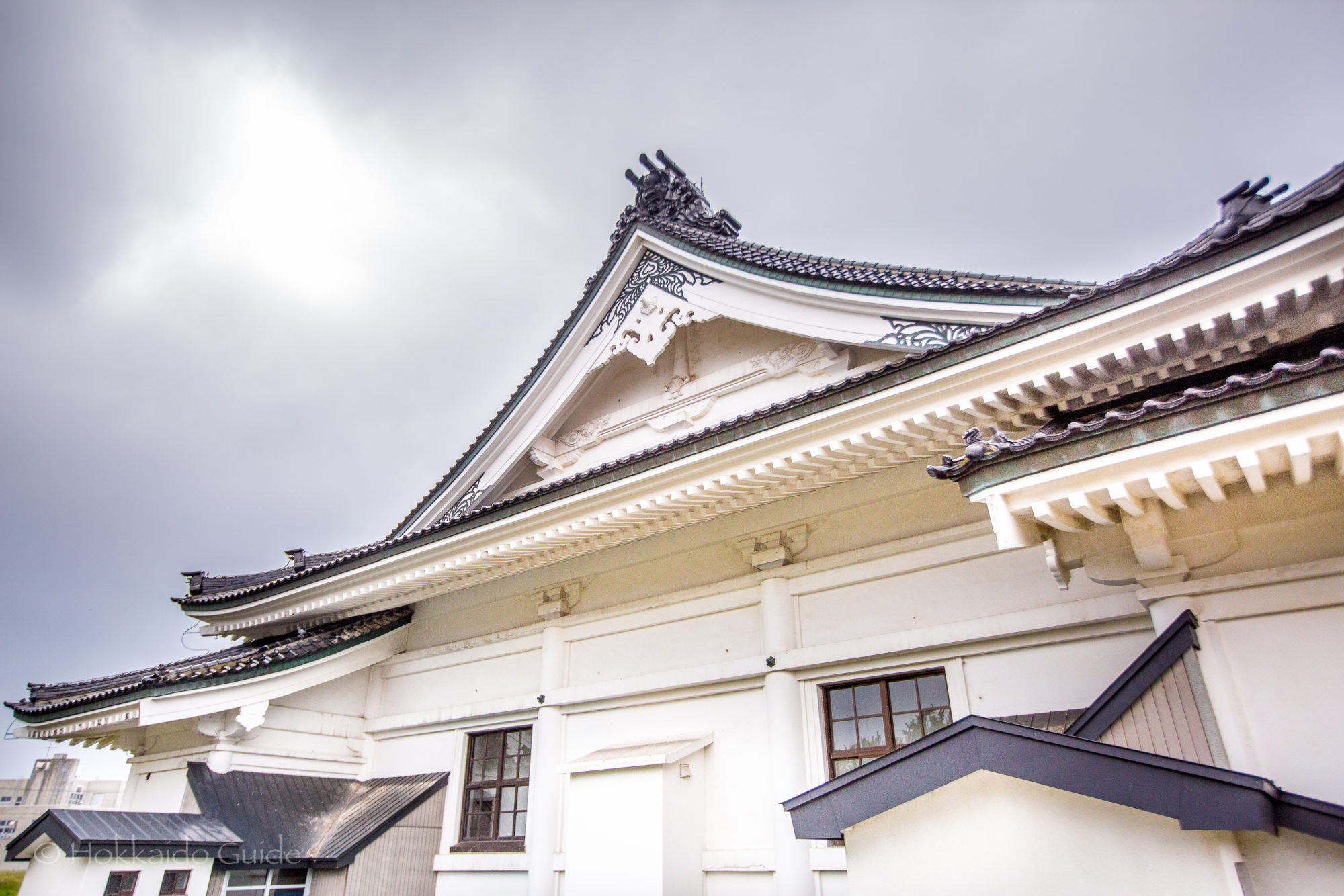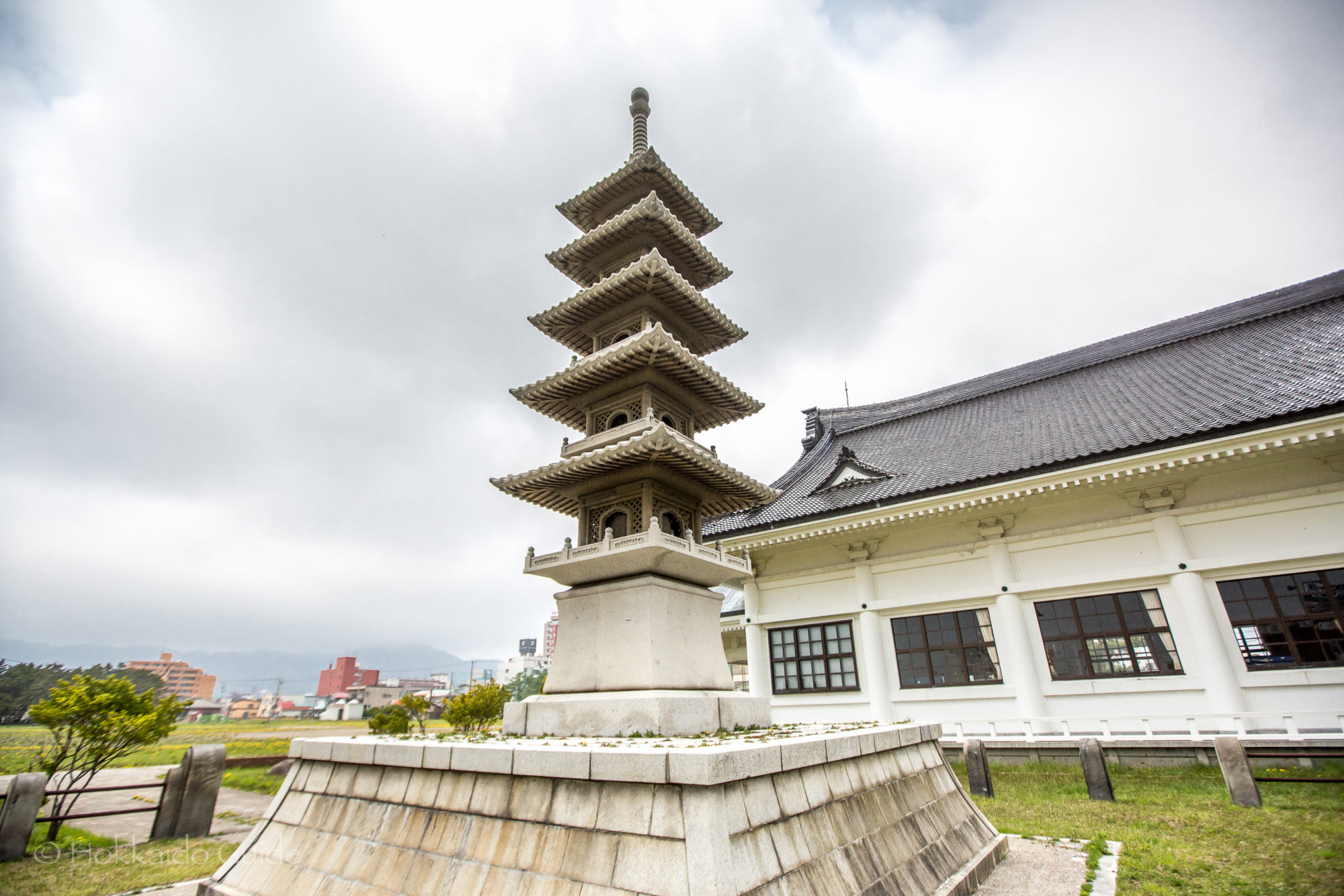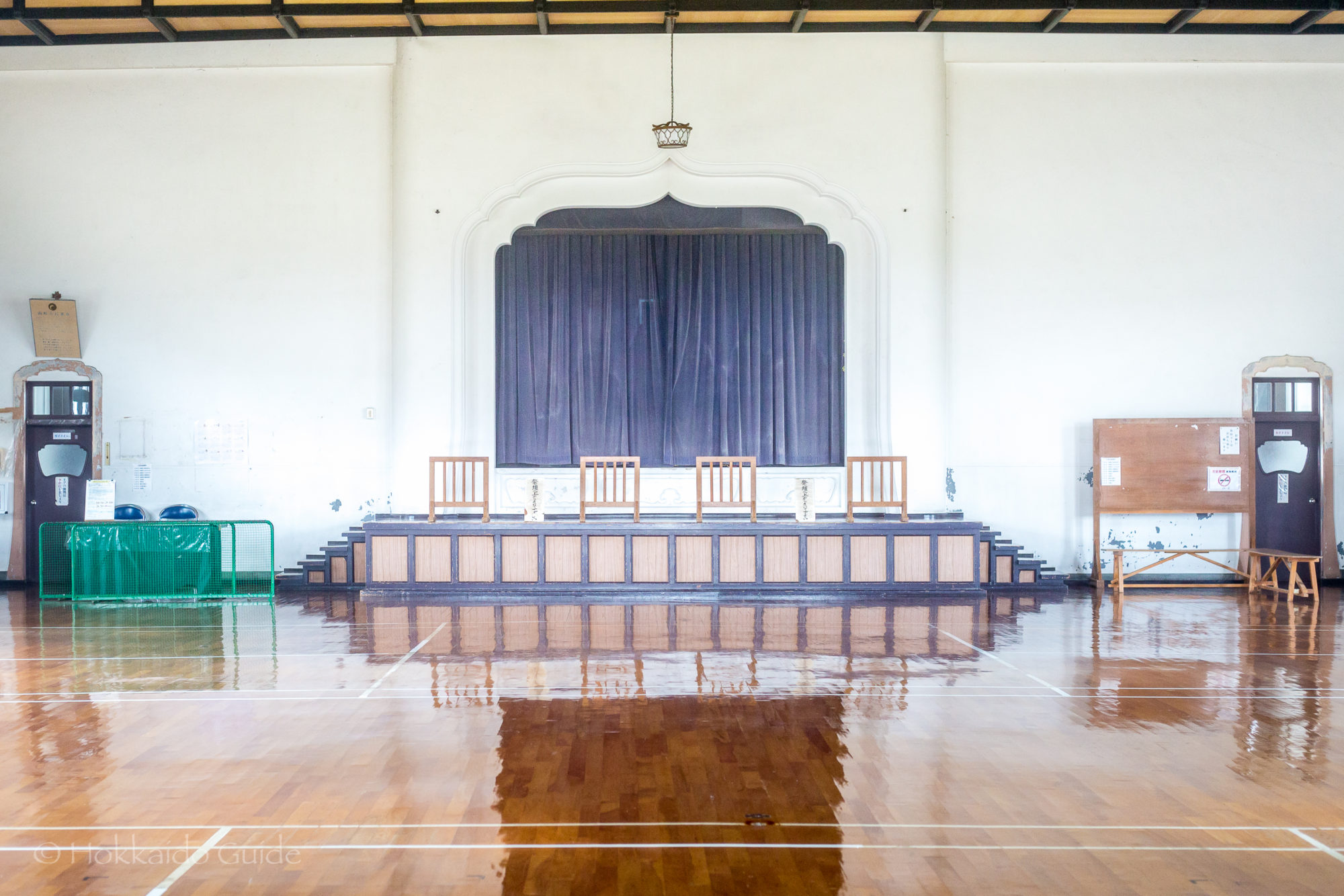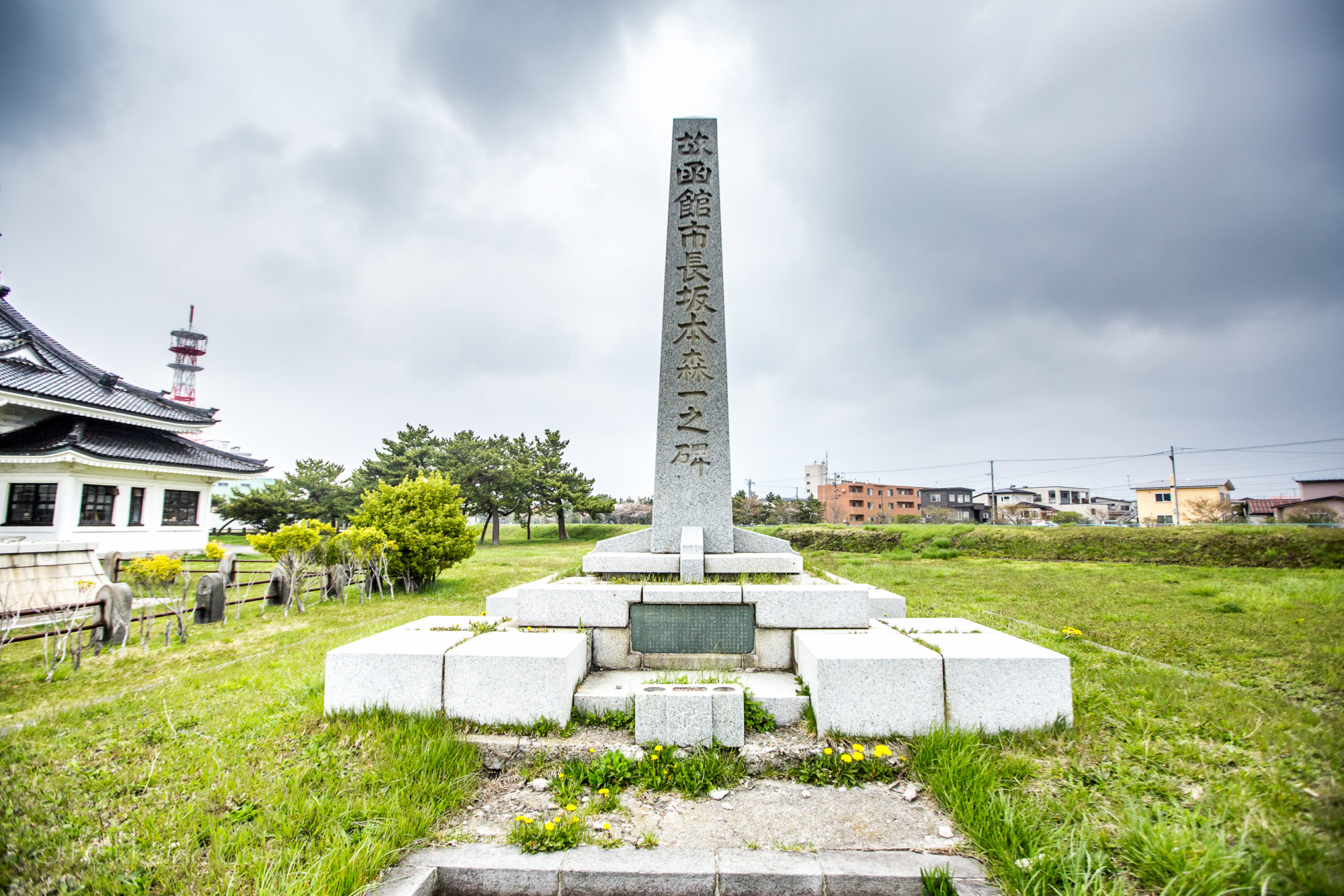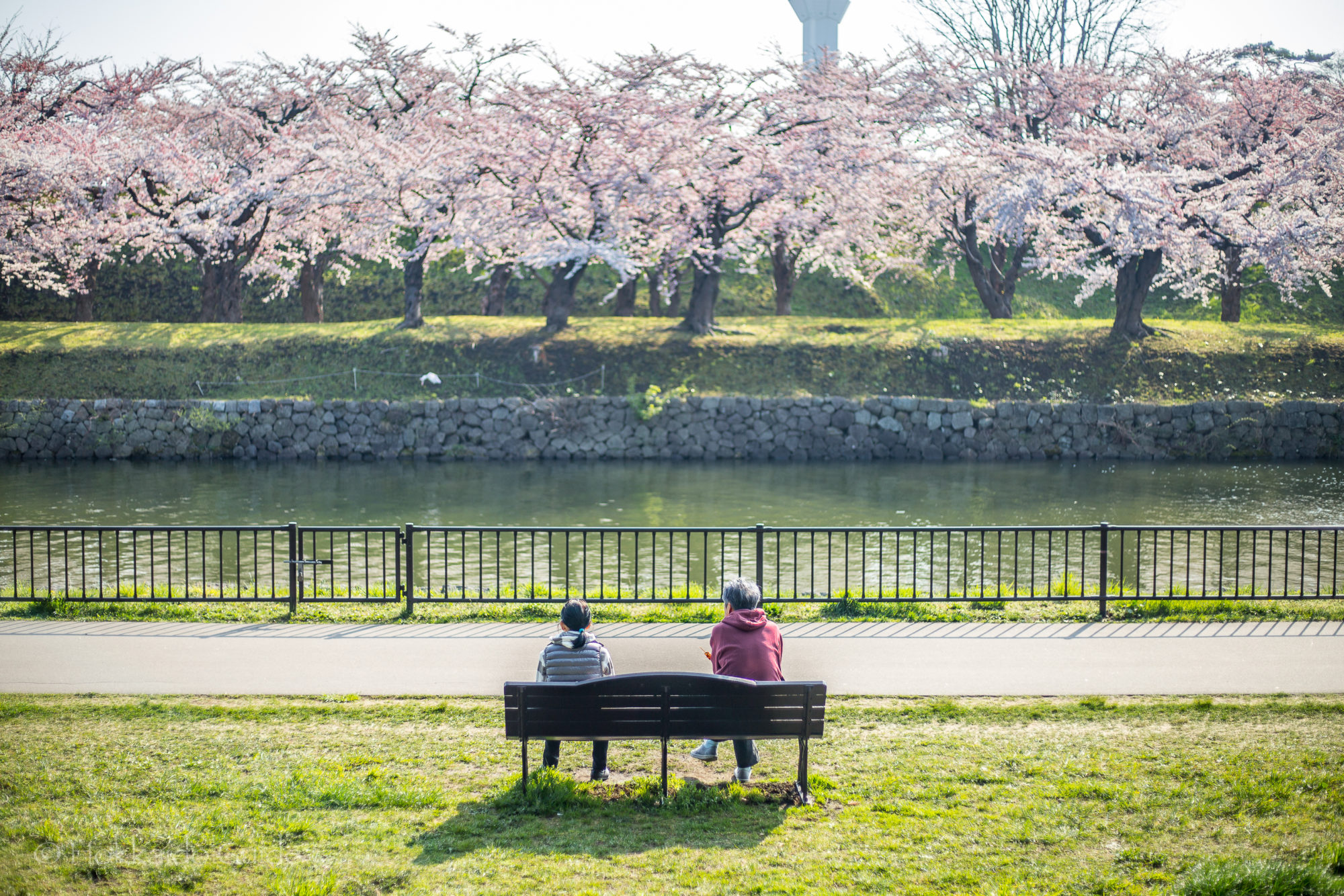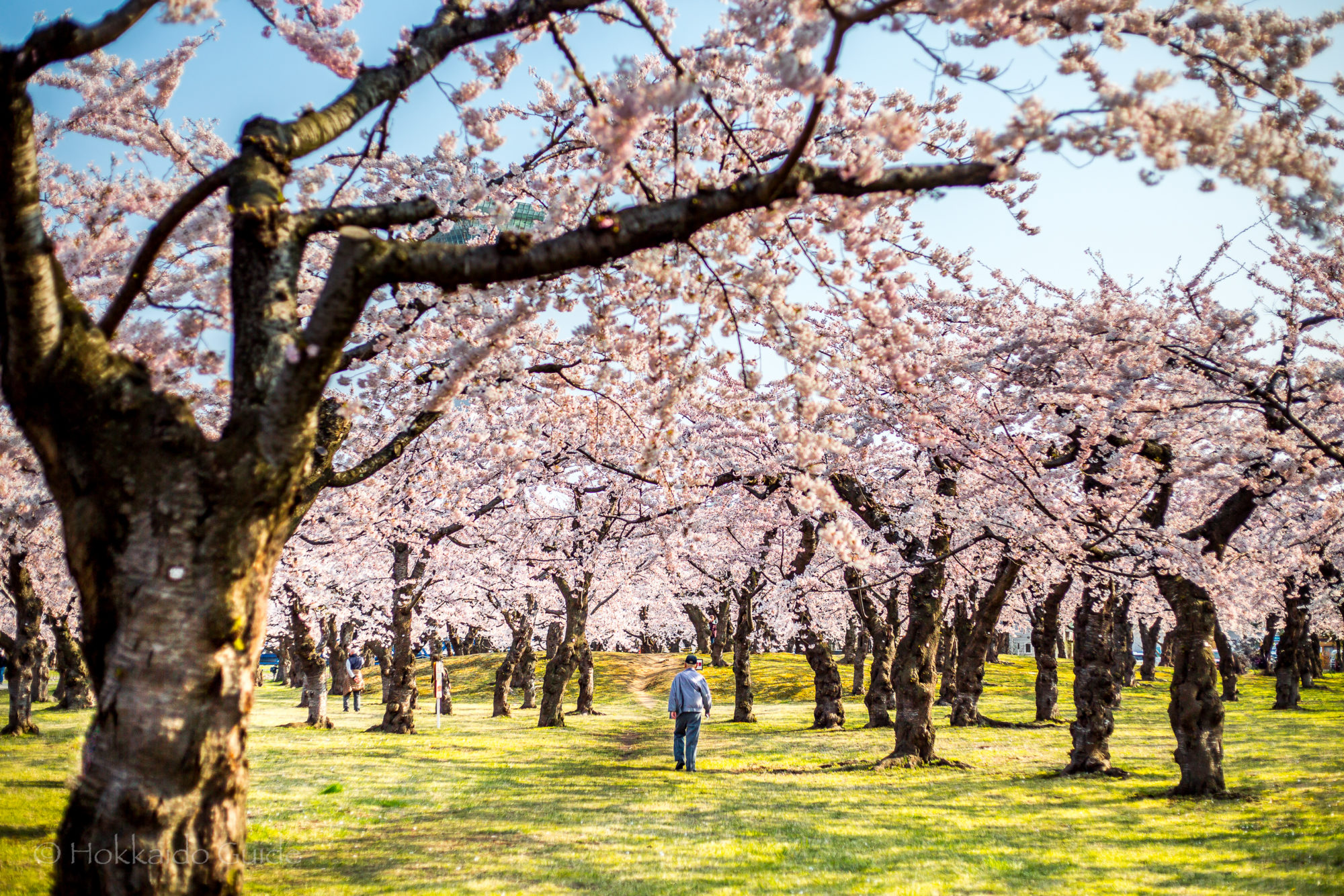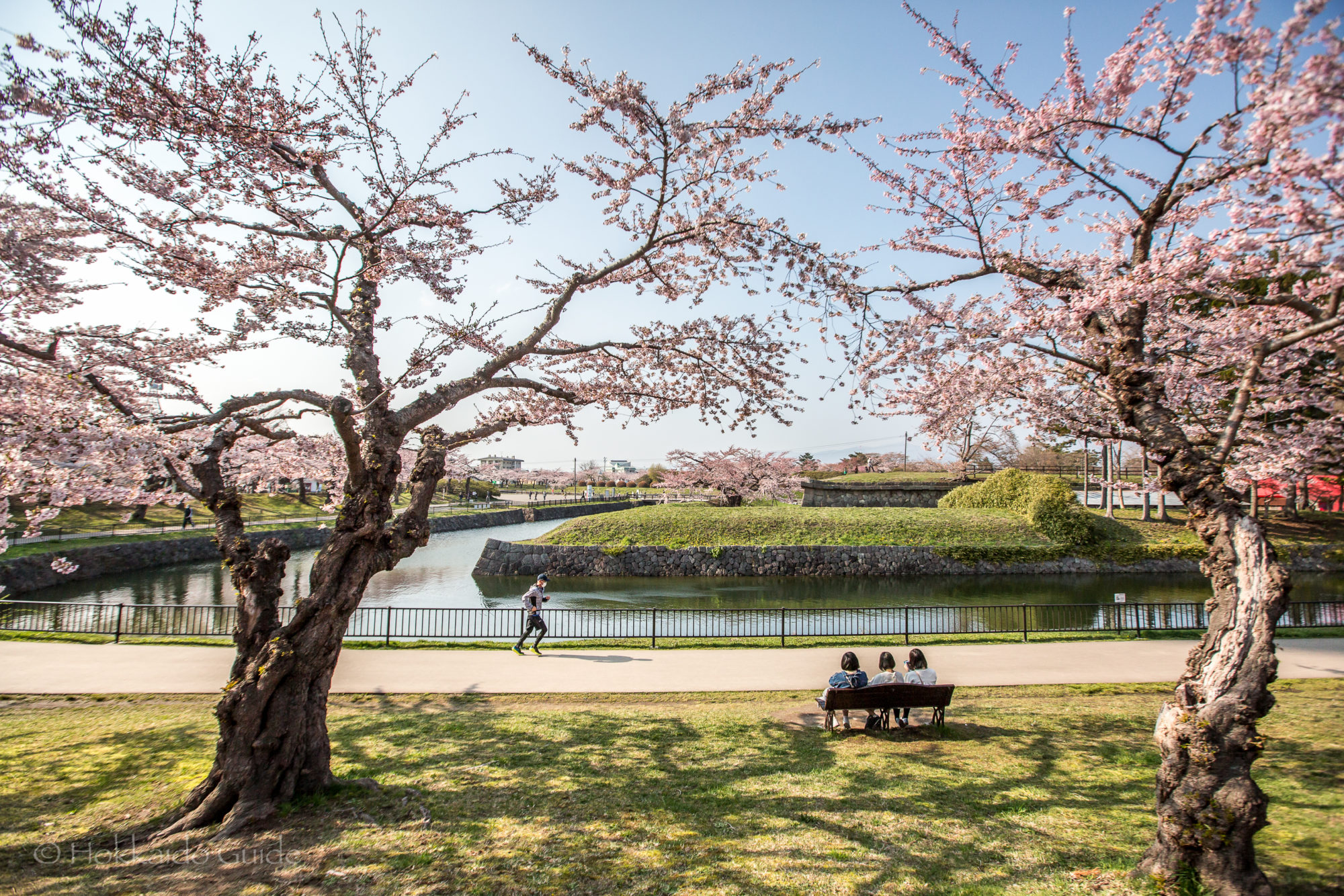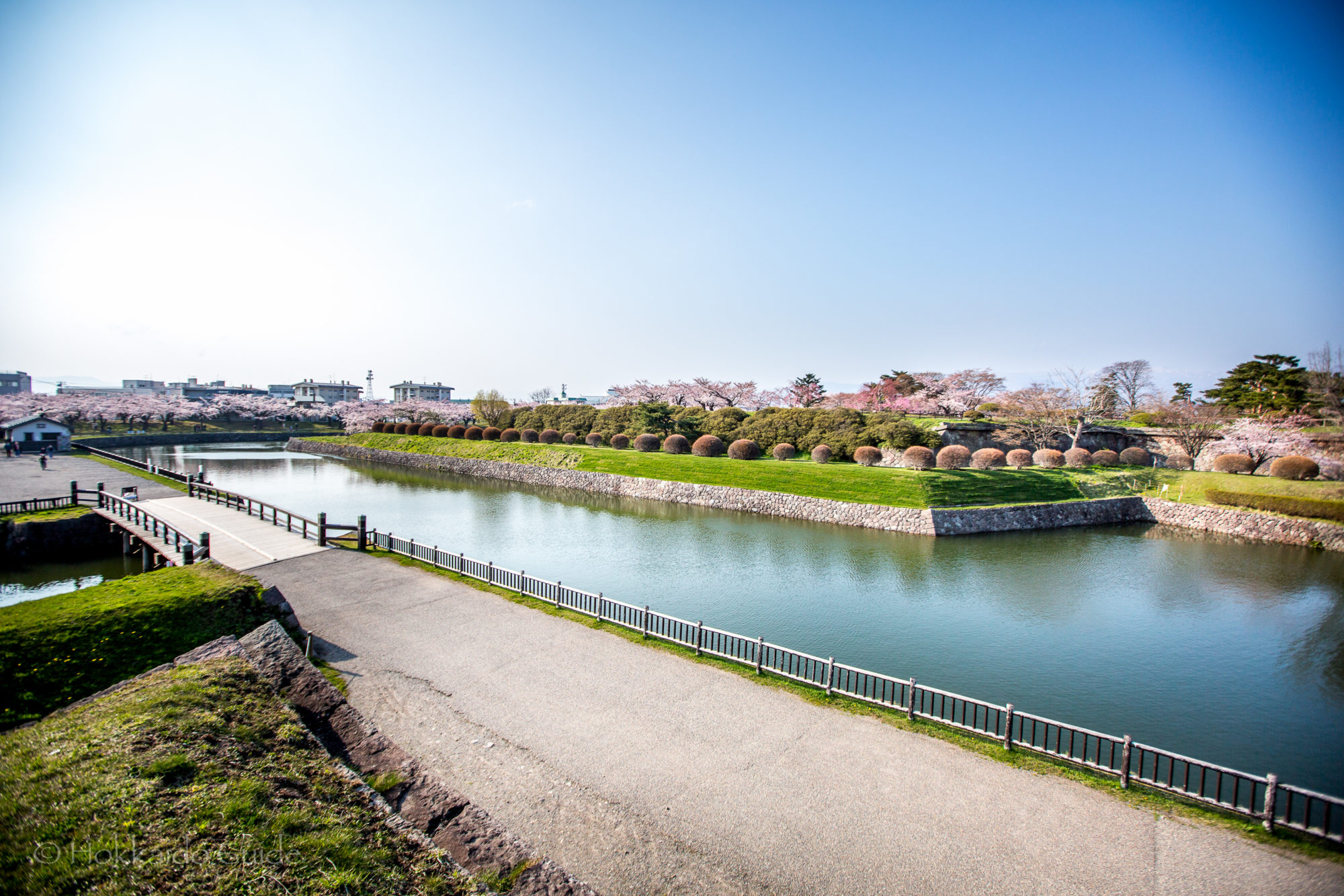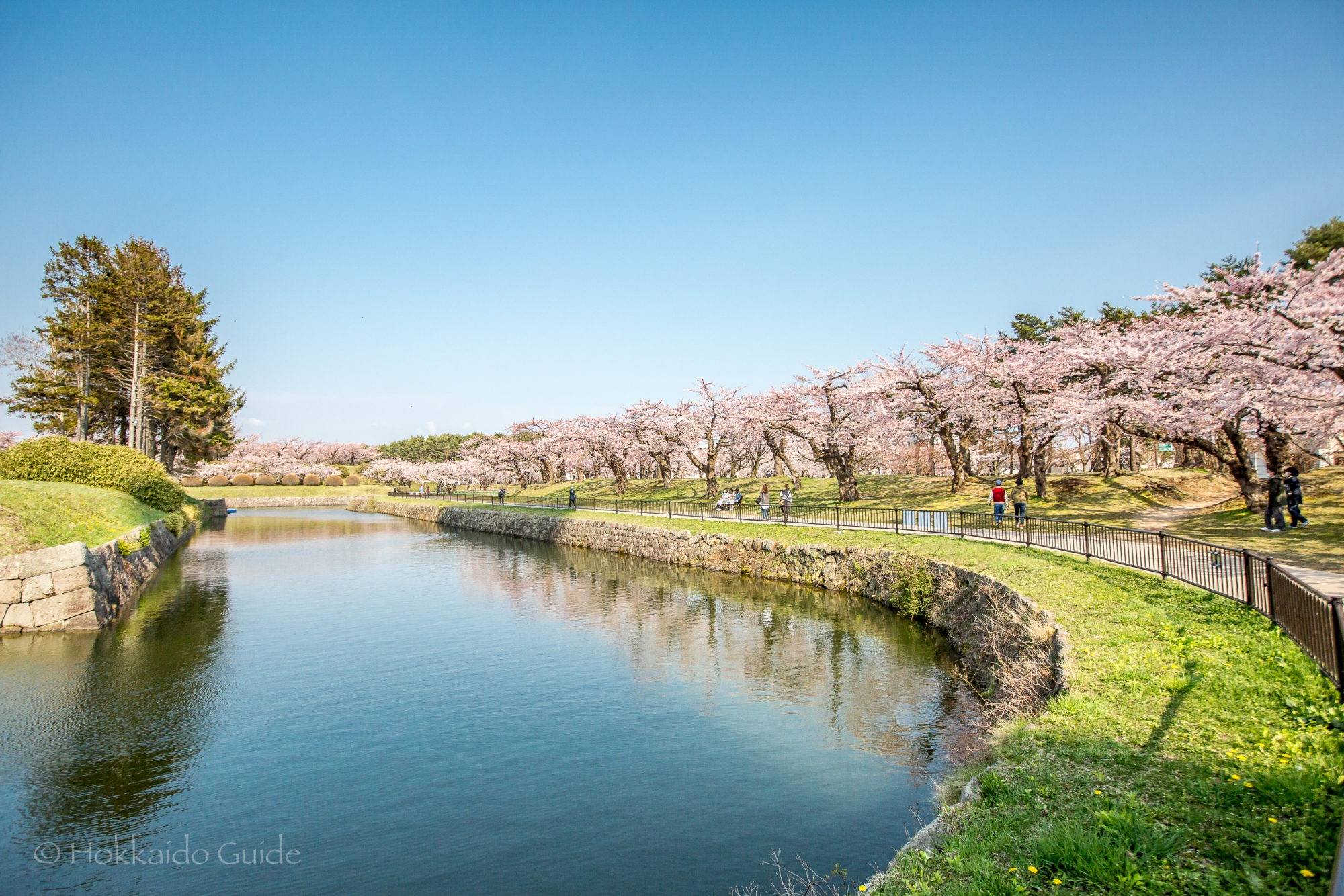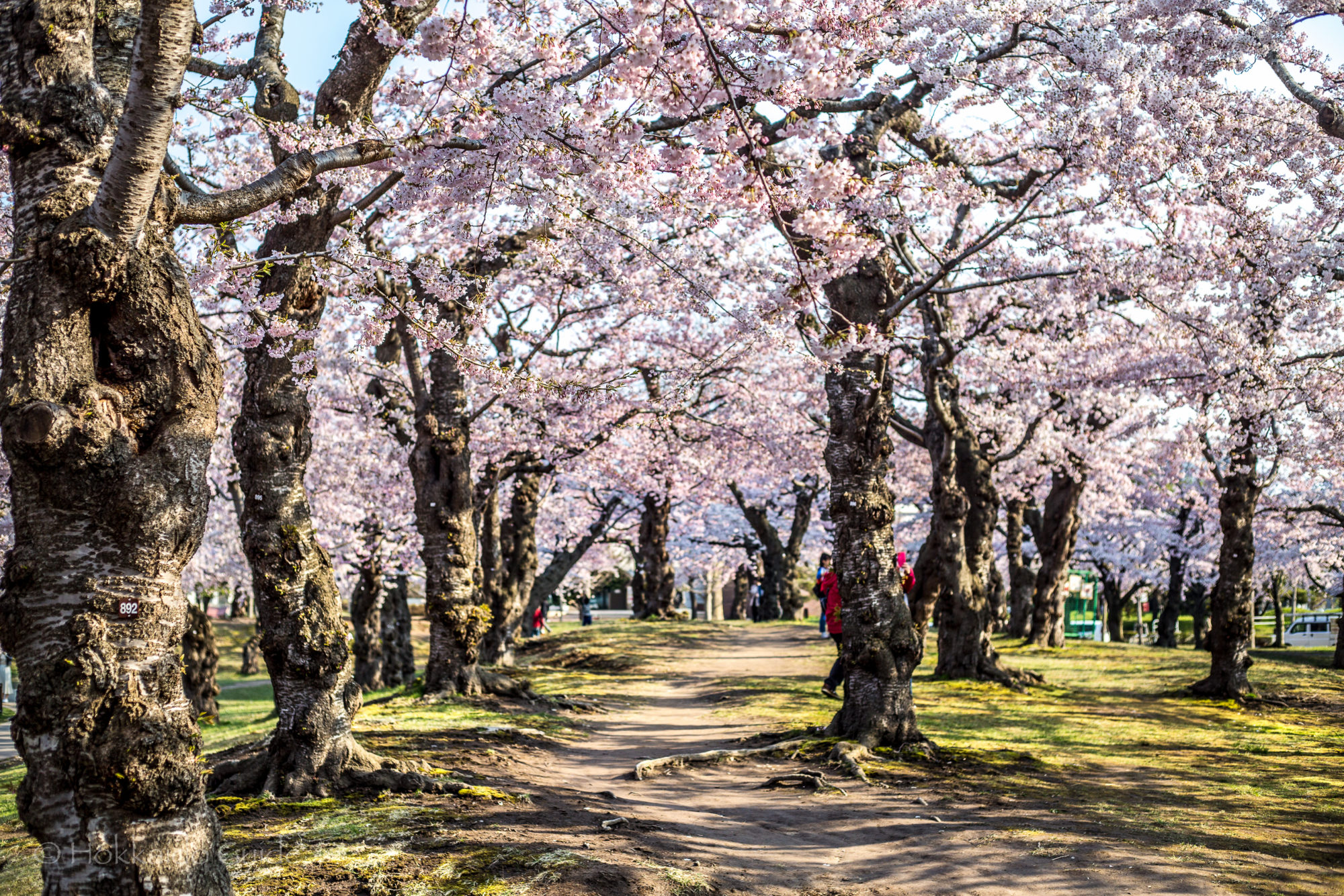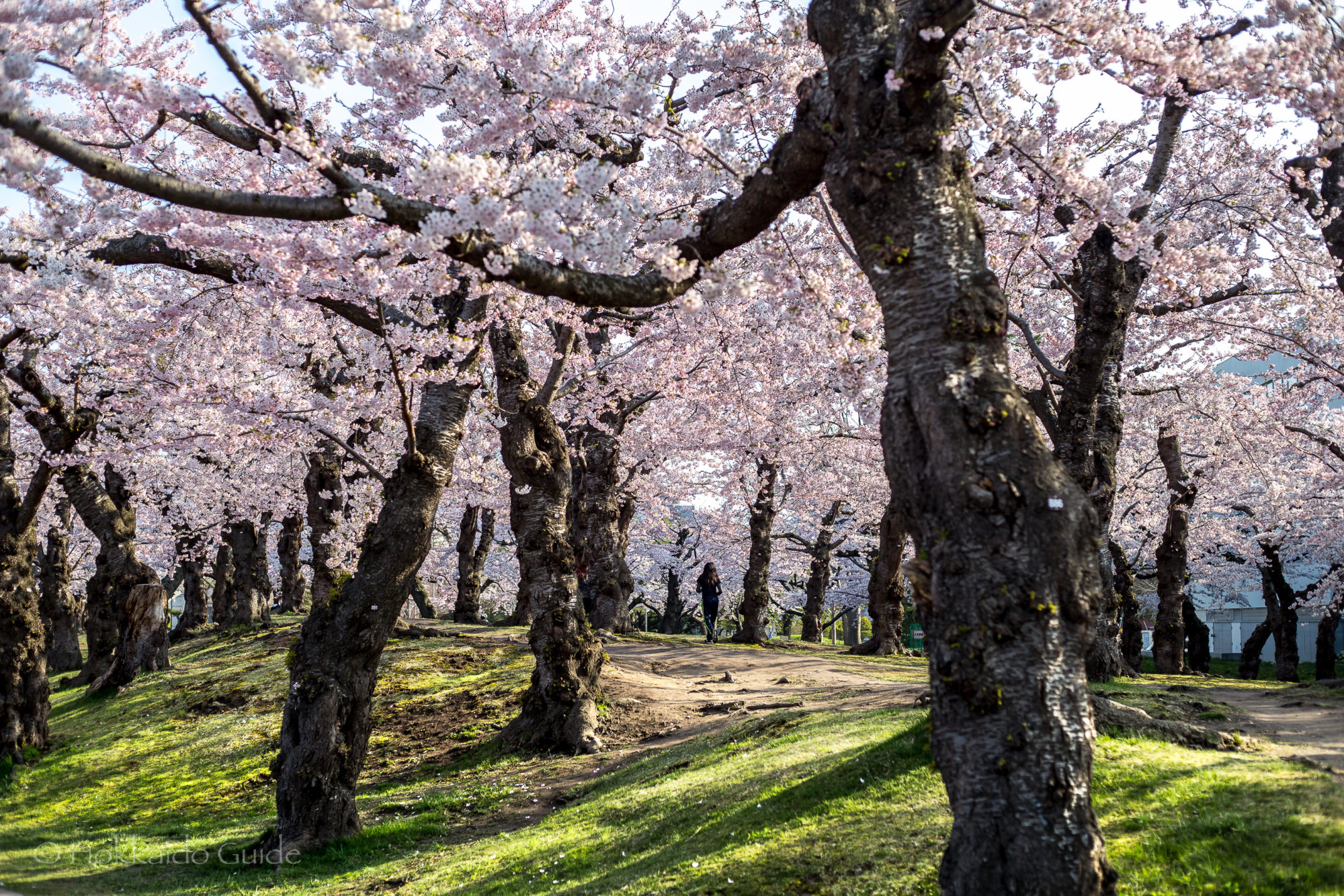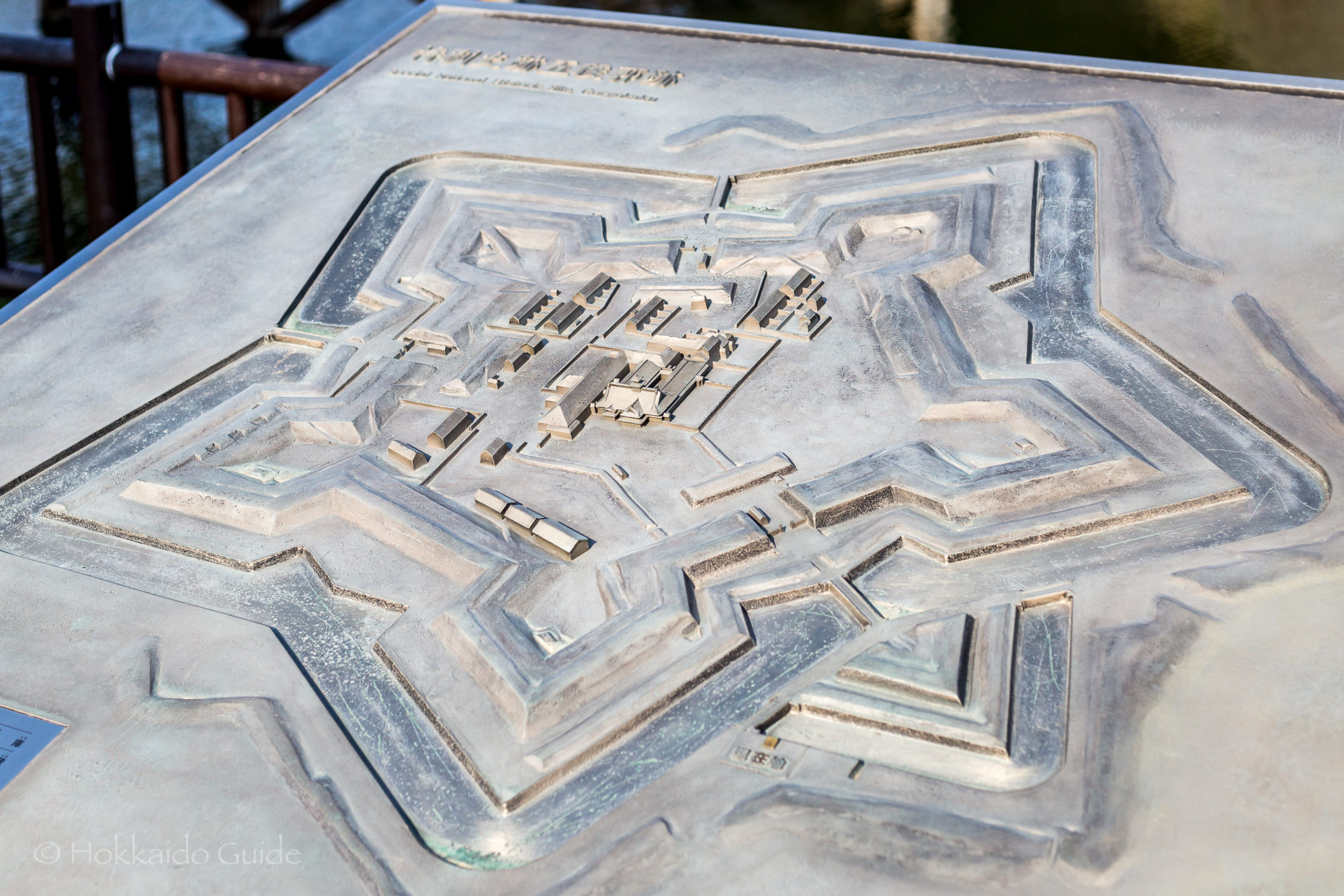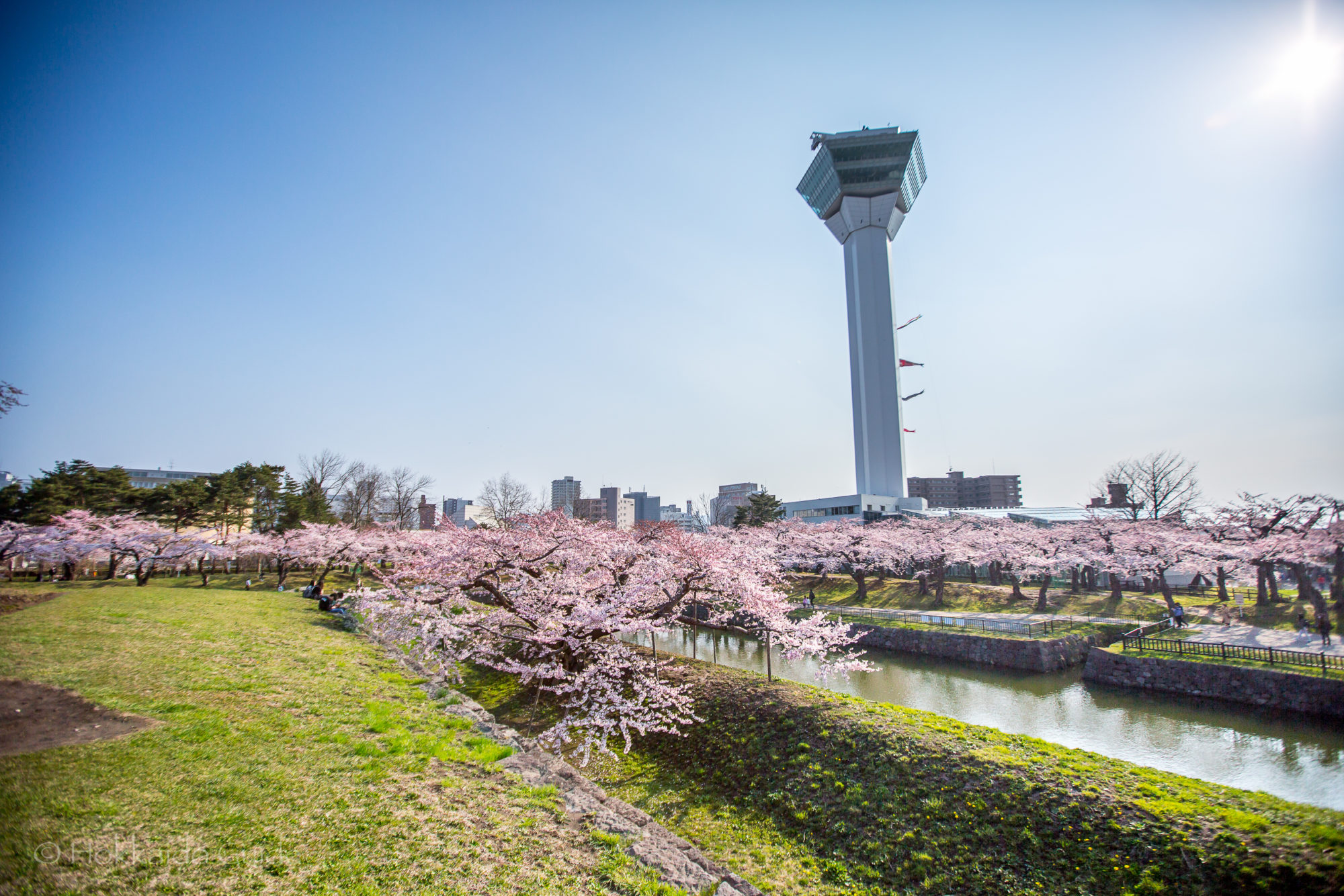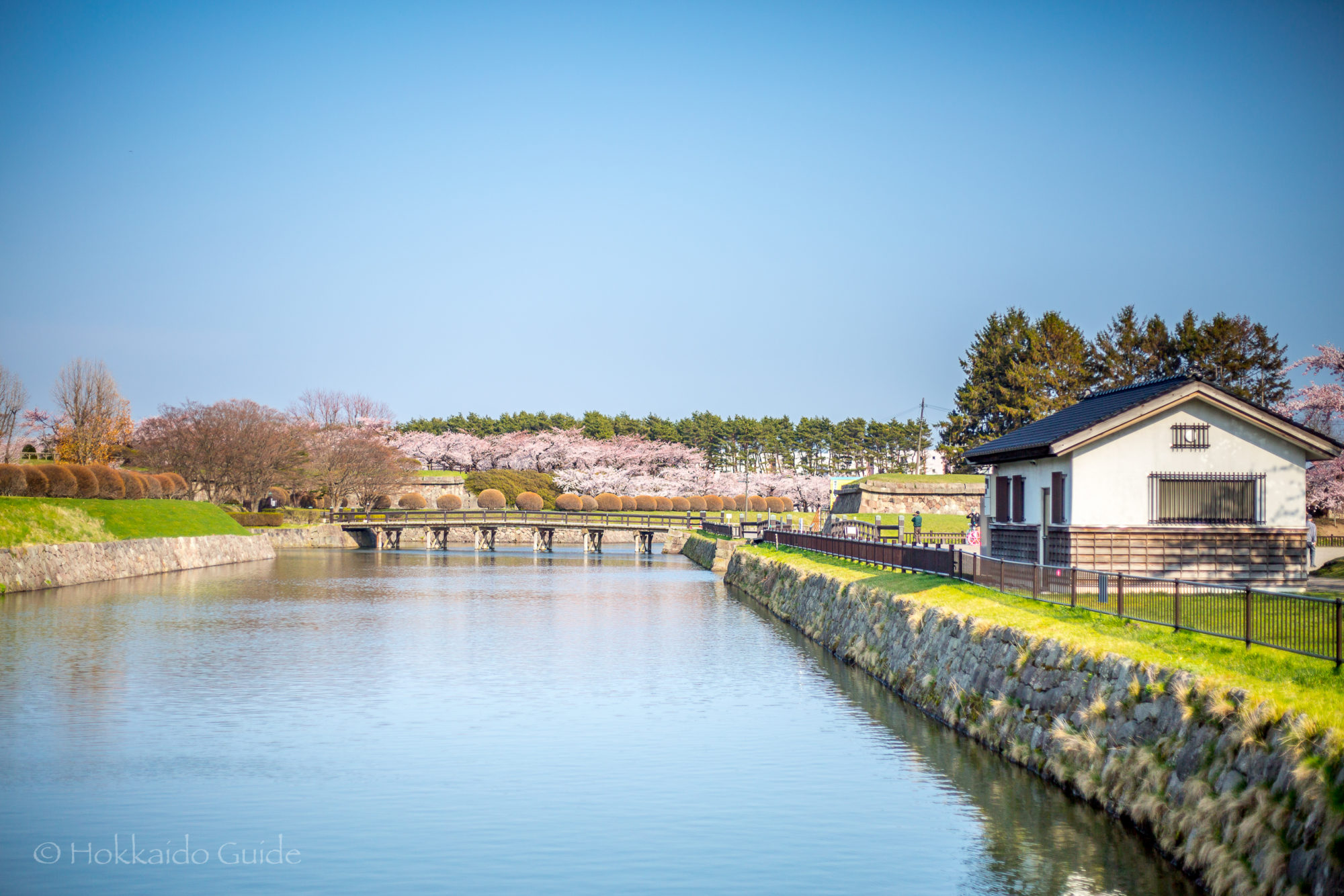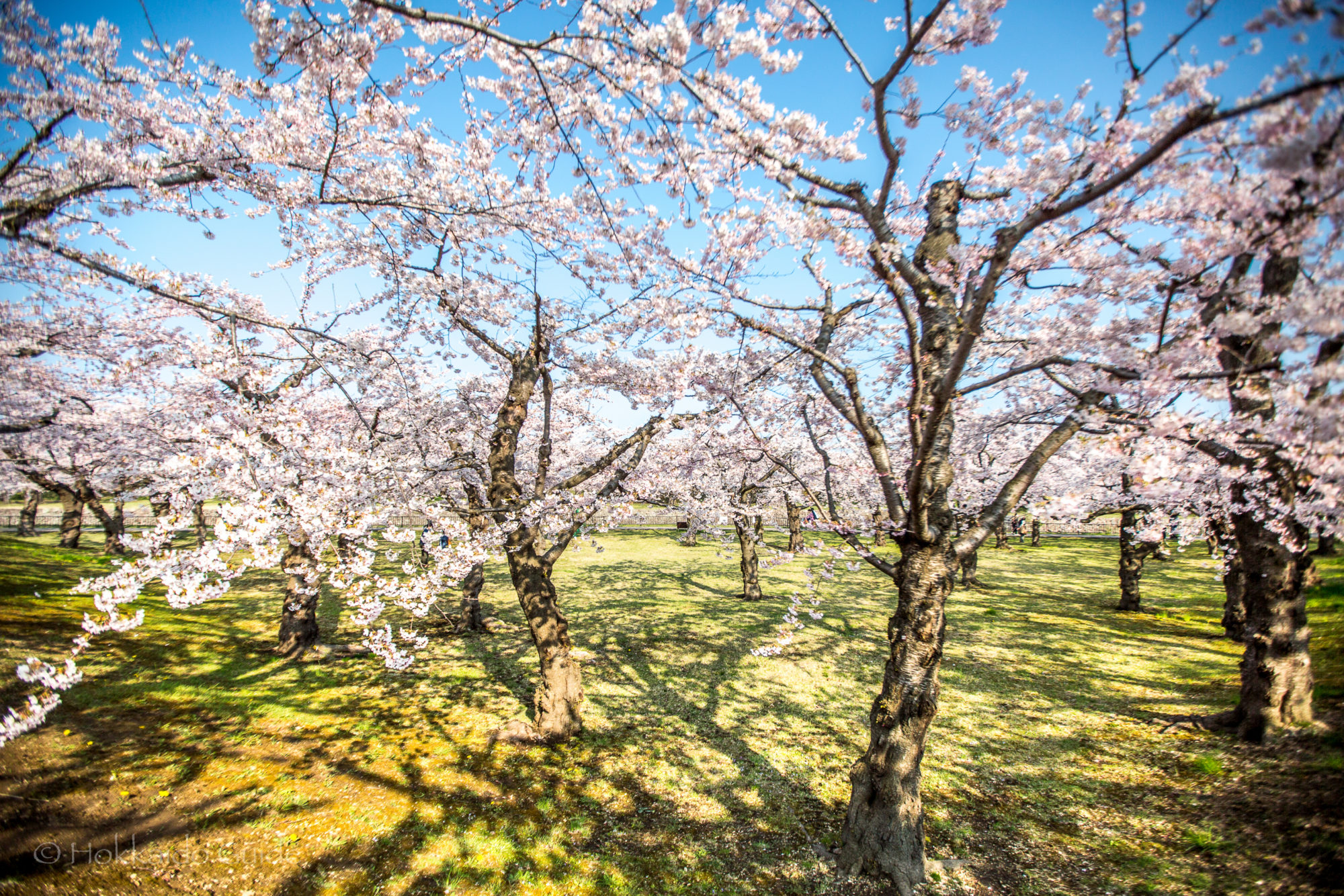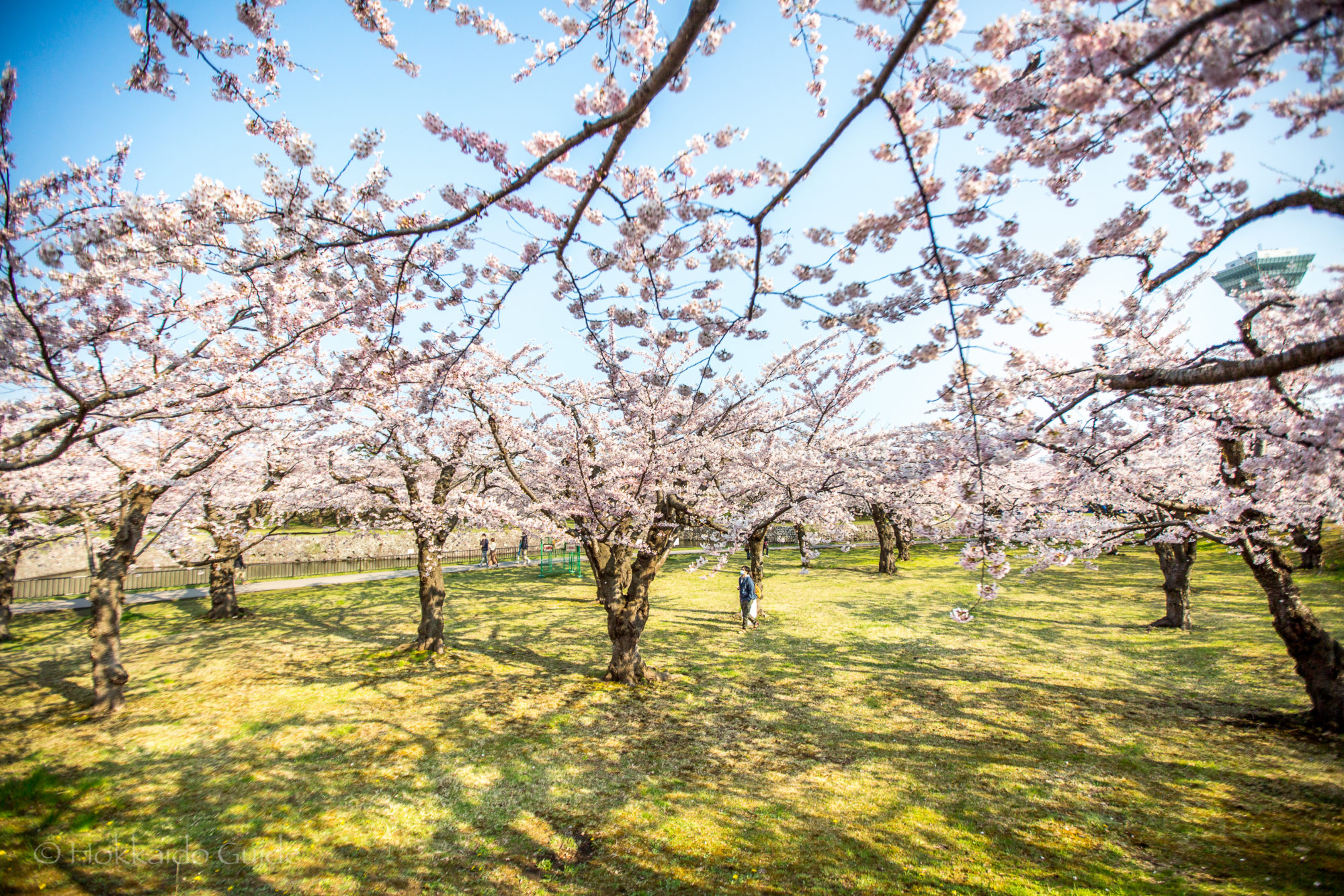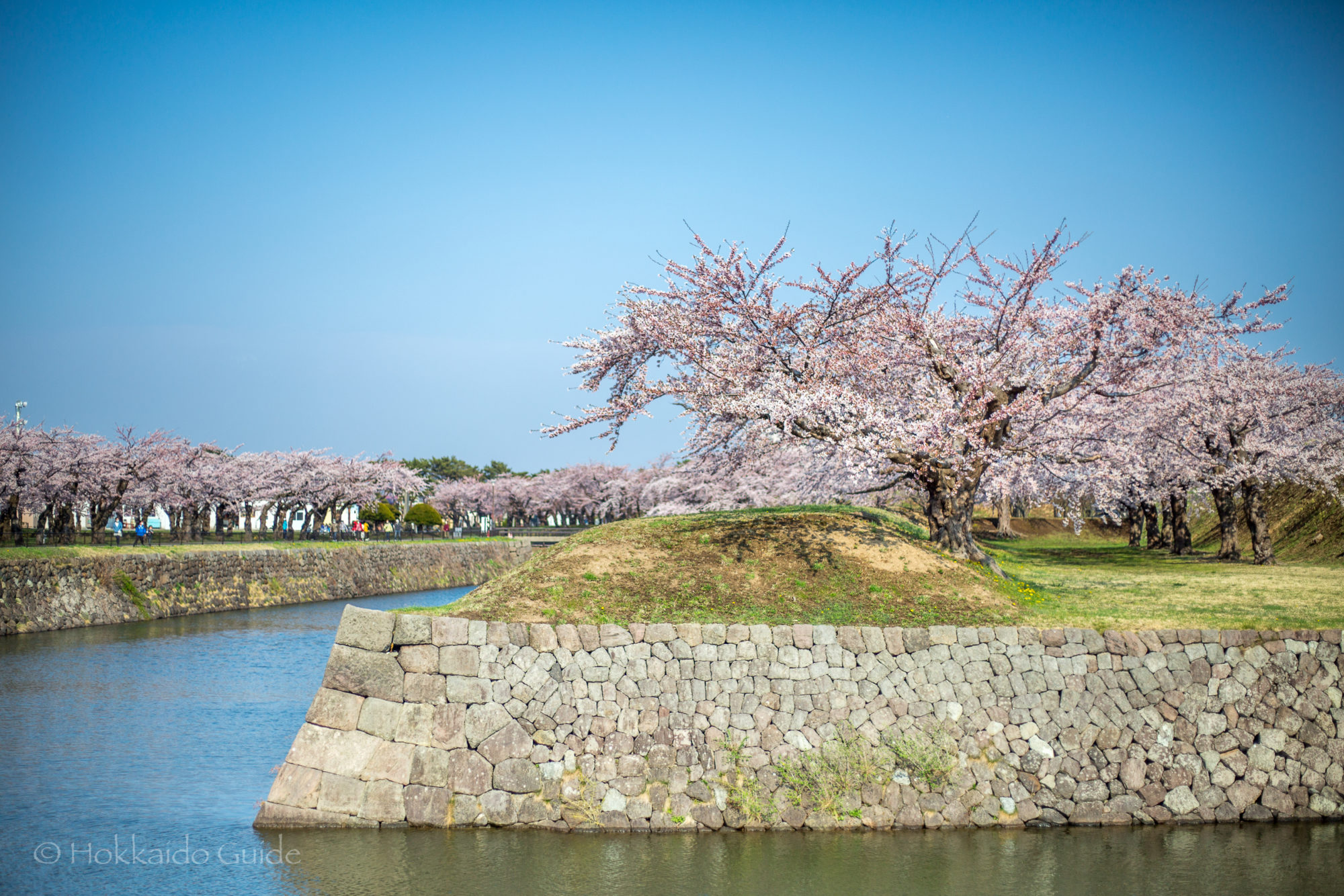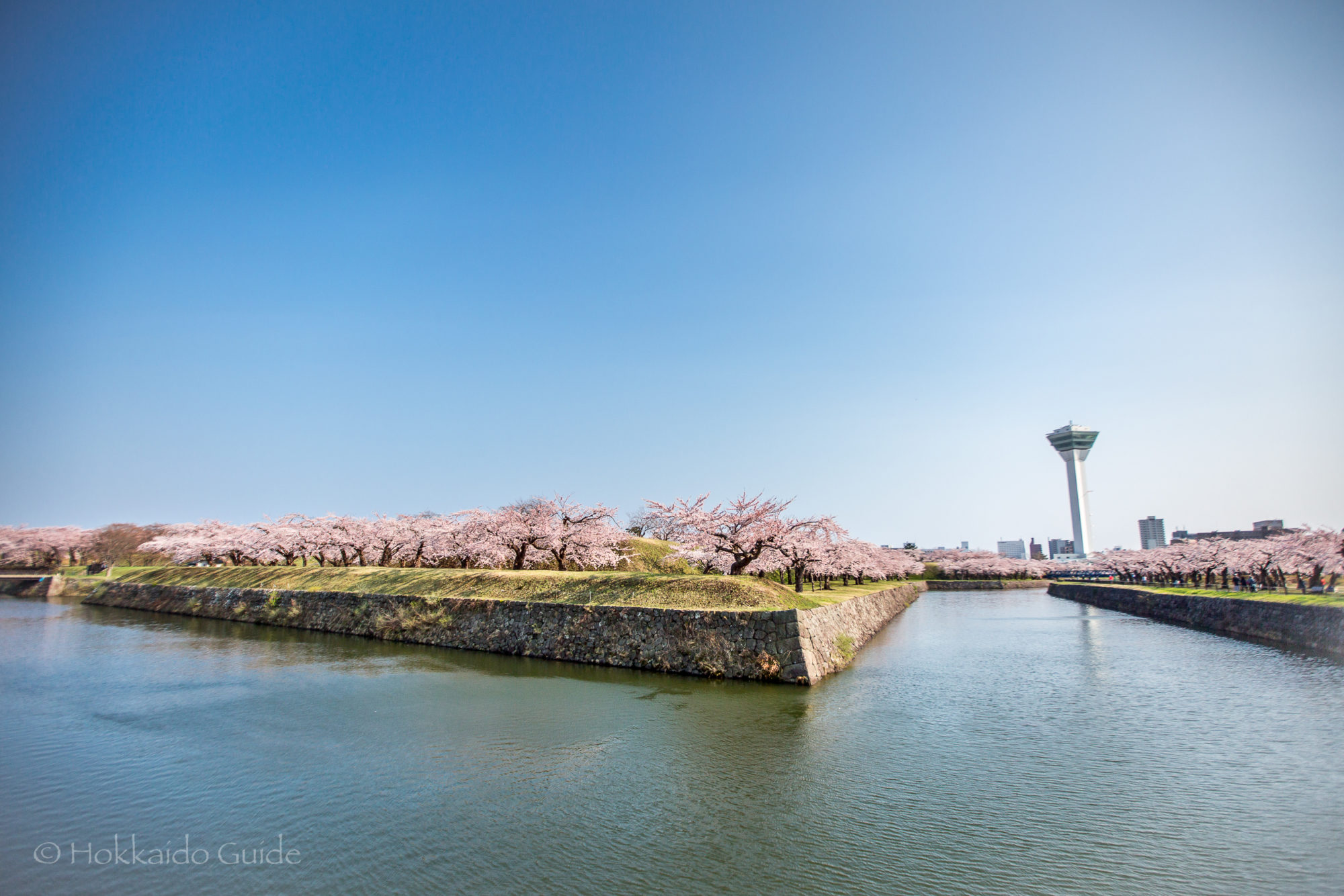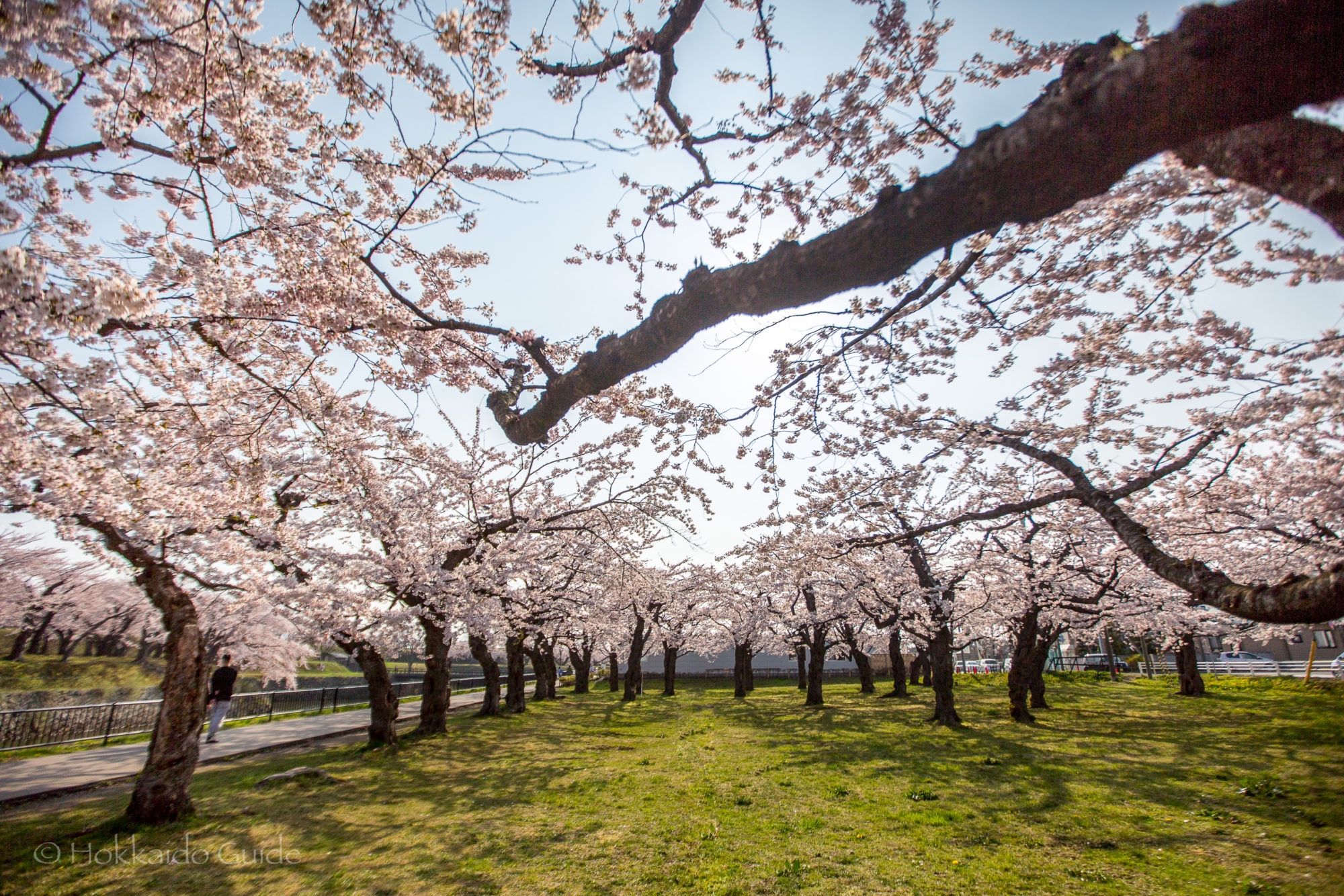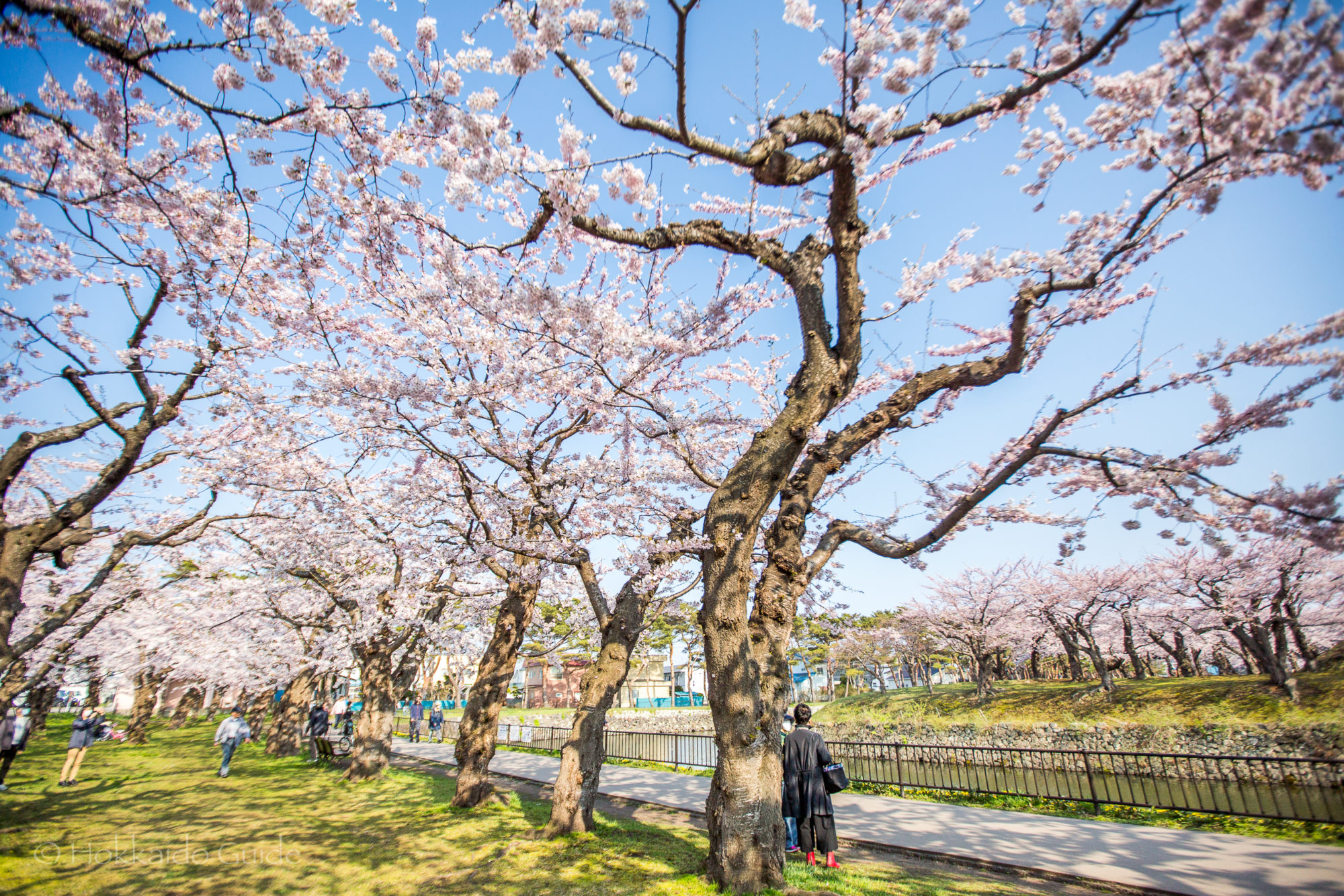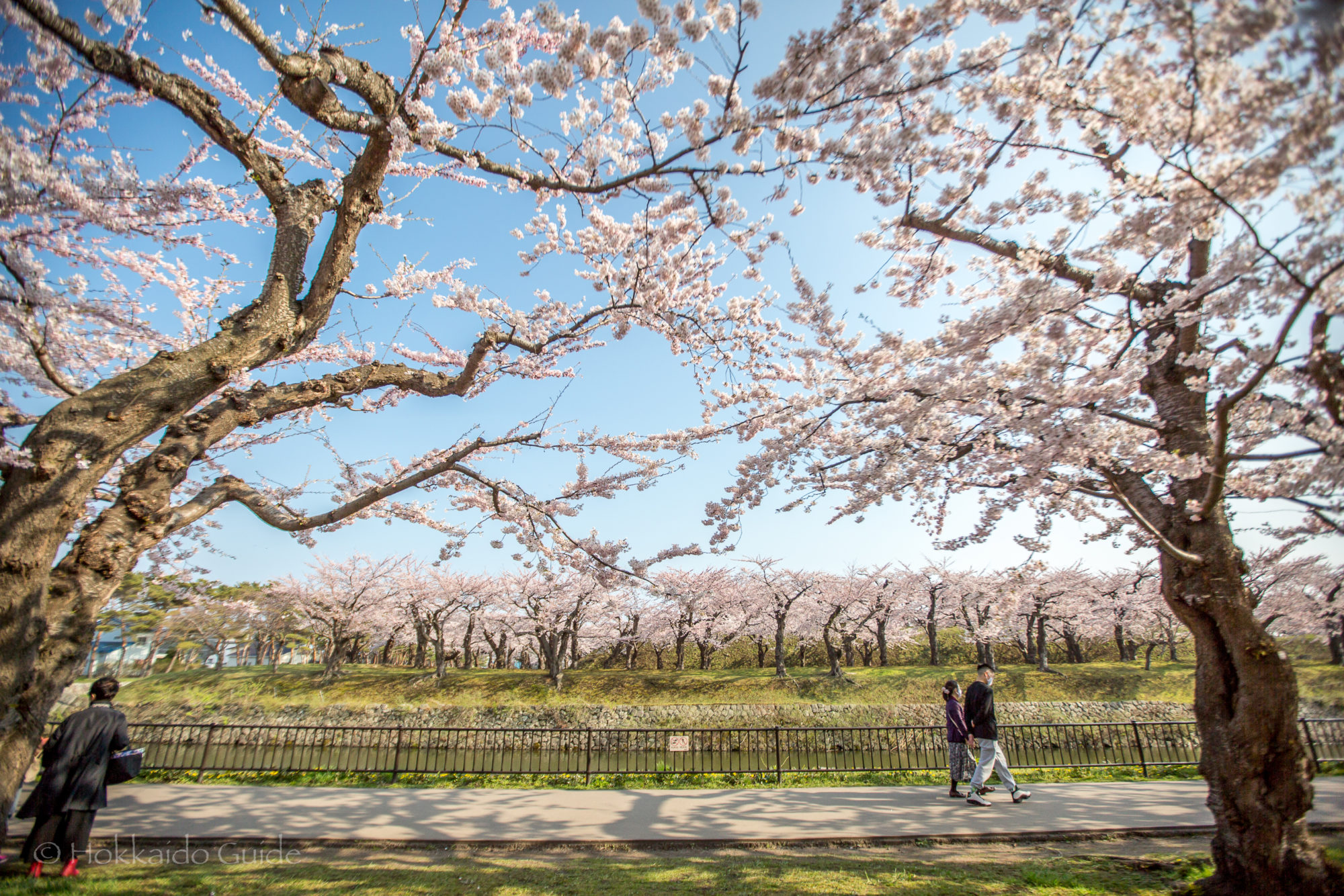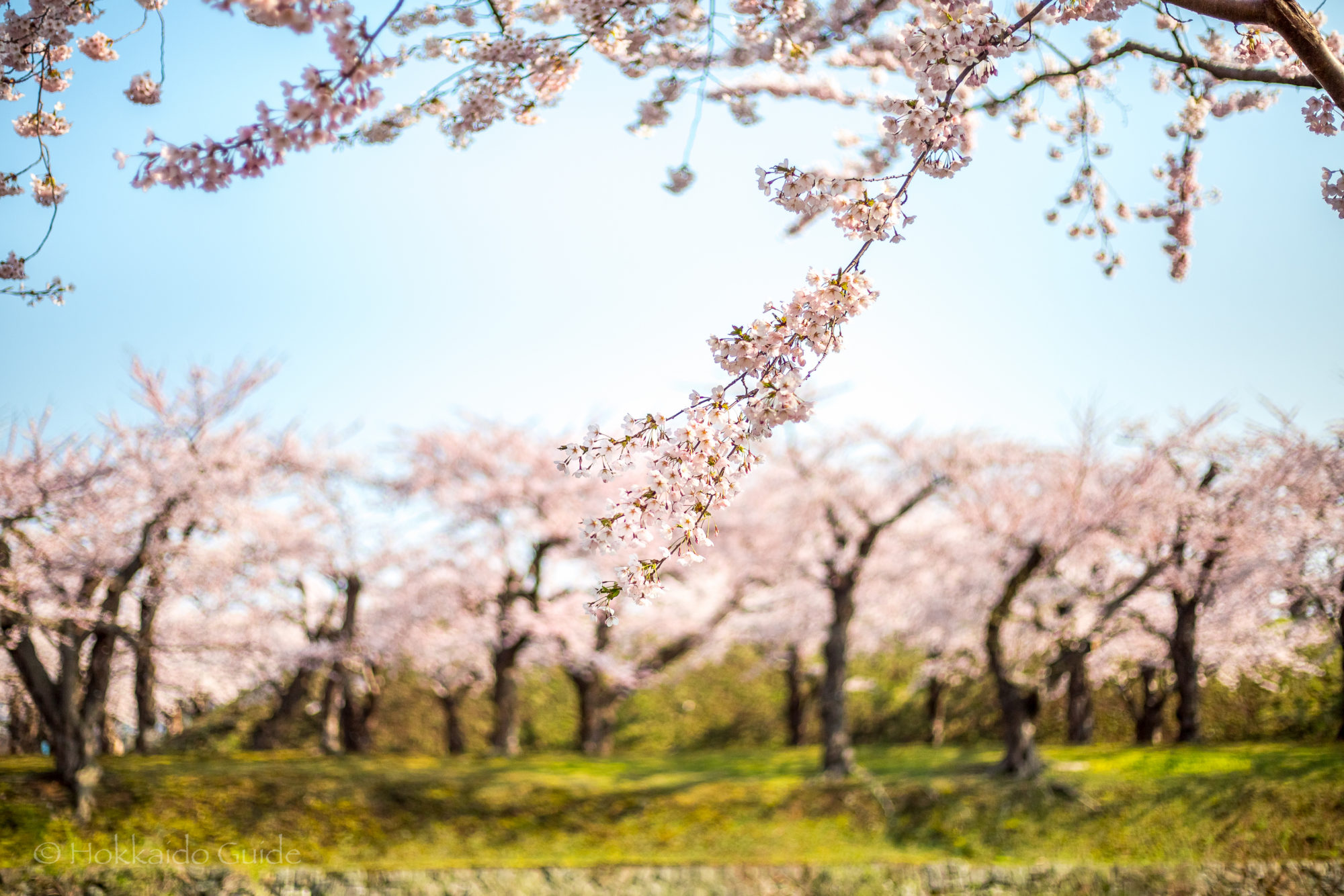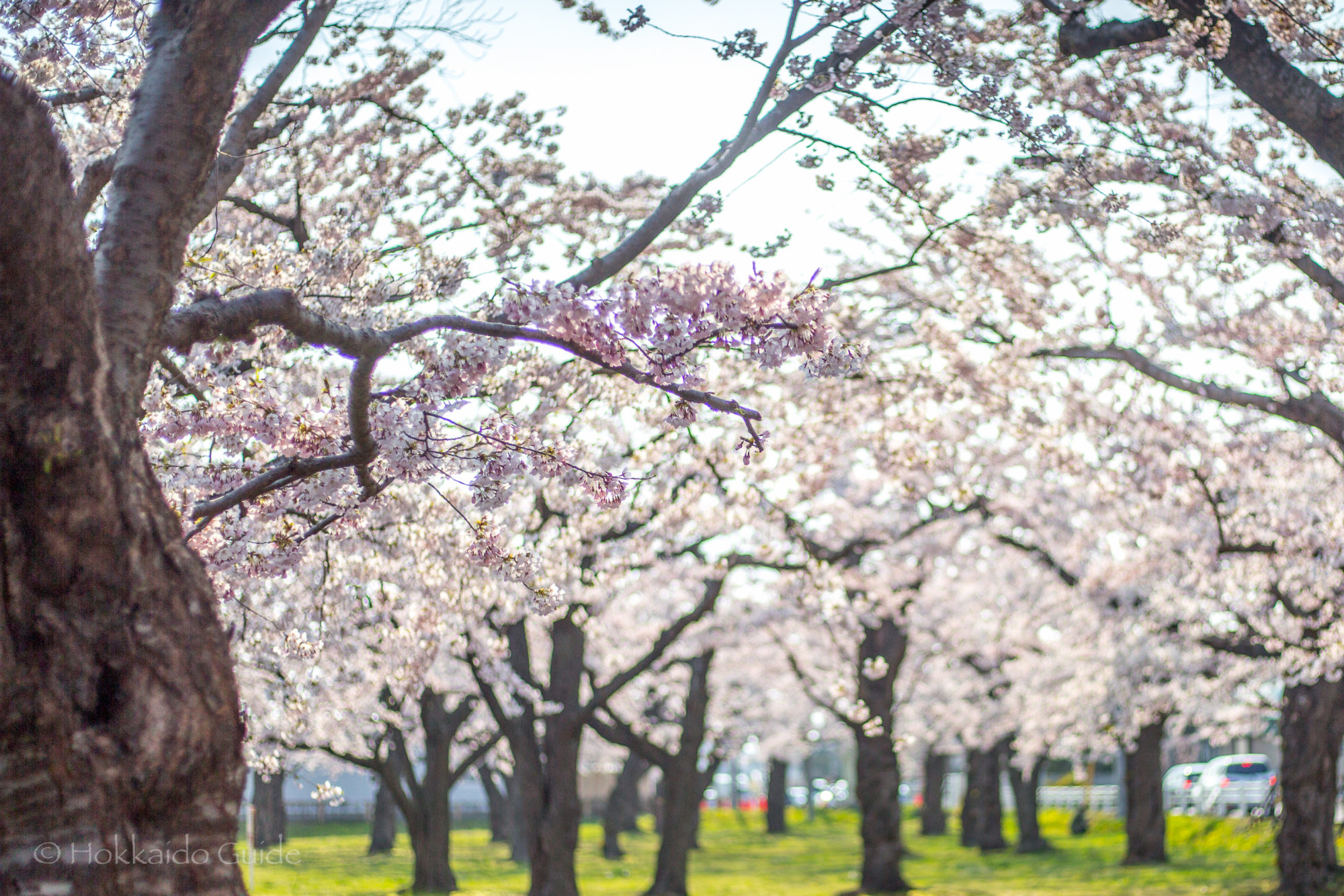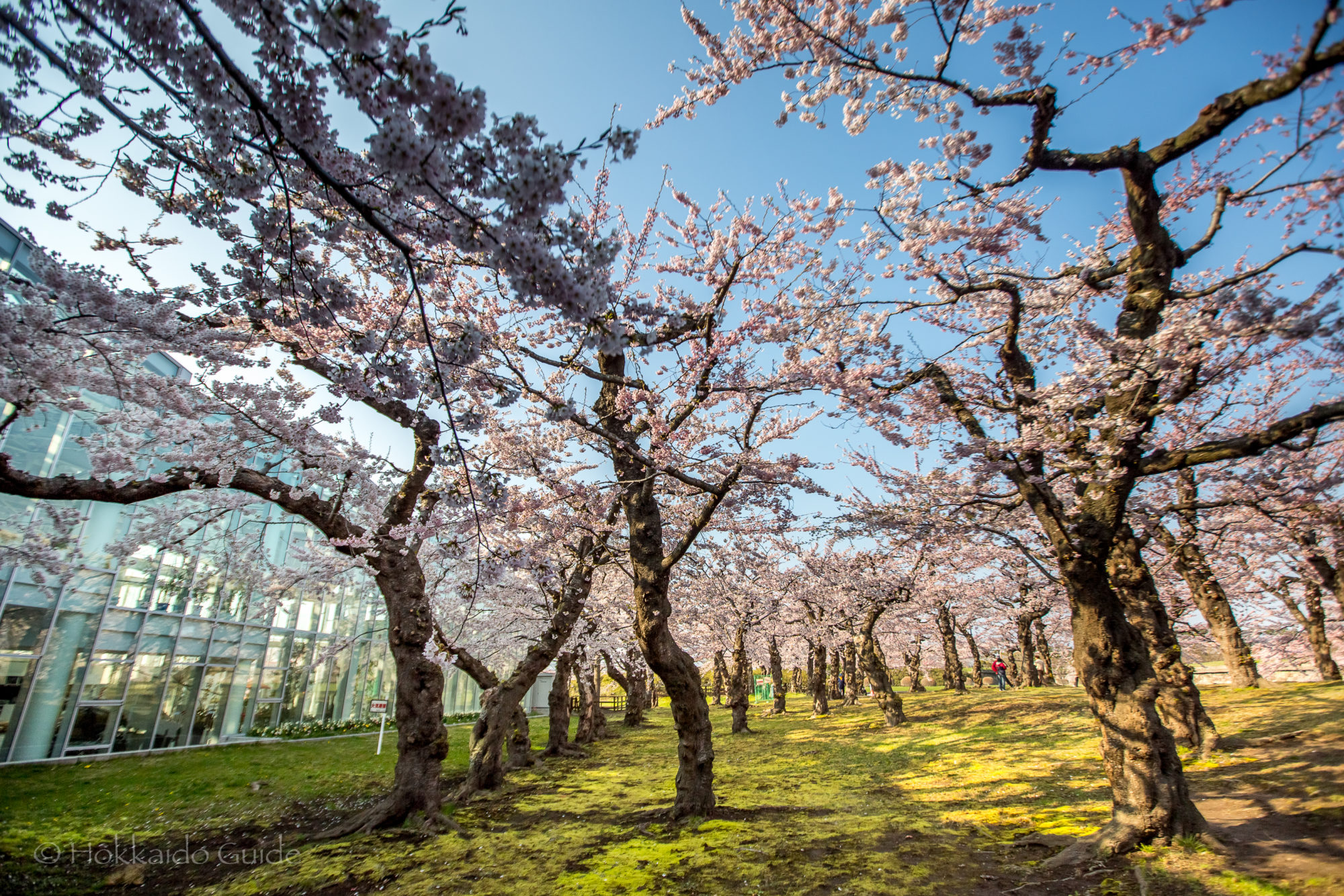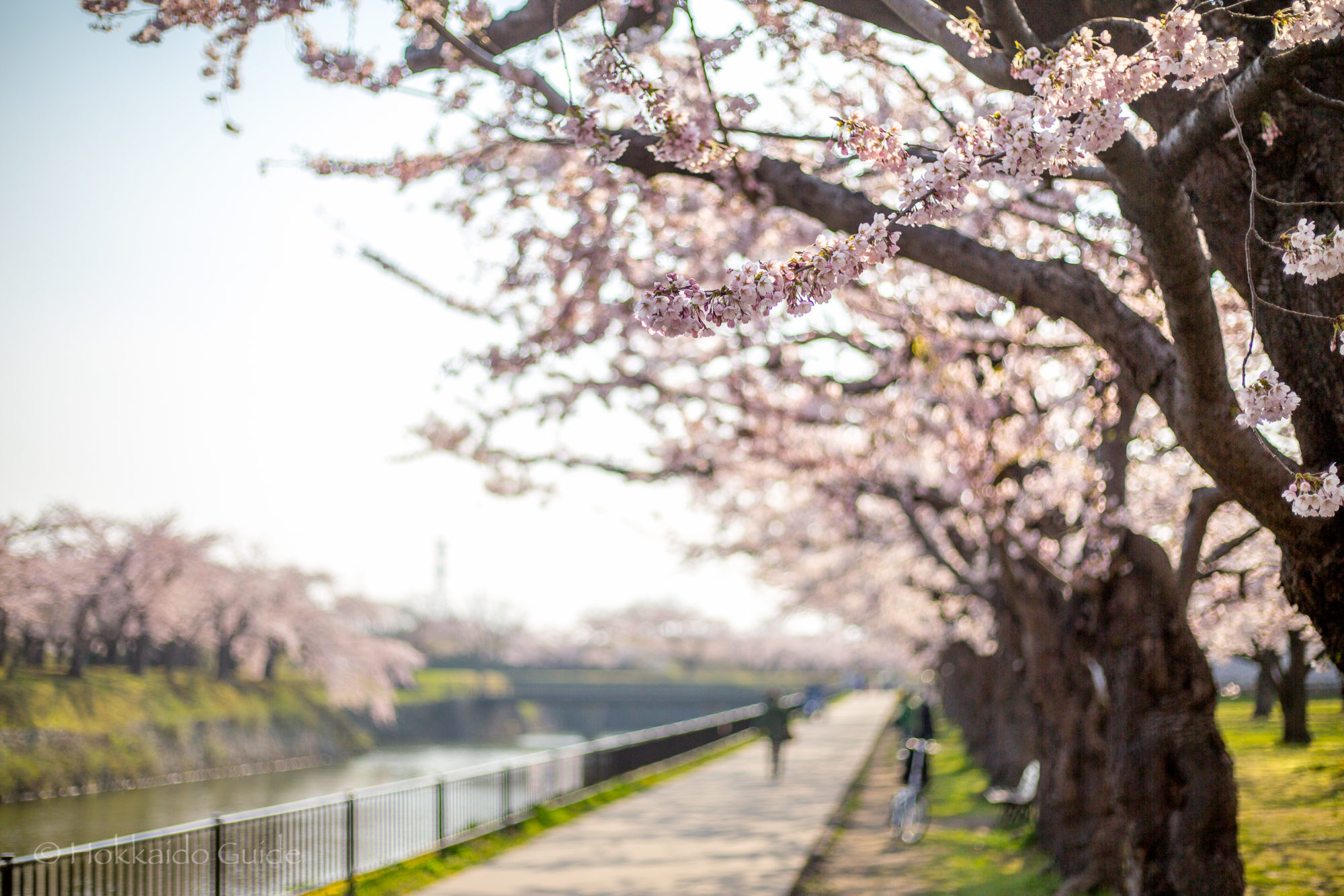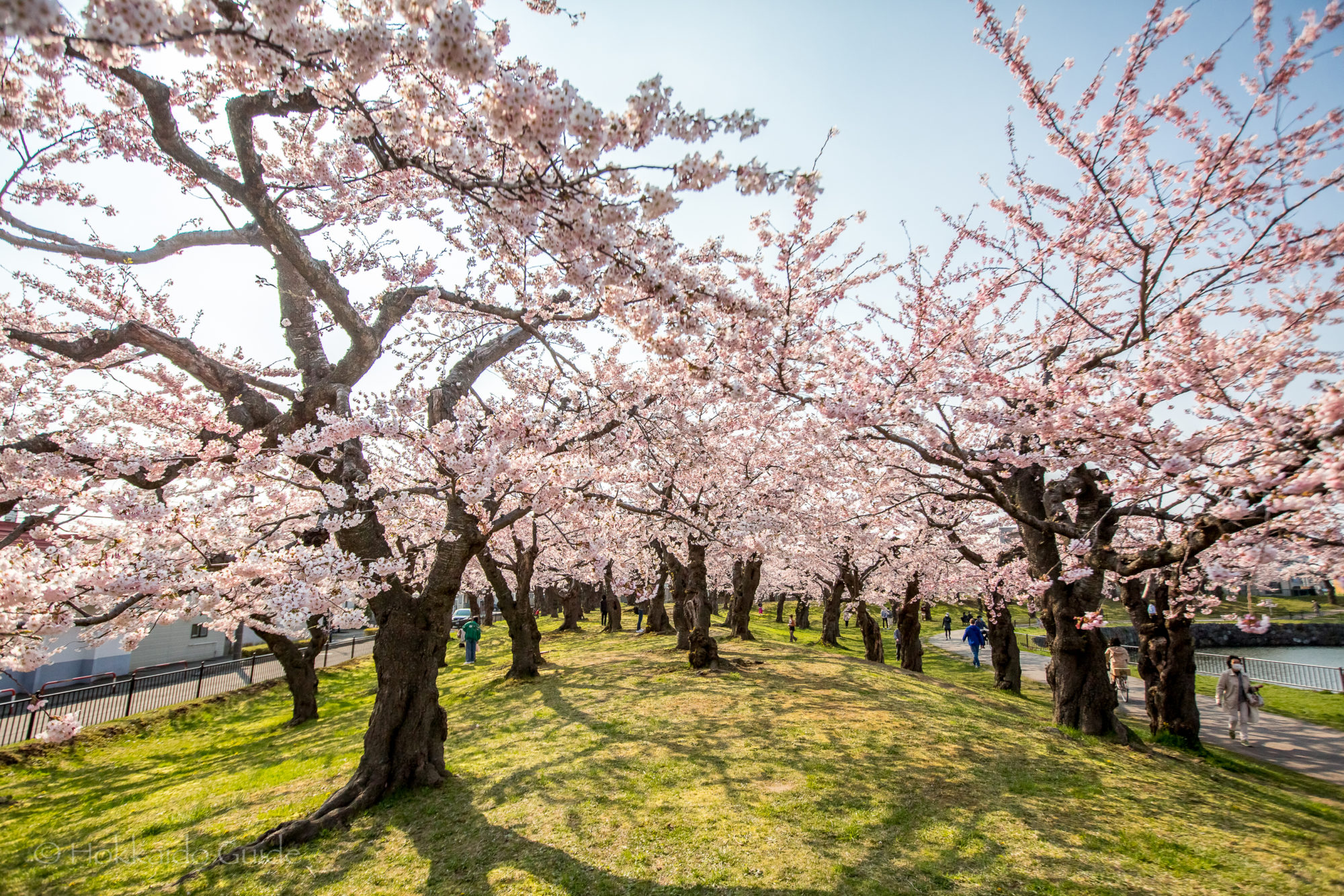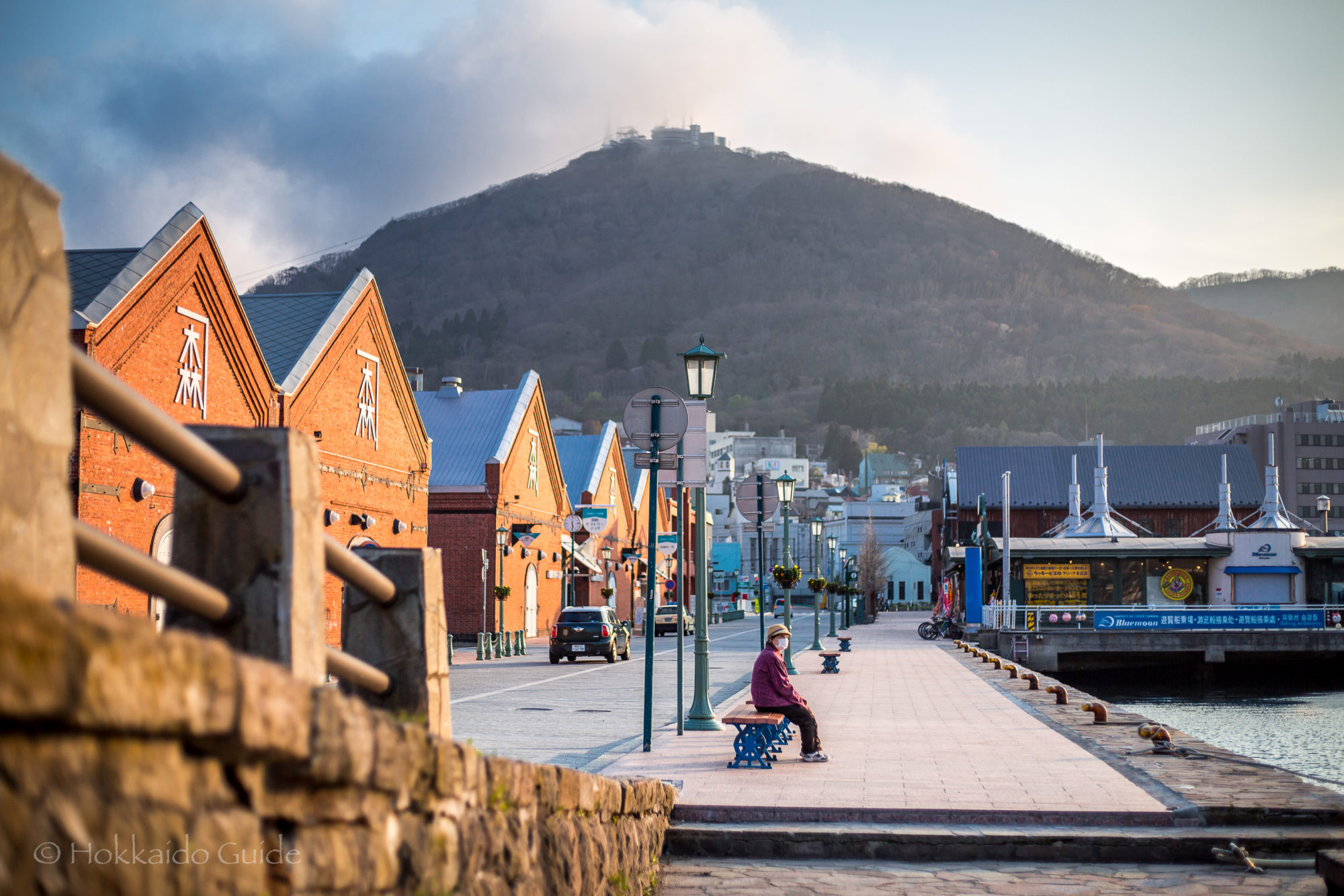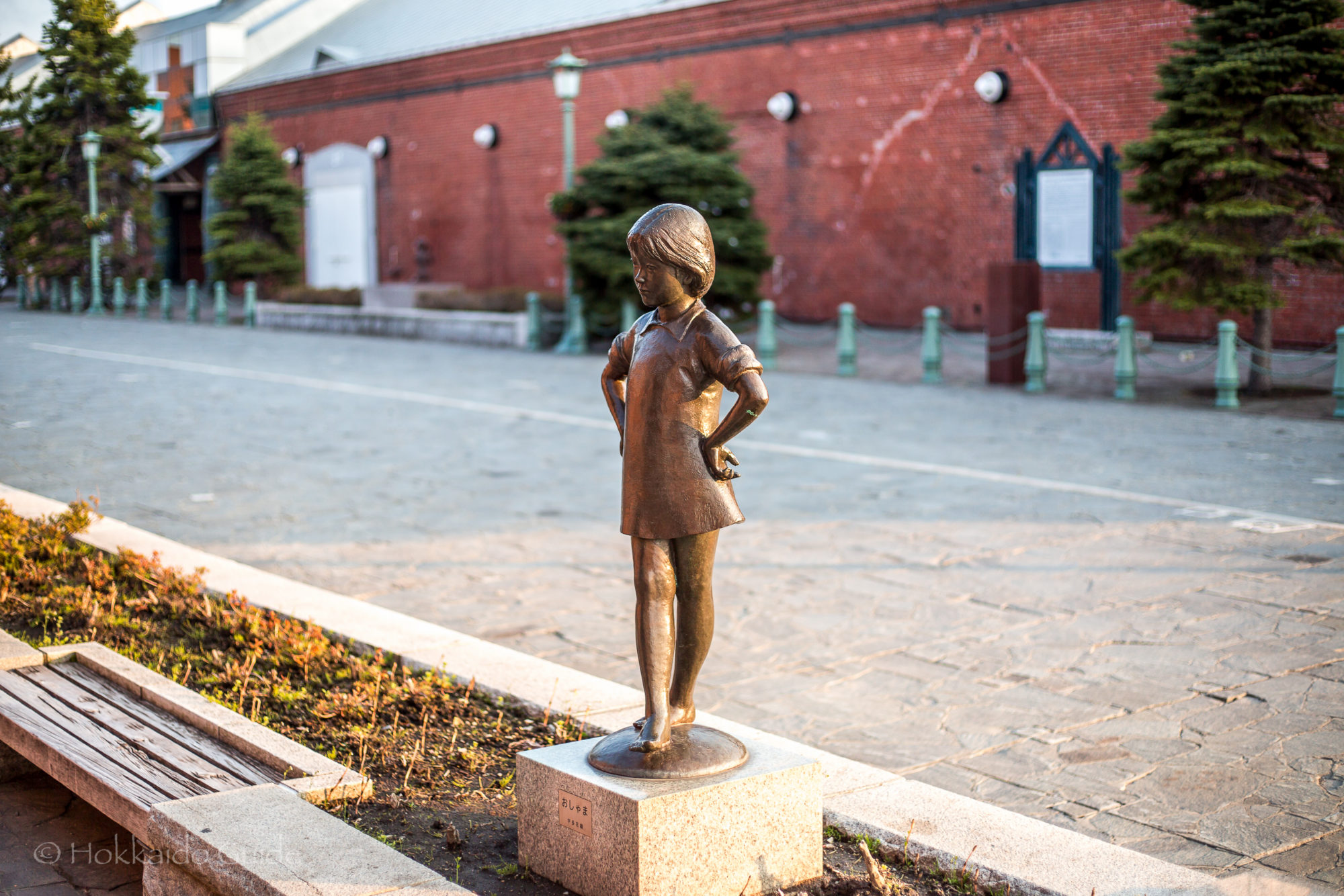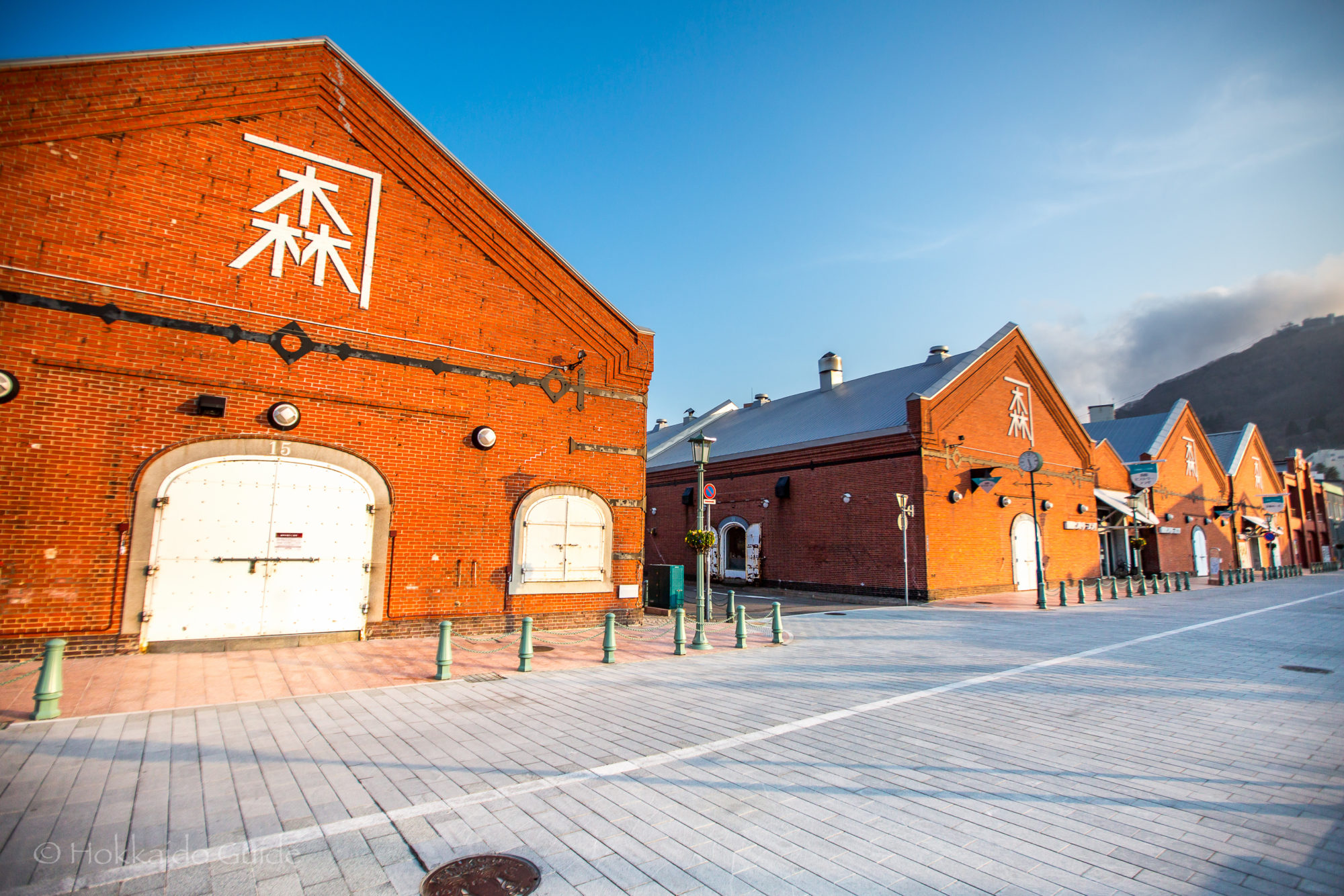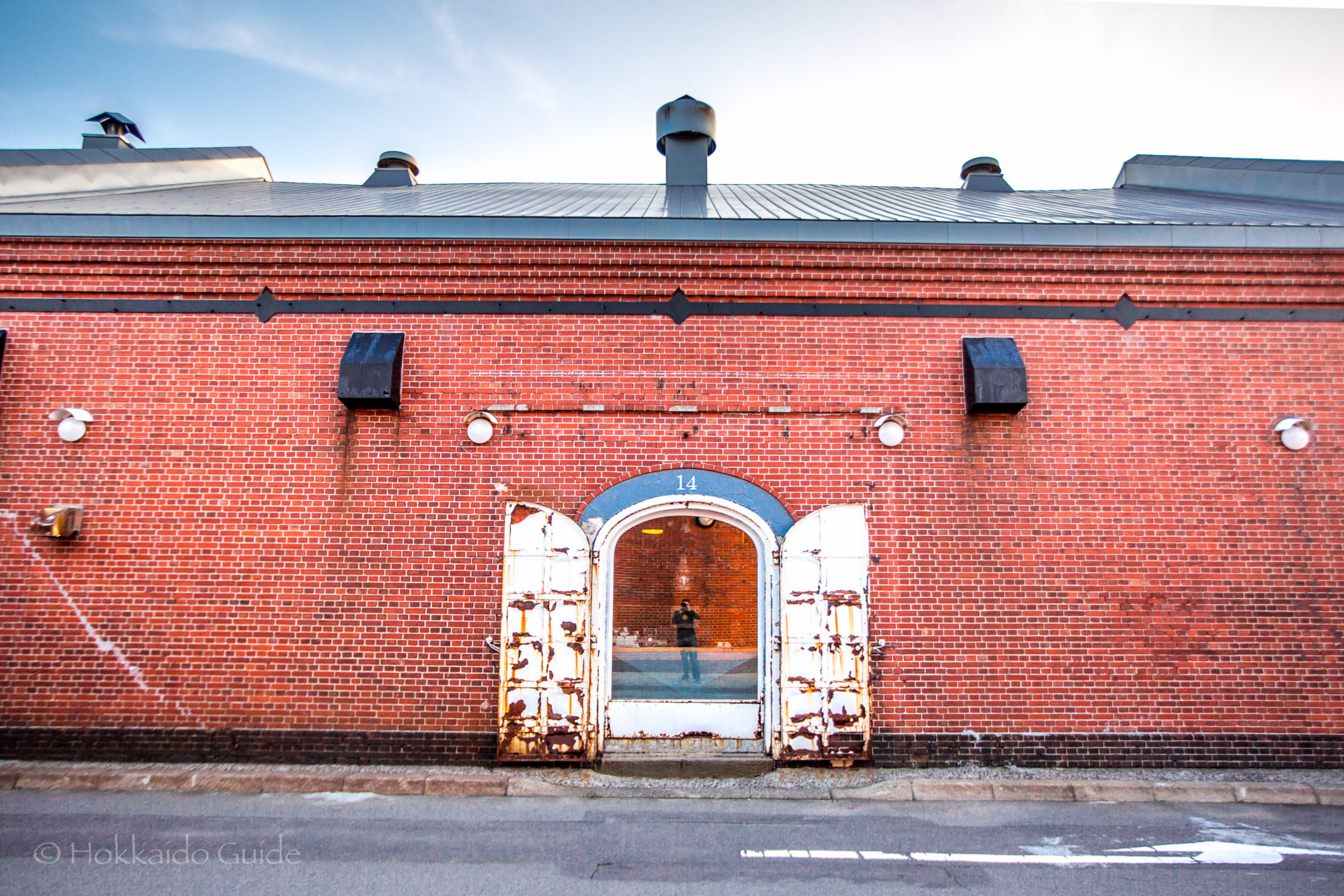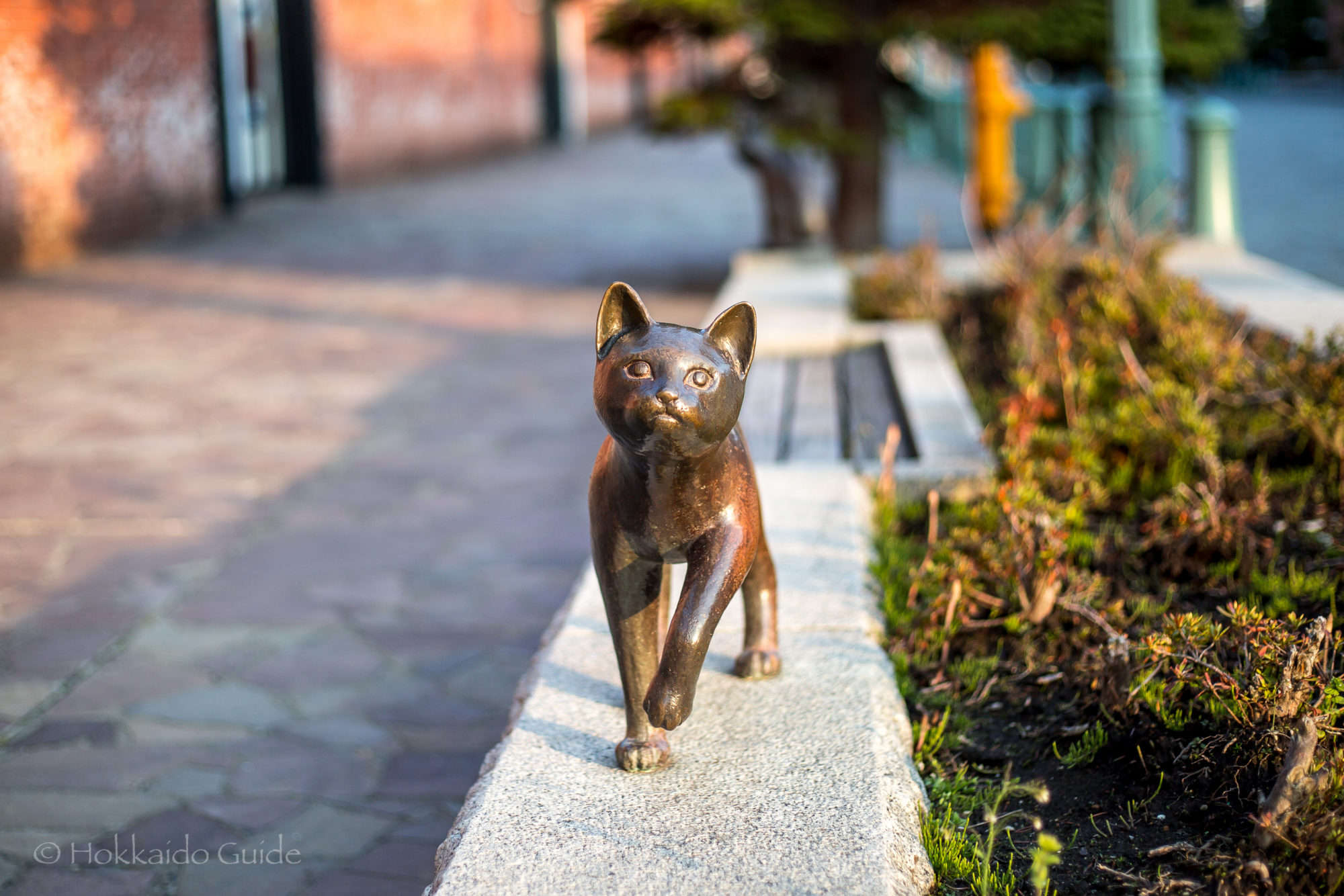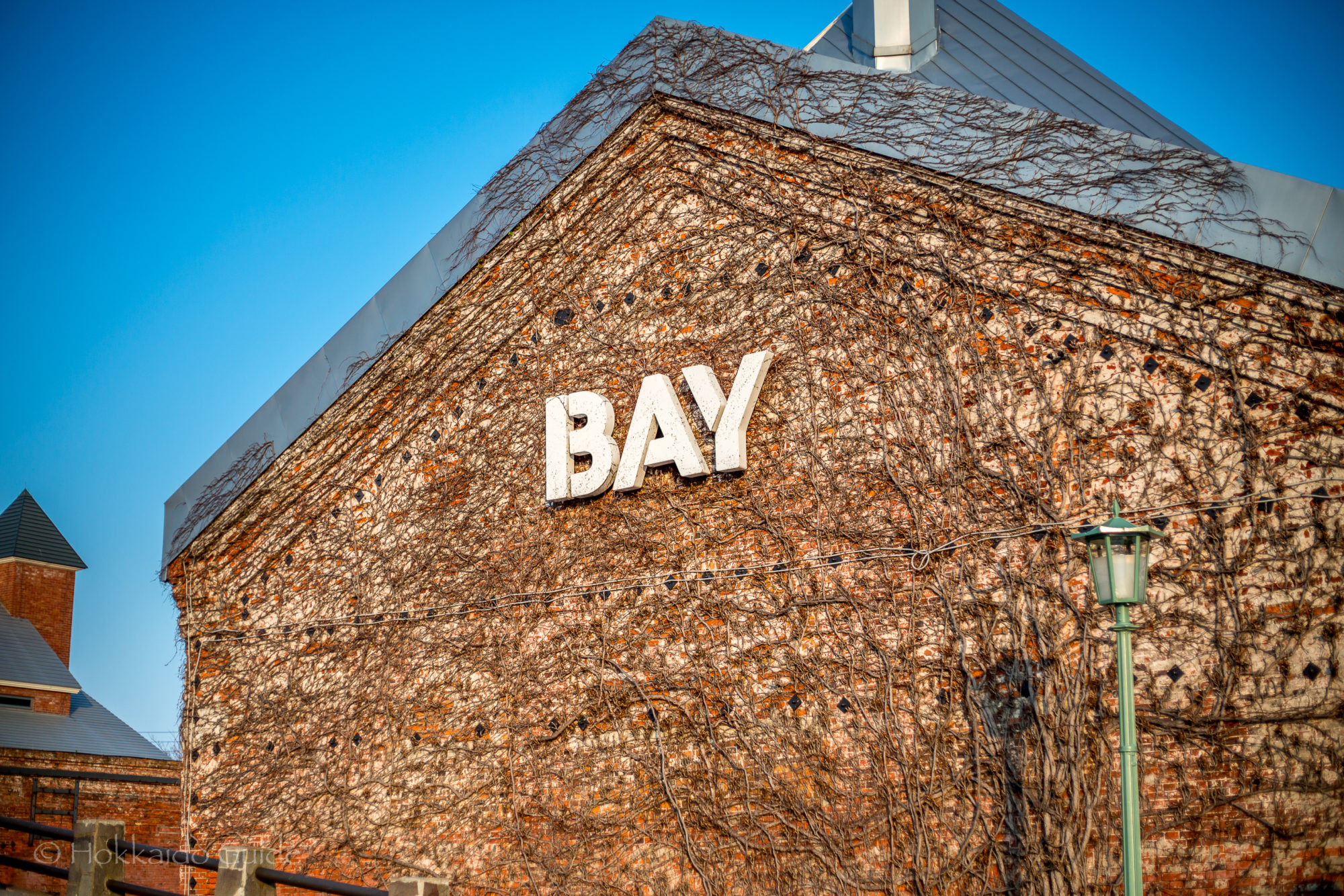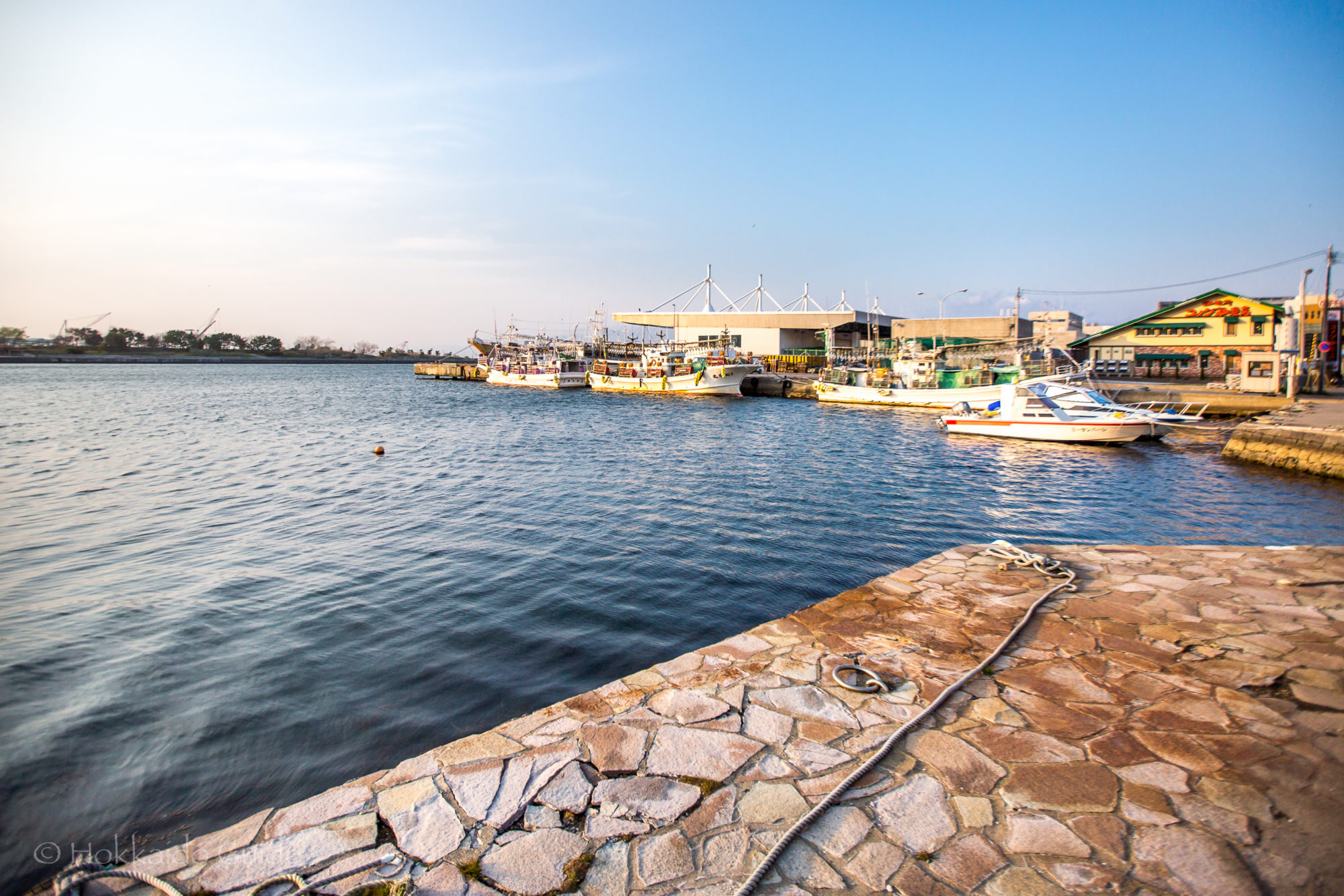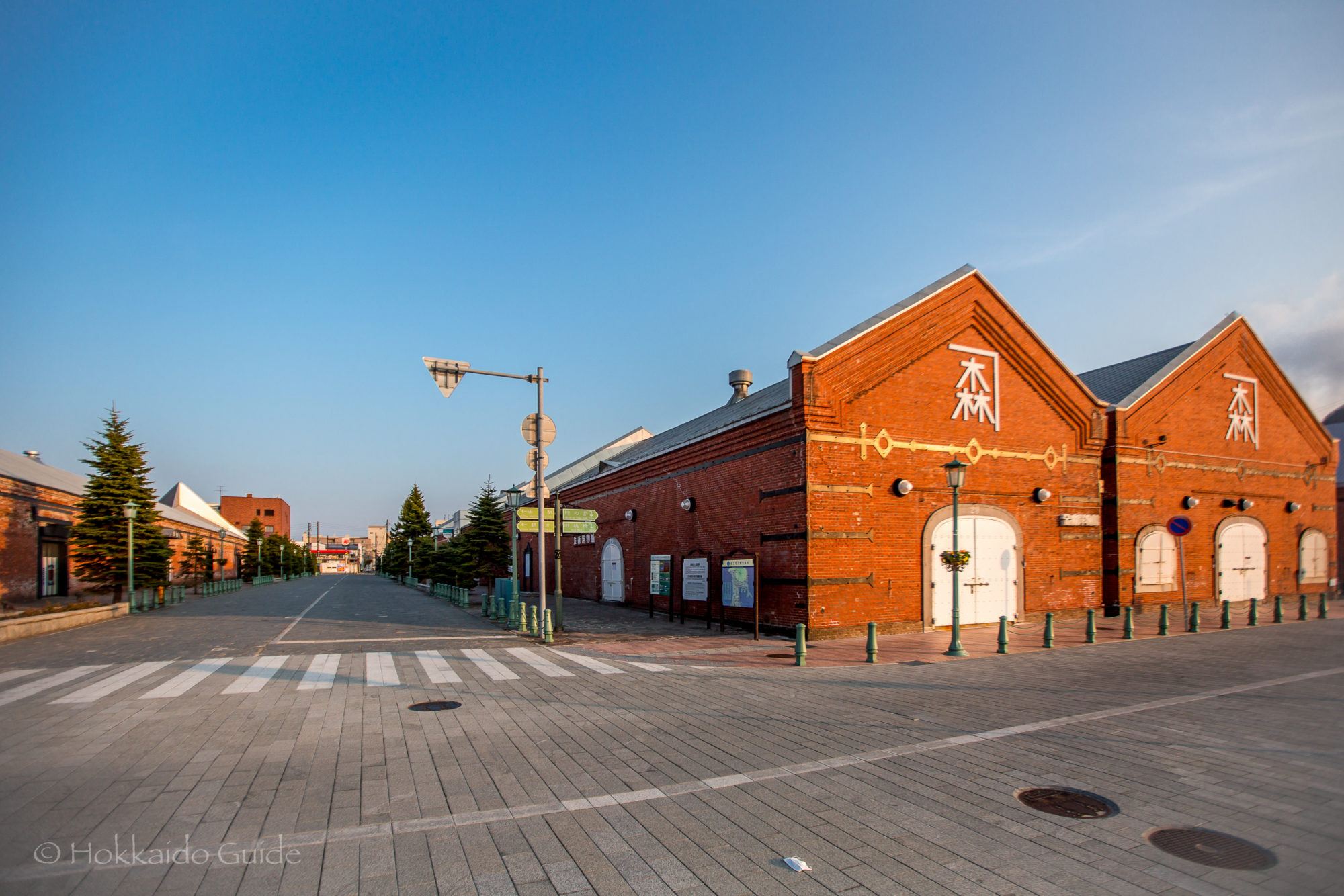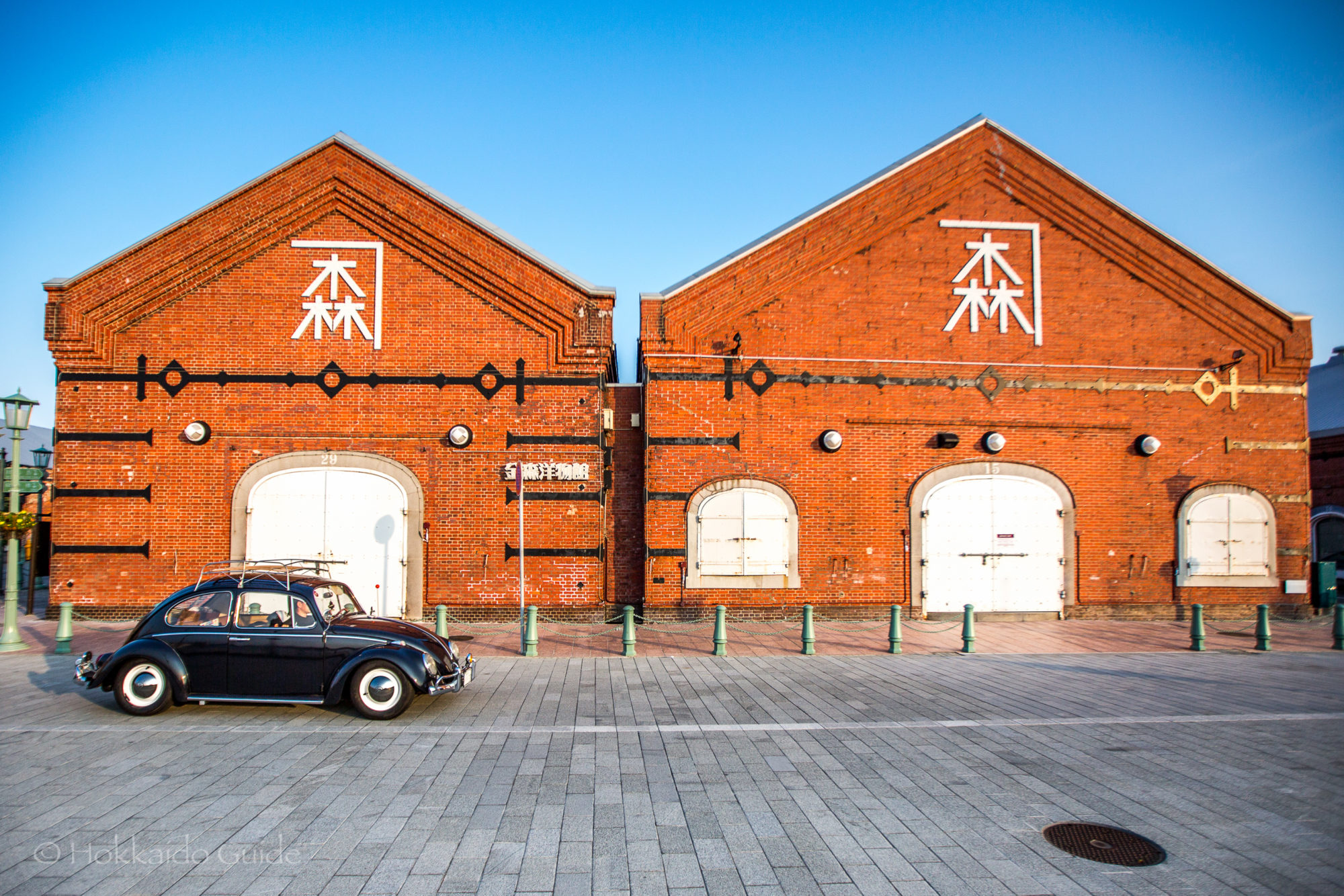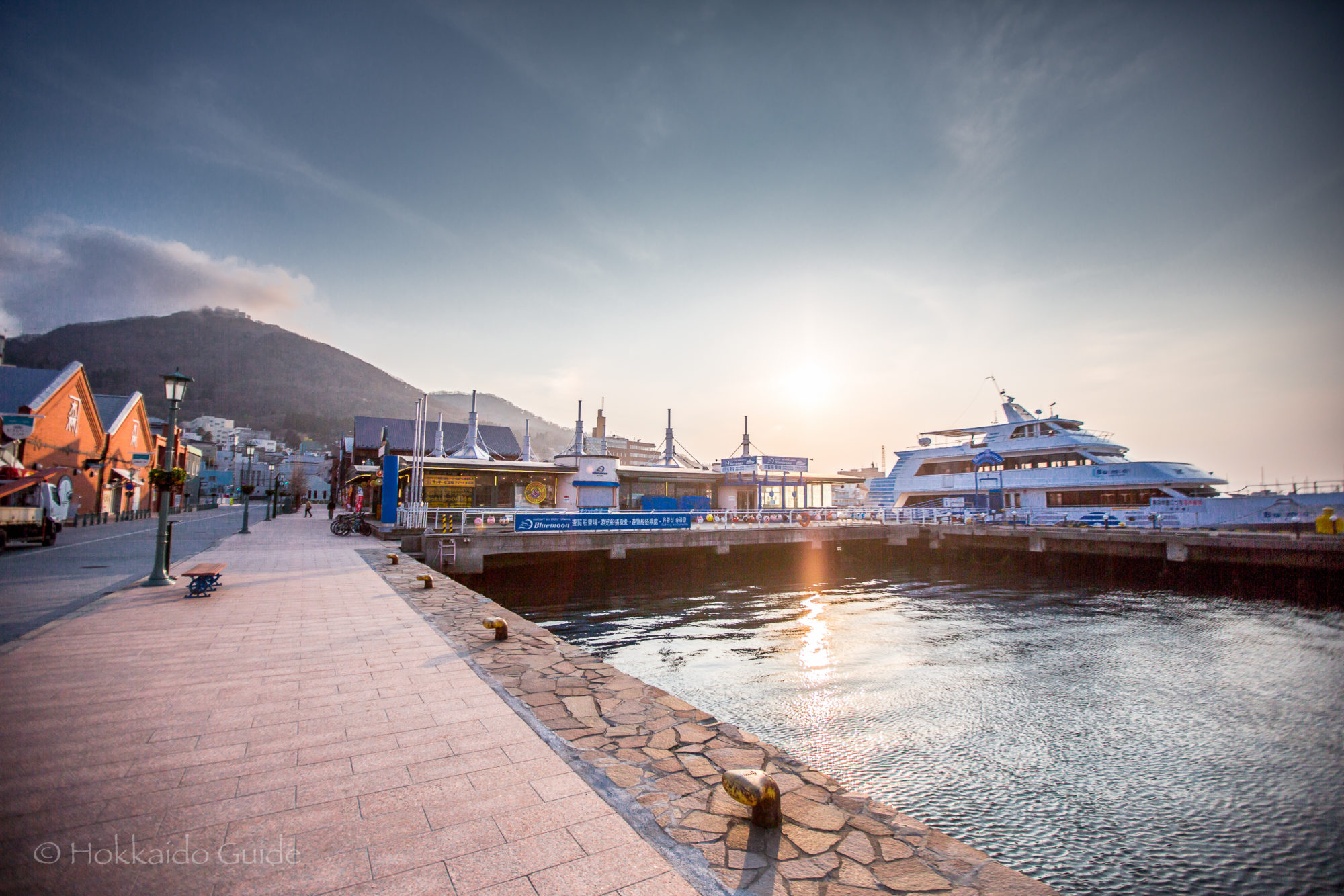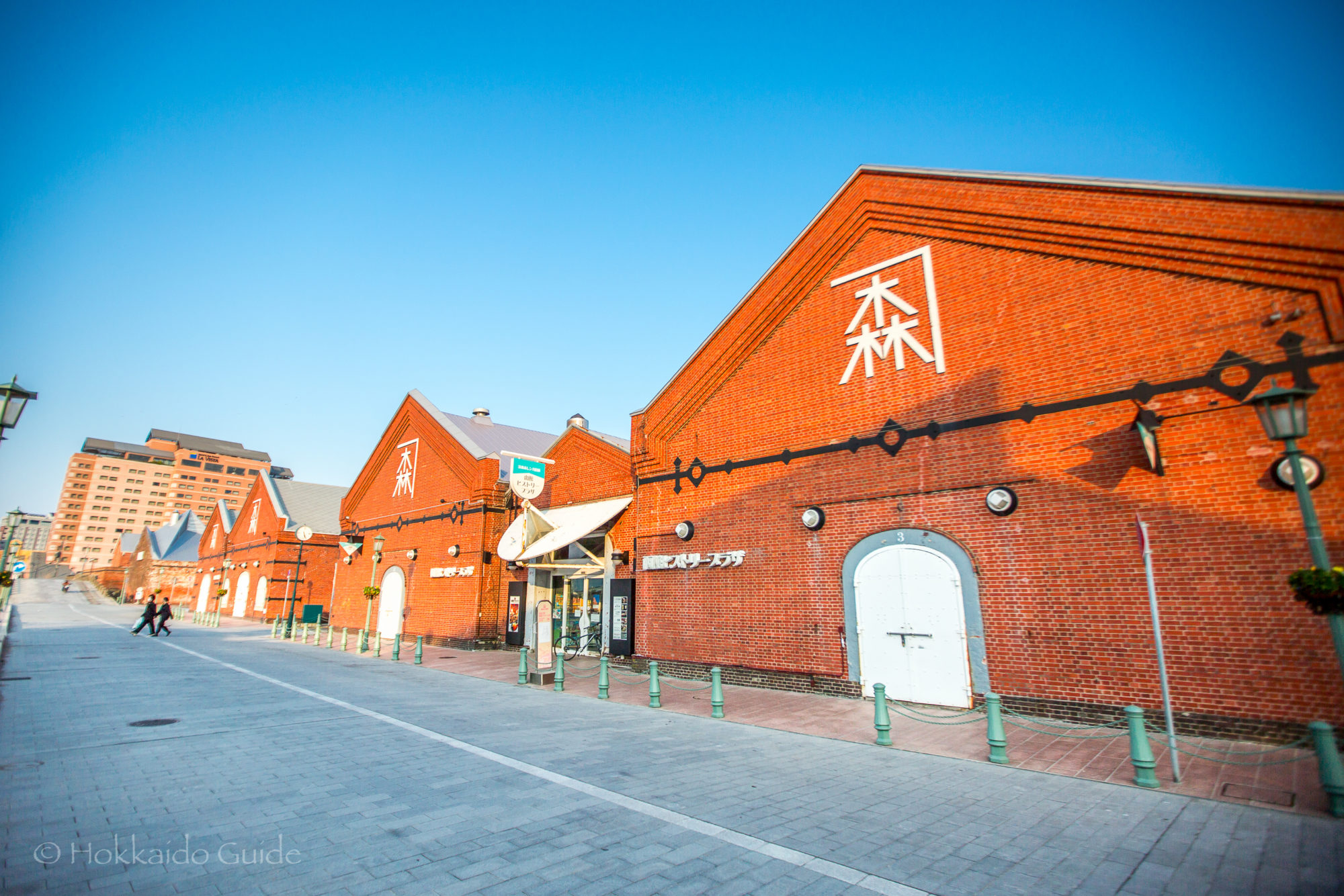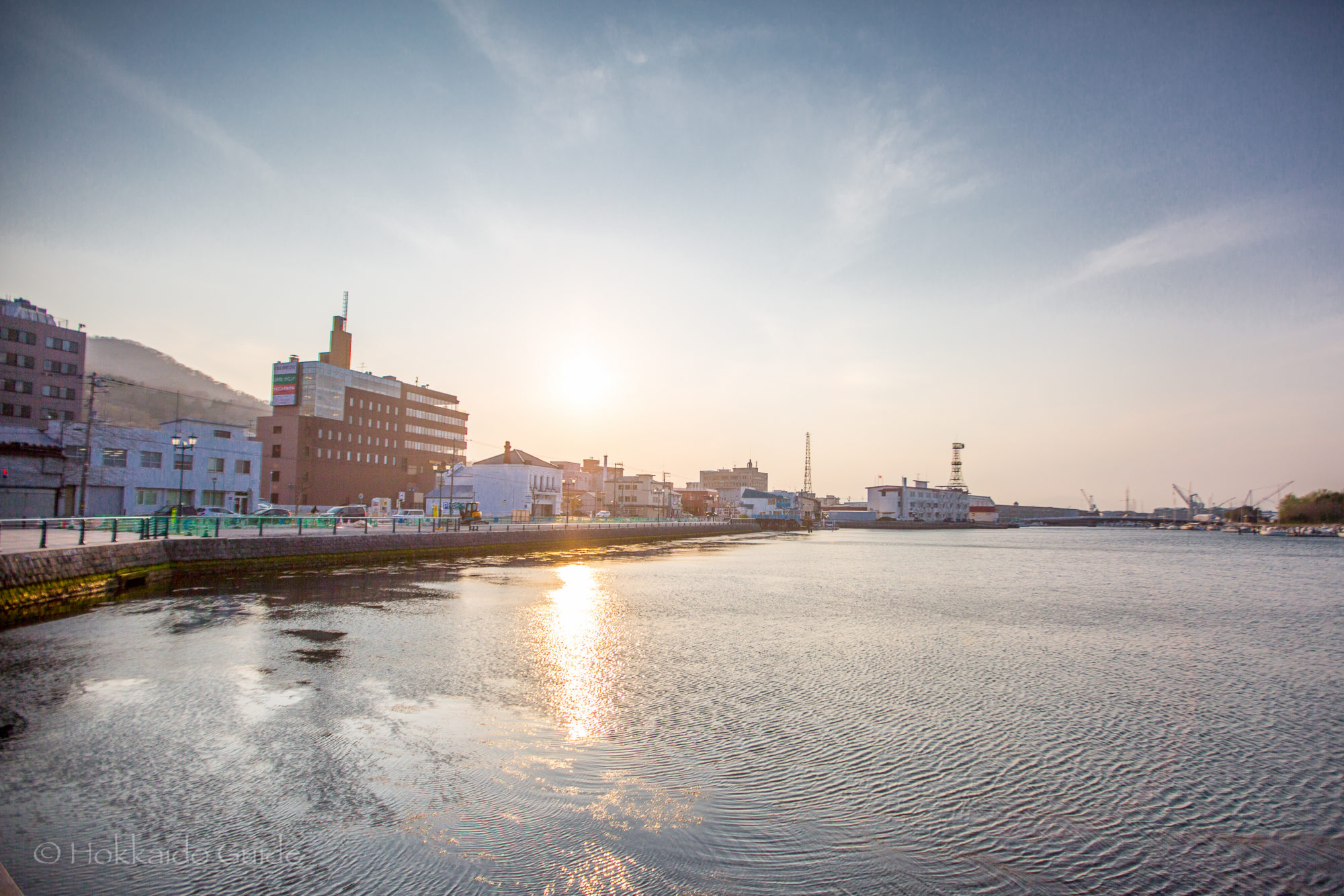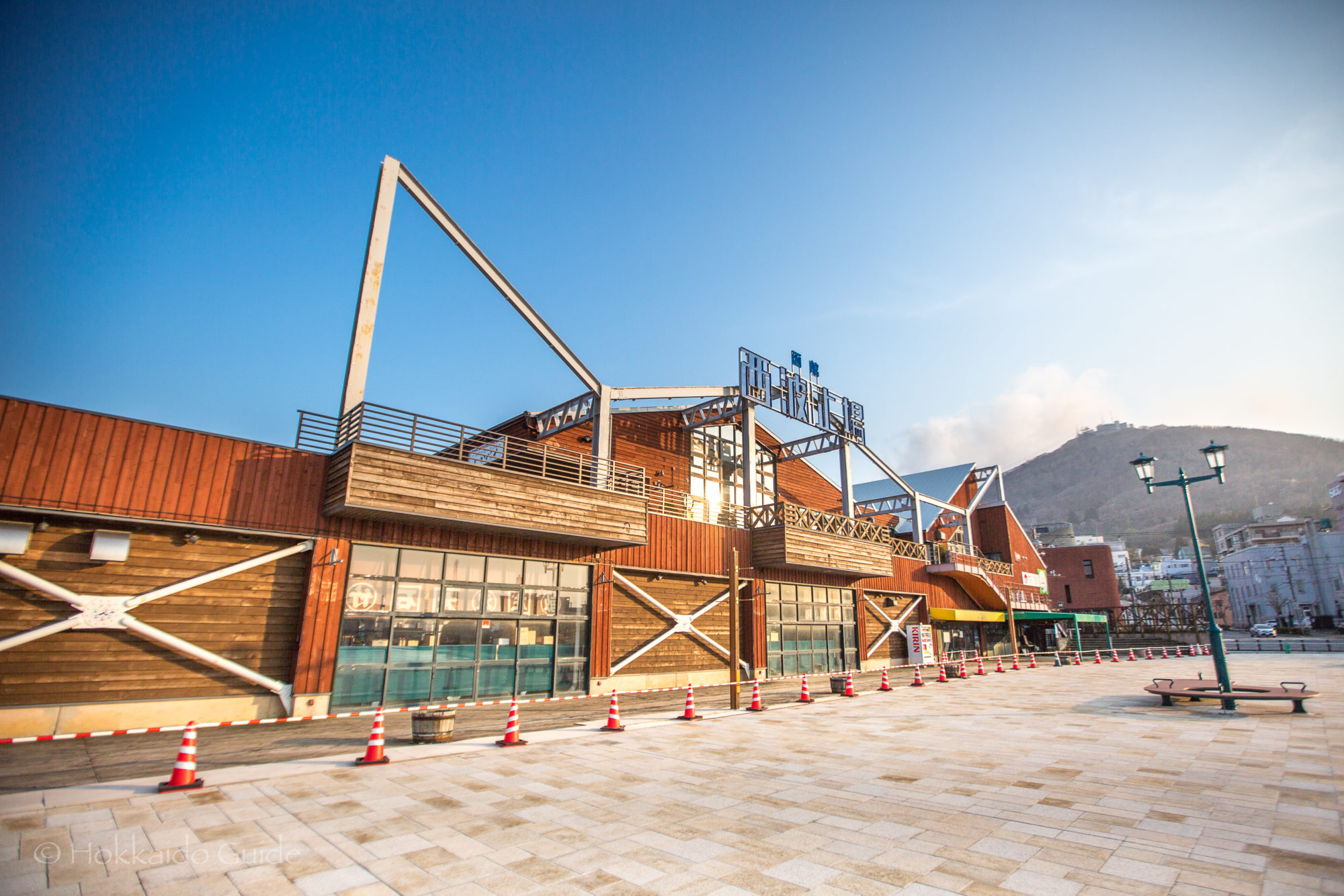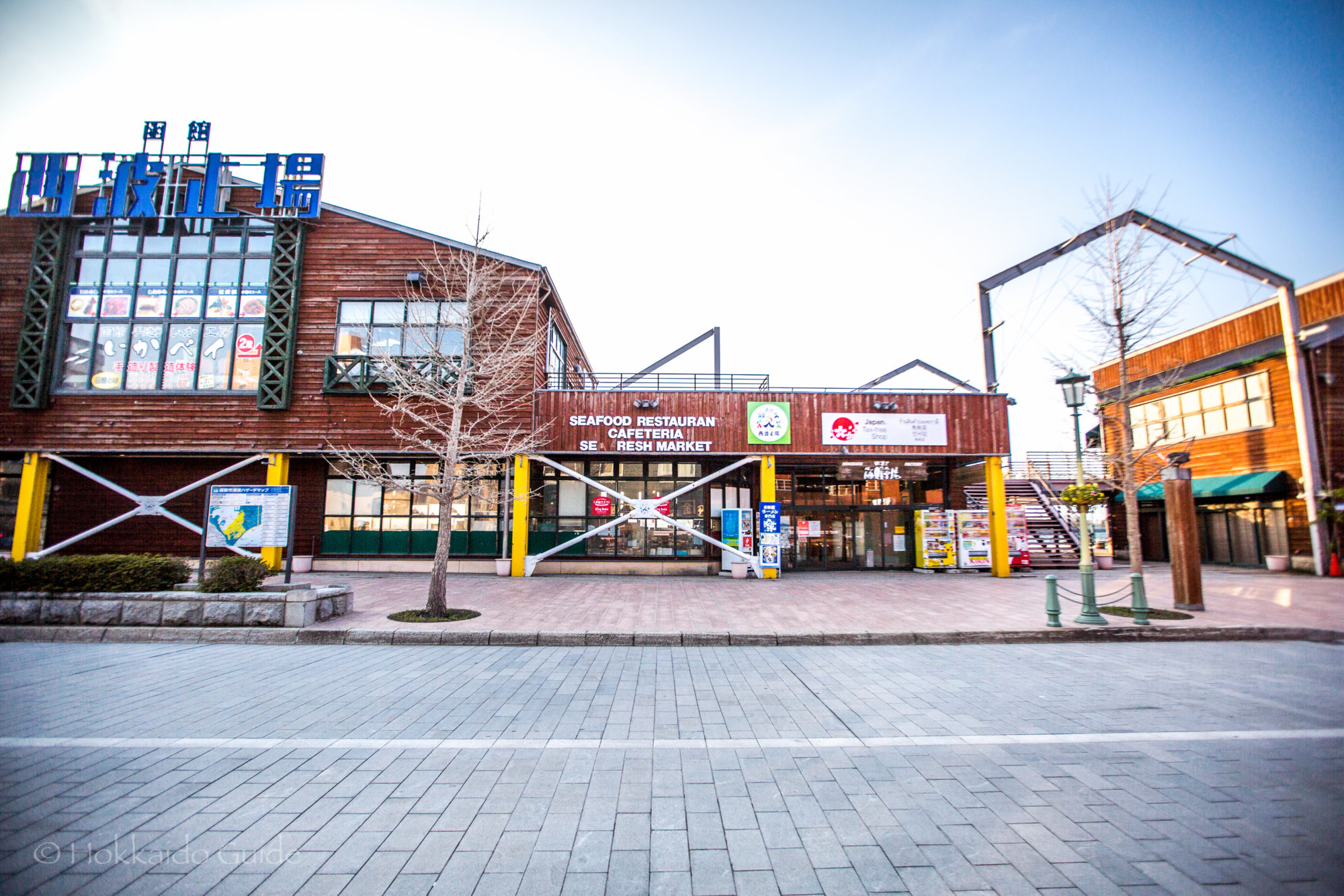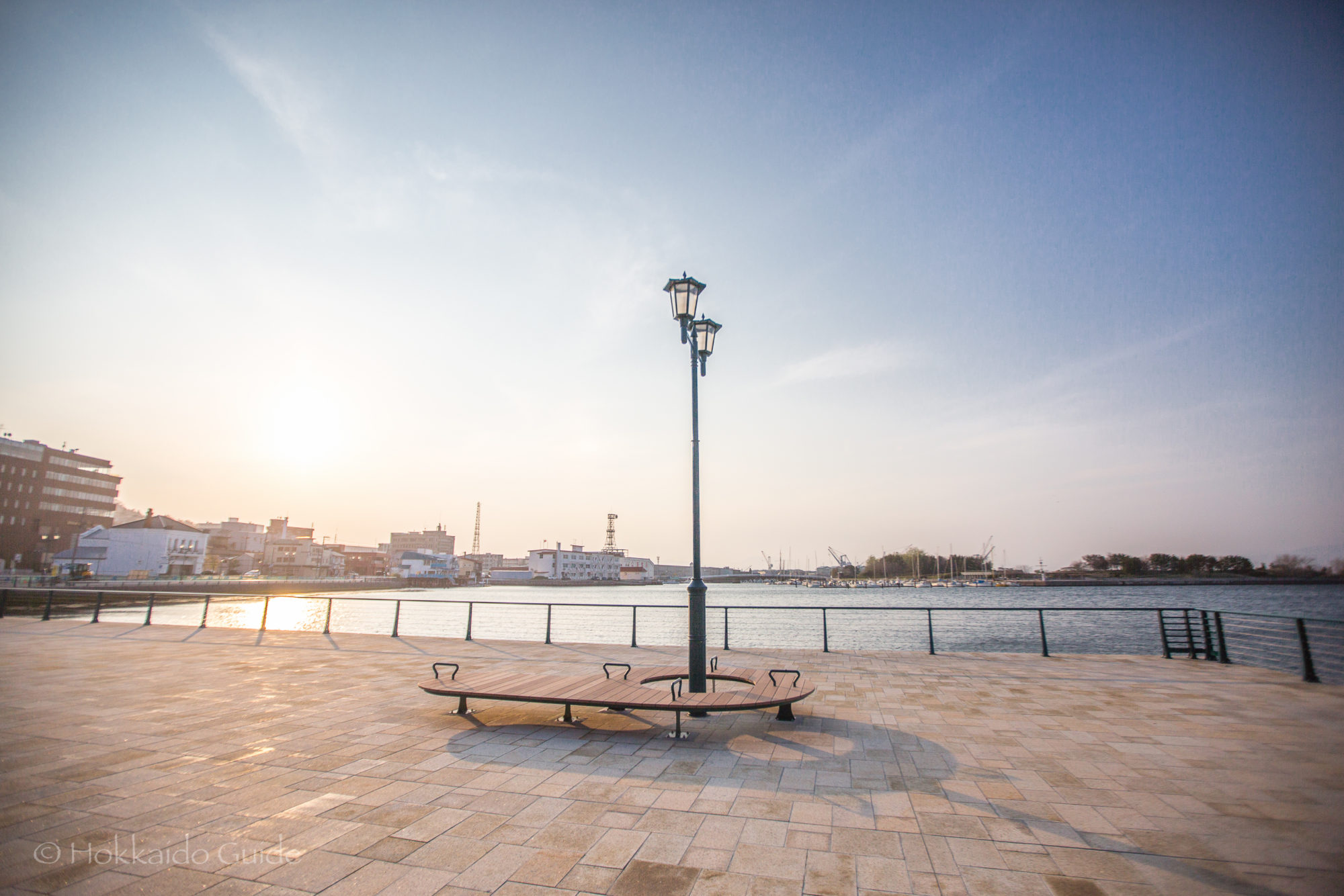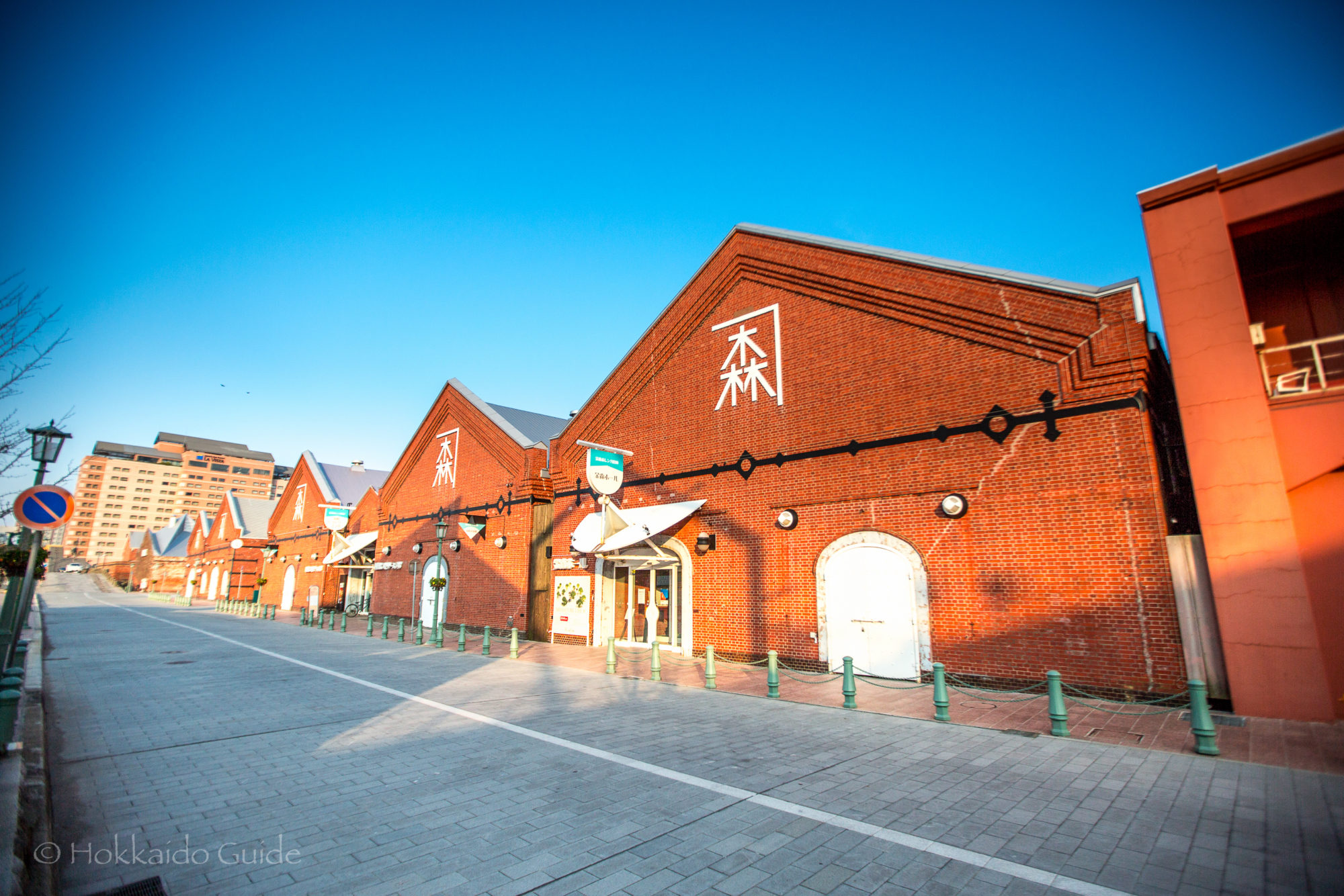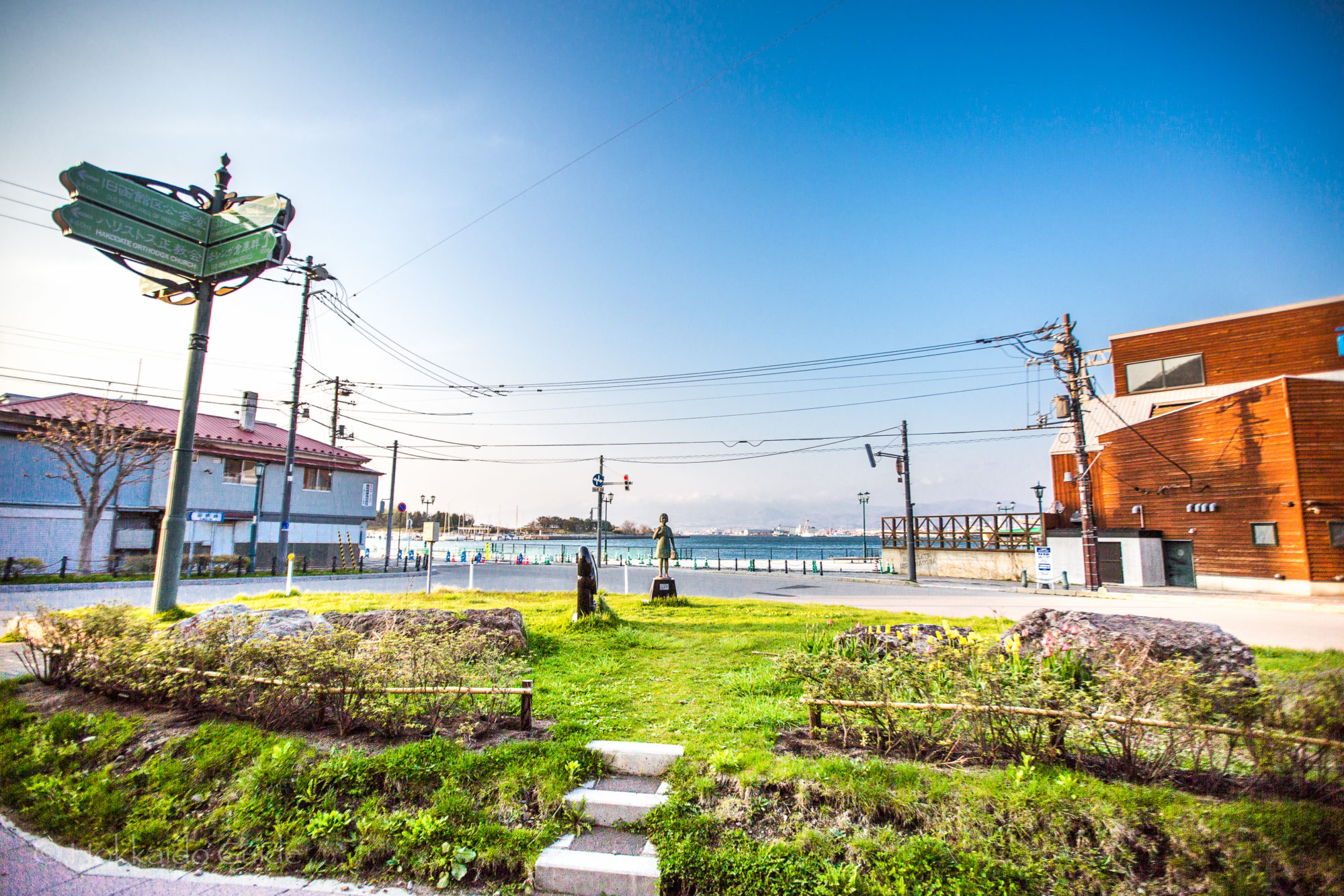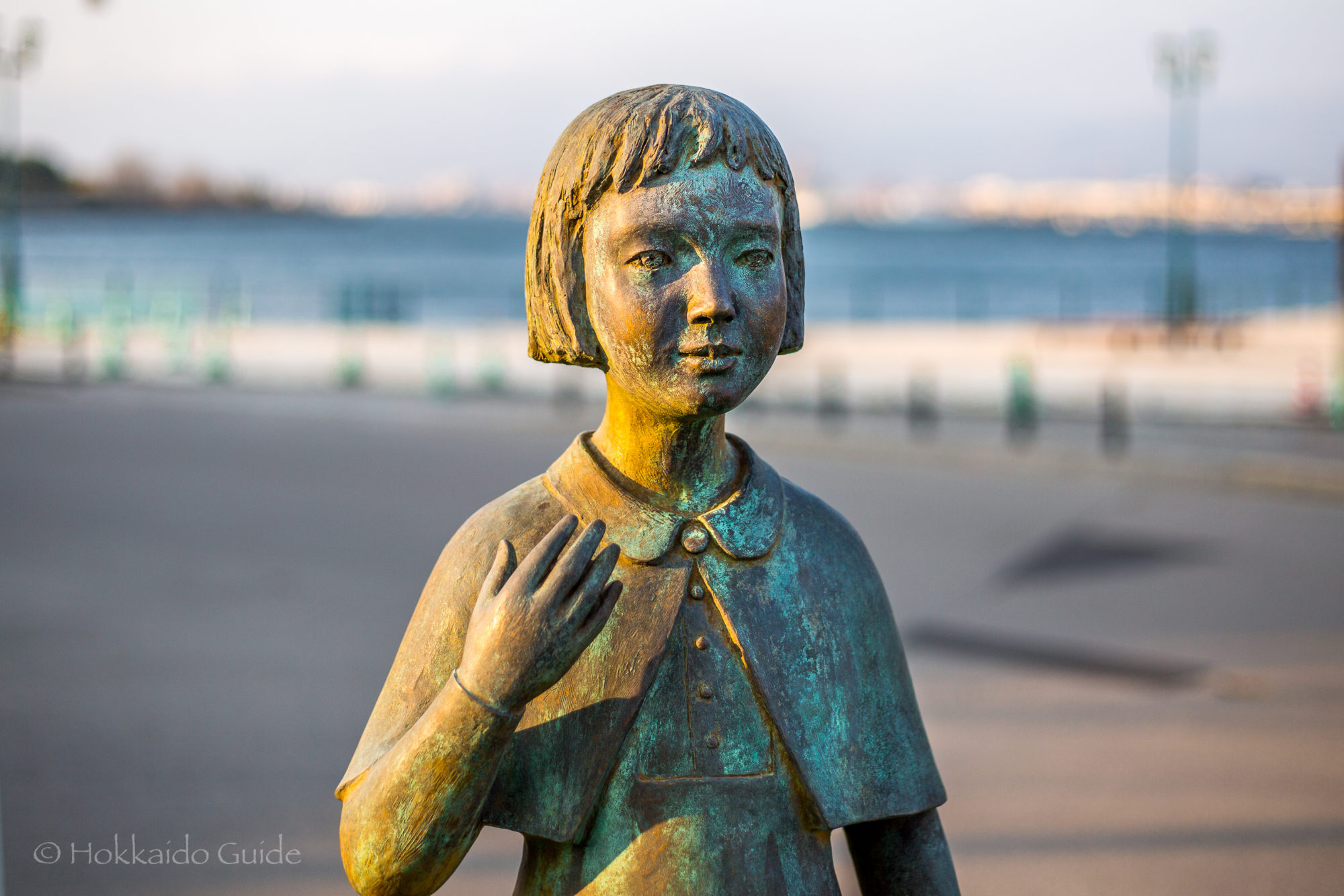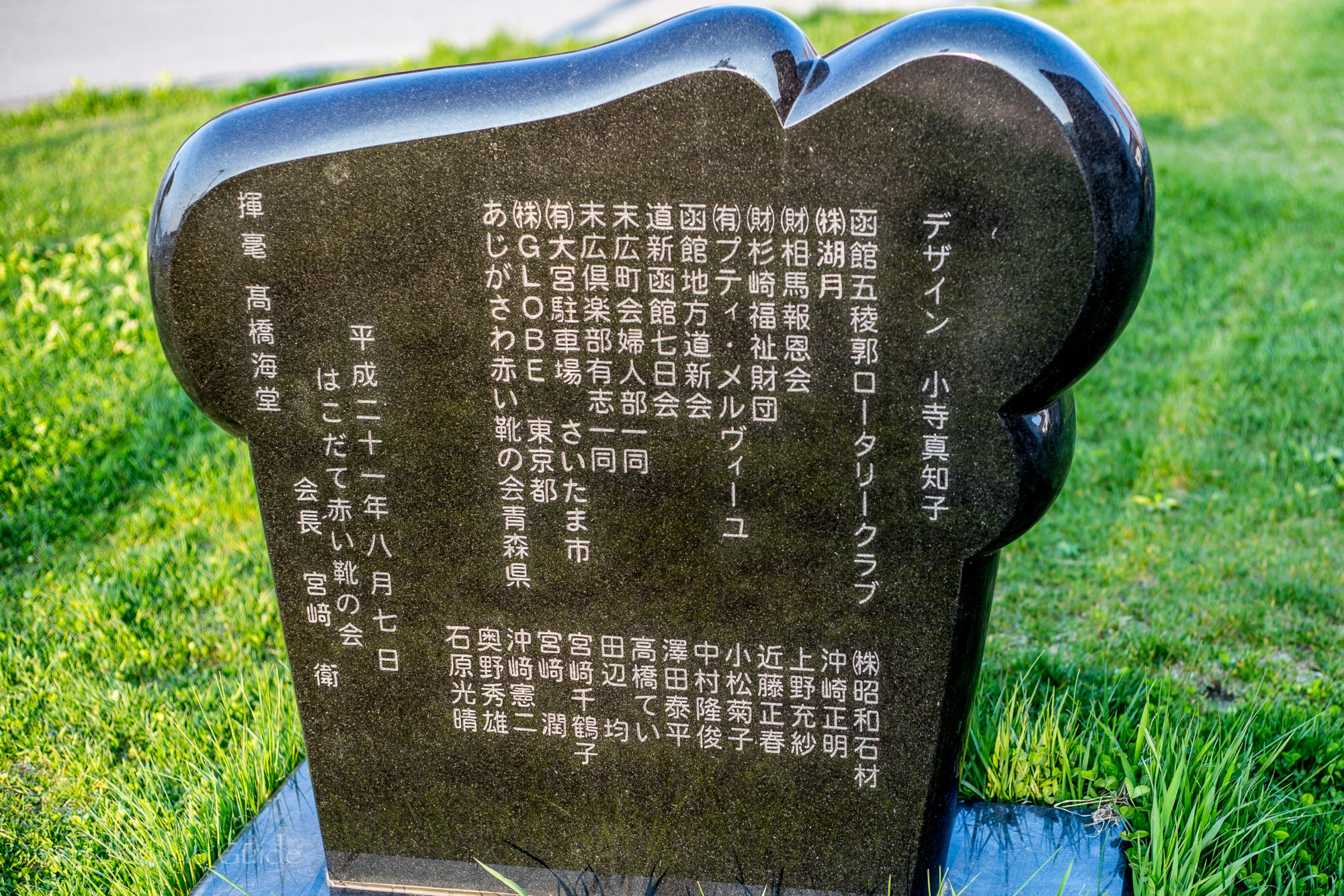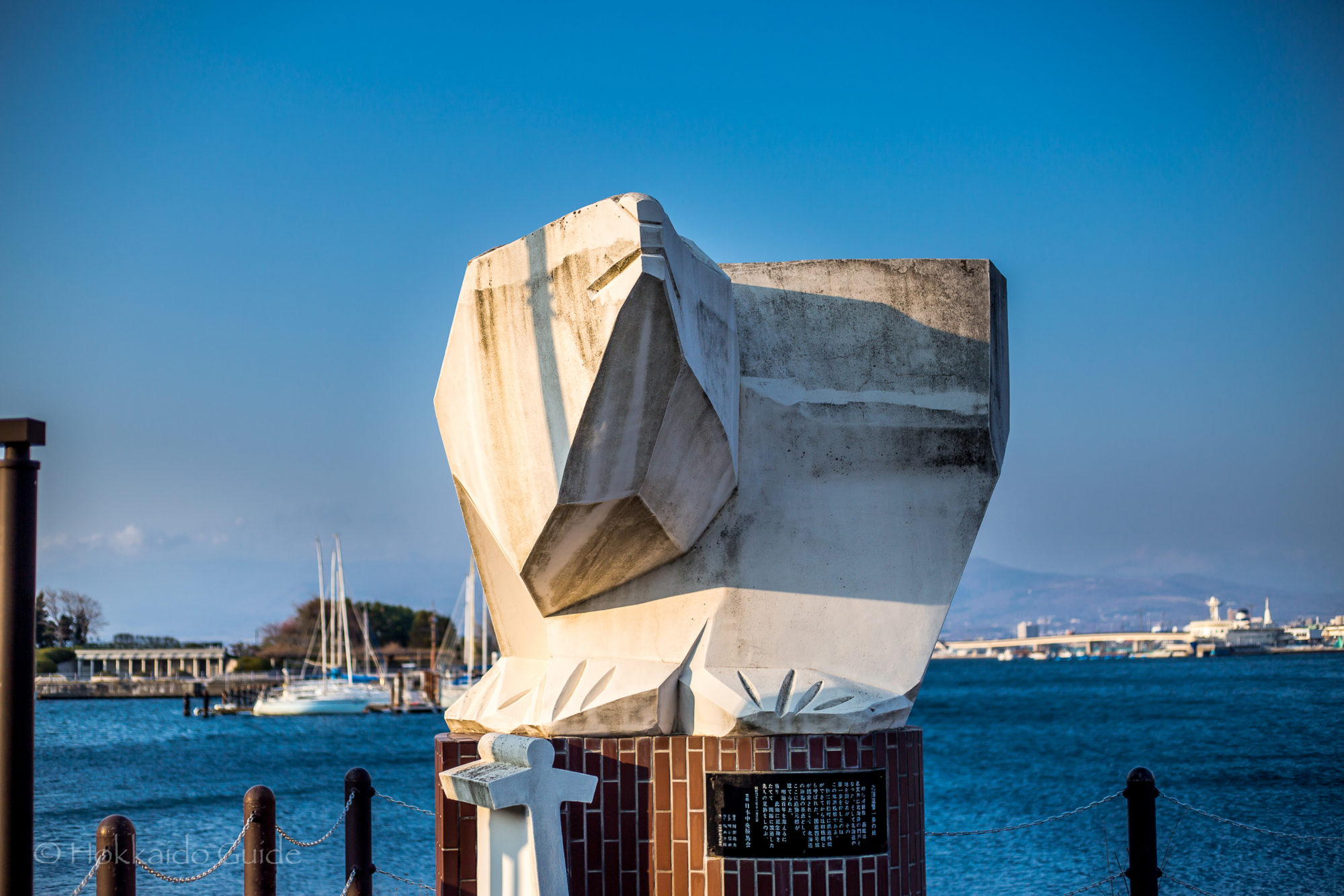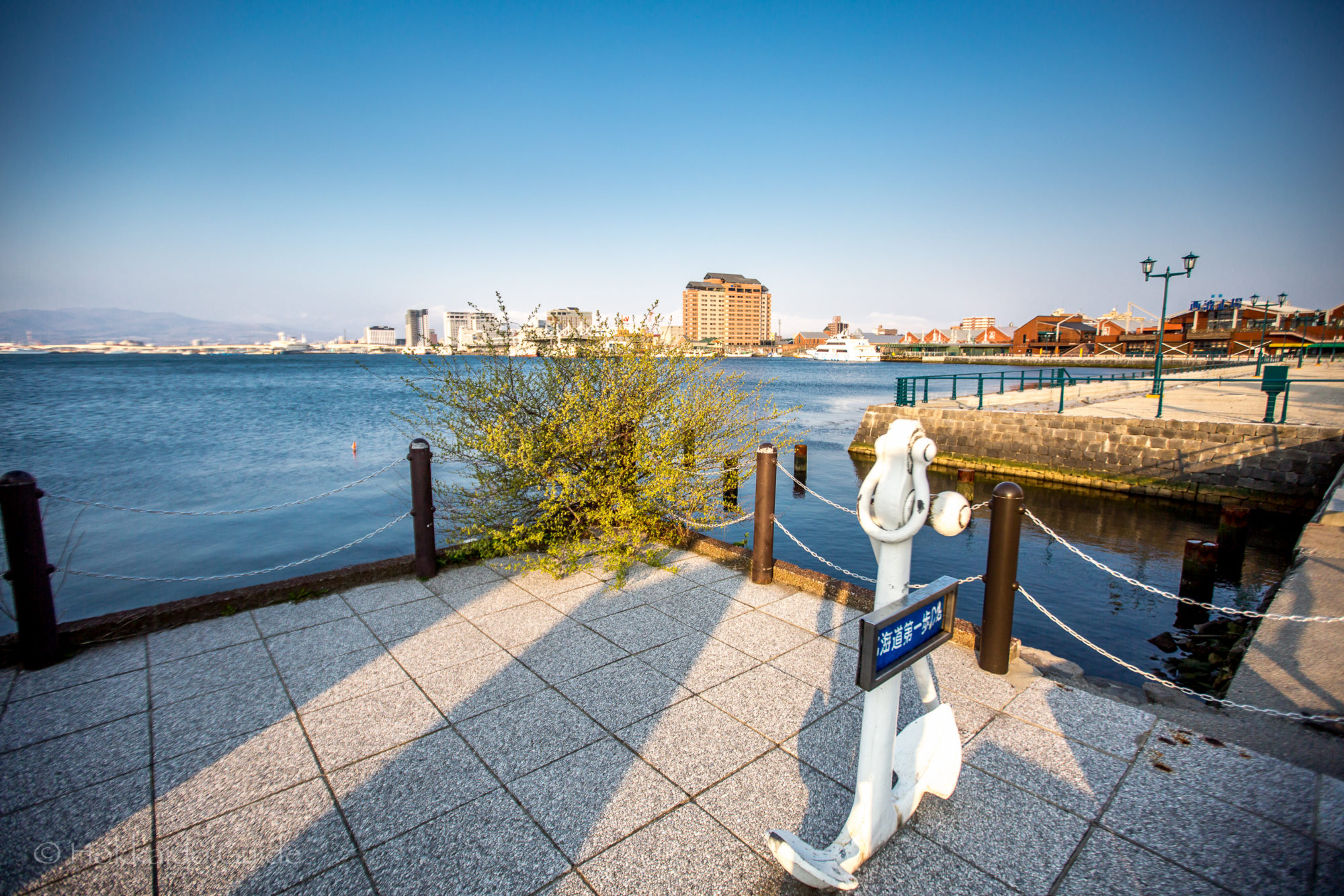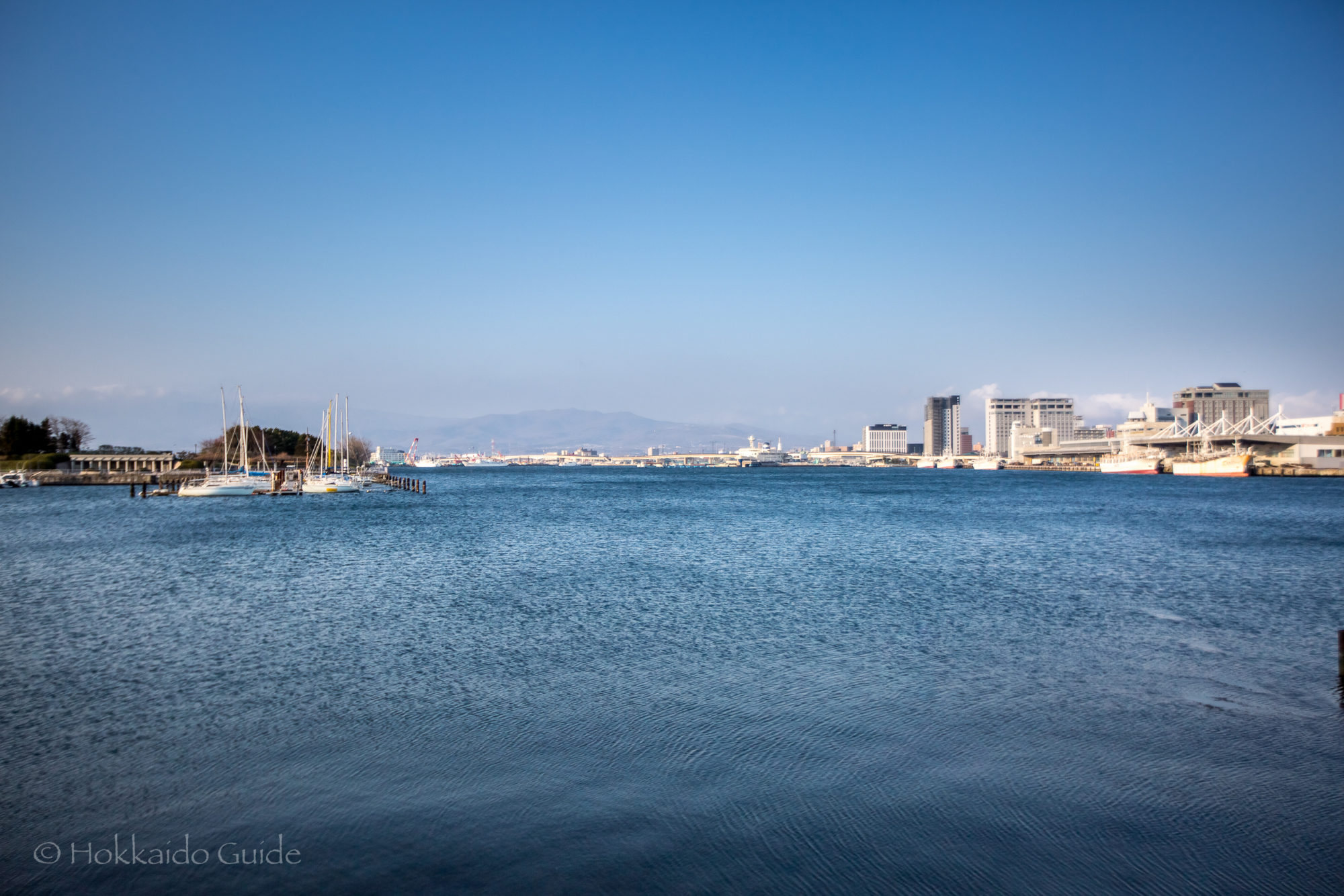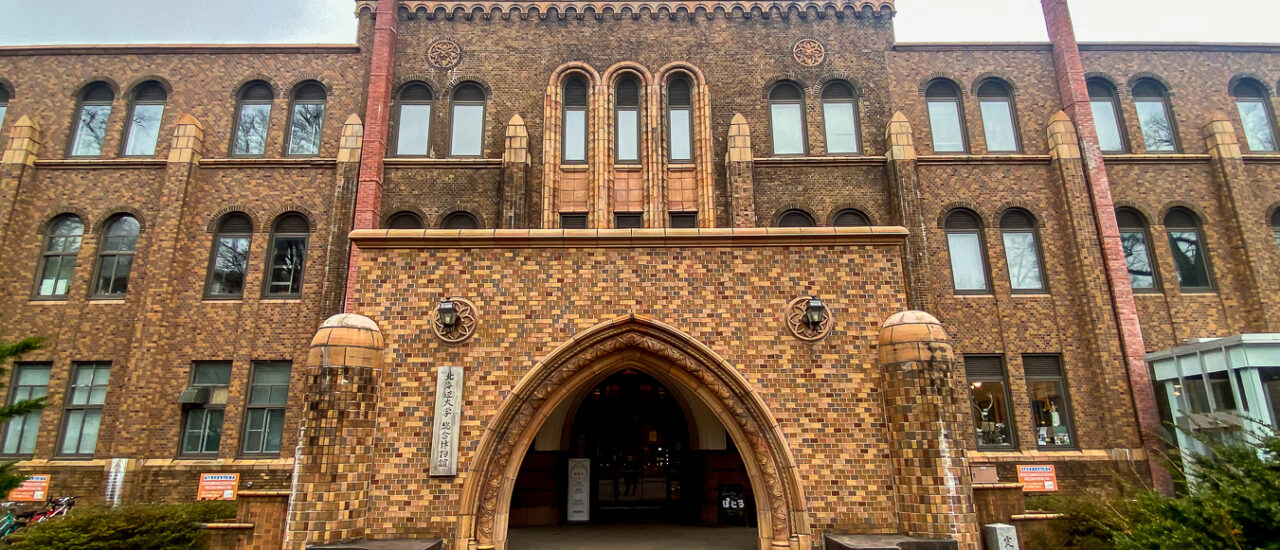
Tag: Historical Site
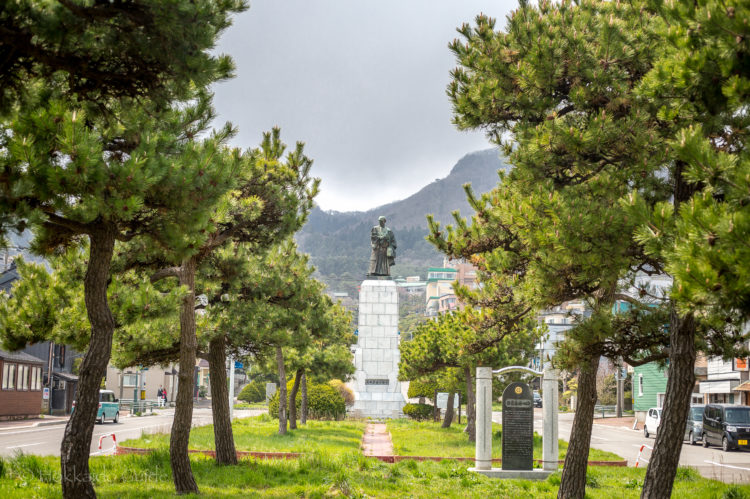
Takadaya Kahei & Historical Monument
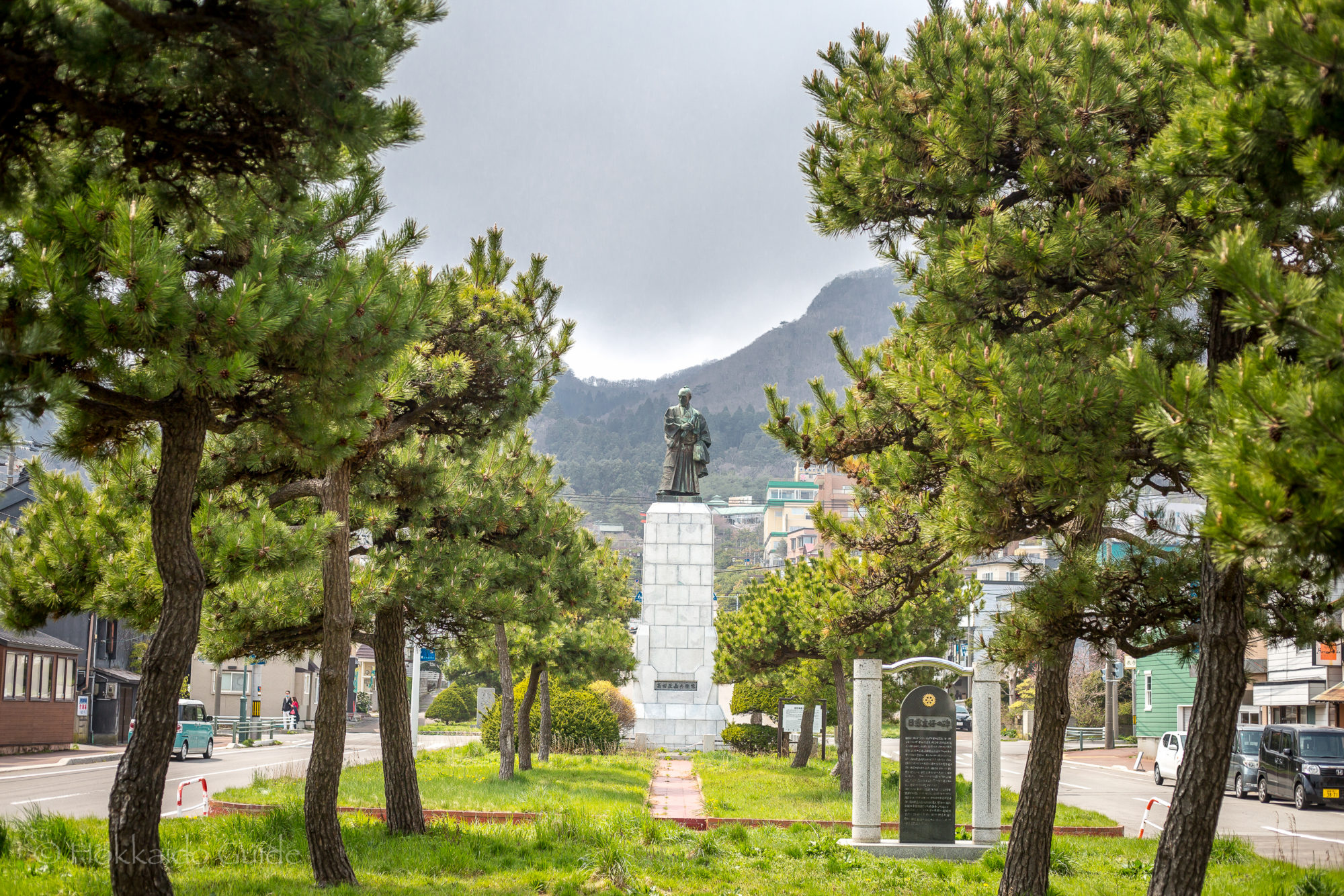
| Admission | Free |
| Opening Hours | Open 24 hours |
| Closed | - |
| Notes | Historical landmark, sightseeing spot, small park and walkway, no parking |
| Location / Getting There | Located in the central city of Hakodate. The closest tram station is Horai-Cho Station. It is only a 2 minute walk from here. The park is at the bottom of the hill that leads up to Gokoku Shrine. 〒040-0034 Hokkaido, Hakodate, Omoricho, 22, Unnamed Road |
 In Hakodate, at the base of the slope that leads up to Mt. Hakodate there is a narrow green space that runs for about five blocks. This green space is a really pleasant area to take a stroll along. On both sides the park is flanked by some nice old buildings. The green space is home to various statues and there is a historical site here as well. The park is particularly nice during the cherry blossom season. The main statue that overlooks the space is of Takadaya Kahei. Takadaya Kahei was born in 1769 and came to Hakodate when he was 28. He was famous for developing the area and creating trade routes and fisheries. The statue was erected in 1958 to commemorate the centenary of the port of Hakodate opening.
In Hakodate, at the base of the slope that leads up to Mt. Hakodate there is a narrow green space that runs for about five blocks. This green space is a really pleasant area to take a stroll along. On both sides the park is flanked by some nice old buildings. The green space is home to various statues and there is a historical site here as well. The park is particularly nice during the cherry blossom season. The main statue that overlooks the space is of Takadaya Kahei. Takadaya Kahei was born in 1769 and came to Hakodate when he was 28. He was famous for developing the area and creating trade routes and fisheries. The statue was erected in 1958 to commemorate the centenary of the port of Hakodate opening.
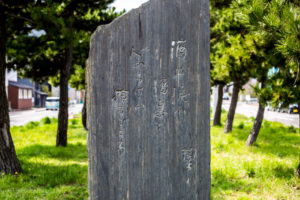 The historical site that can be observed halfway along the park, is the place where Takadaya Kahei’s house once existed. He owned extensive property in Hakodate and there is a small plaque displaying this. Also in this park, you can find the poem monument of Takahashi Kikutaro. The monument here was built in 1961 by his fans, and inscribed on the monument is the lyrics to one of his most famous songs. Takahashi Kikutaro was a prominent song writer and had written lyrics to over 3,000 songs by the time of his death in 1970. This green space has a pleasant small path running through it and it is a great spot to stroll through.
The historical site that can be observed halfway along the park, is the place where Takadaya Kahei’s house once existed. He owned extensive property in Hakodate and there is a small plaque displaying this. Also in this park, you can find the poem monument of Takahashi Kikutaro. The monument here was built in 1961 by his fans, and inscribed on the monument is the lyrics to one of his most famous songs. Takahashi Kikutaro was a prominent song writer and had written lyrics to over 3,000 songs by the time of his death in 1970. This green space has a pleasant small path running through it and it is a great spot to stroll through.

Ōmori Park

| Admission | Free |
| Opening Hours | Open 24 hours |
| Closed | - |
| Contact | 0138-40-3601 |
| Notes | Cemetery, sports park, playground, no parking, bathrooms |
| Location / Getting There | Located in Hakodate, by Omori beach. The closest tram station is Matsukaze-cho Station. It is a 7 minute walk east from this station. The park is also next to Kameda River. 33 Omoricho, Hakodate, Hokkaido 040-0034 |
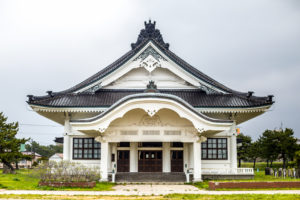 Ōmori Park is a large green space in Hakodate. It is used for sporting events (namely baseball), and as a play area for children. At the northern end of the park, you can find an impressive memorial hall and burial site. The park is popular for those looking to keep fit, as it has outdoor exercise equipment, plus it being a good spot to jog around. The spacious playground area also makes it a popular spot for families. The park is just across the road from Ōmori Beach as well, so there are a few things to see in the area.
Ōmori Park is a large green space in Hakodate. It is used for sporting events (namely baseball), and as a play area for children. At the northern end of the park, you can find an impressive memorial hall and burial site. The park is popular for those looking to keep fit, as it has outdoor exercise equipment, plus it being a good spot to jog around. The spacious playground area also makes it a popular spot for families. The park is just across the road from Ōmori Beach as well, so there are a few things to see in the area.
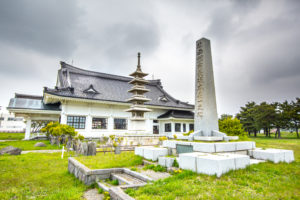 The memorial hall was constructed in 1937 with the five tier pagoda being built later. Takenosuke Miyamoto (a local businessman), was behind the construction of the pagoda using his own funds and property. The area has some historical significance and there is a large plaque (in Japanese), talking about the dark event that took place here many years ago. On the evening of March 21, 1954 a fire spread through the city and was fanned by strong winds from the ocean. The fire affected 102,000 with almost 3,000 reported missing. The Omori Bridge was terribly burned and many people were killed in and along the Kameda River. This river flows right by the memorial hall and pagoda.
The memorial hall was constructed in 1937 with the five tier pagoda being built later. Takenosuke Miyamoto (a local businessman), was behind the construction of the pagoda using his own funds and property. The area has some historical significance and there is a large plaque (in Japanese), talking about the dark event that took place here many years ago. On the evening of March 21, 1954 a fire spread through the city and was fanned by strong winds from the ocean. The fire affected 102,000 with almost 3,000 reported missing. The Omori Bridge was terribly burned and many people were killed in and along the Kameda River. This river flows right by the memorial hall and pagoda.
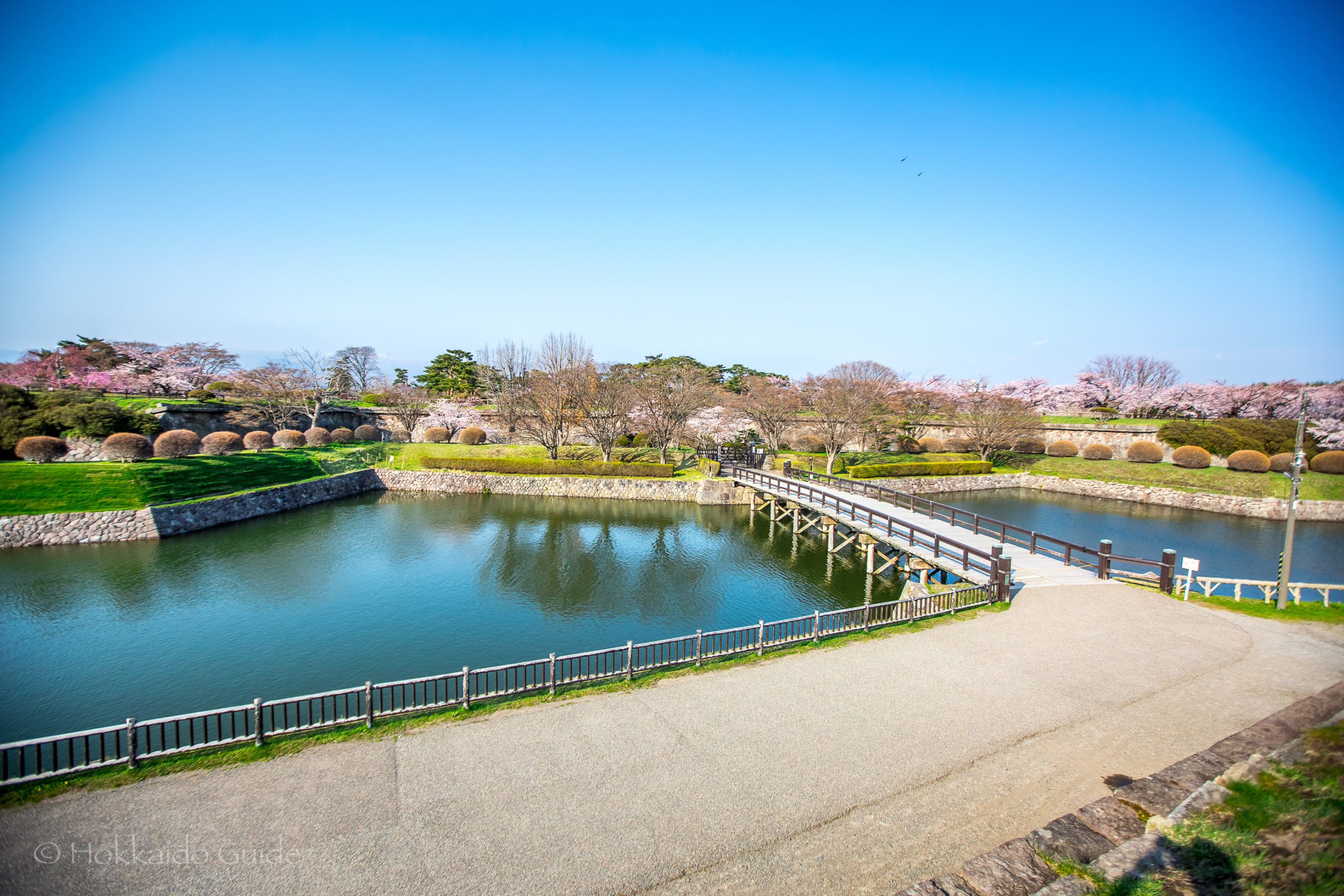
Goryokaku Park
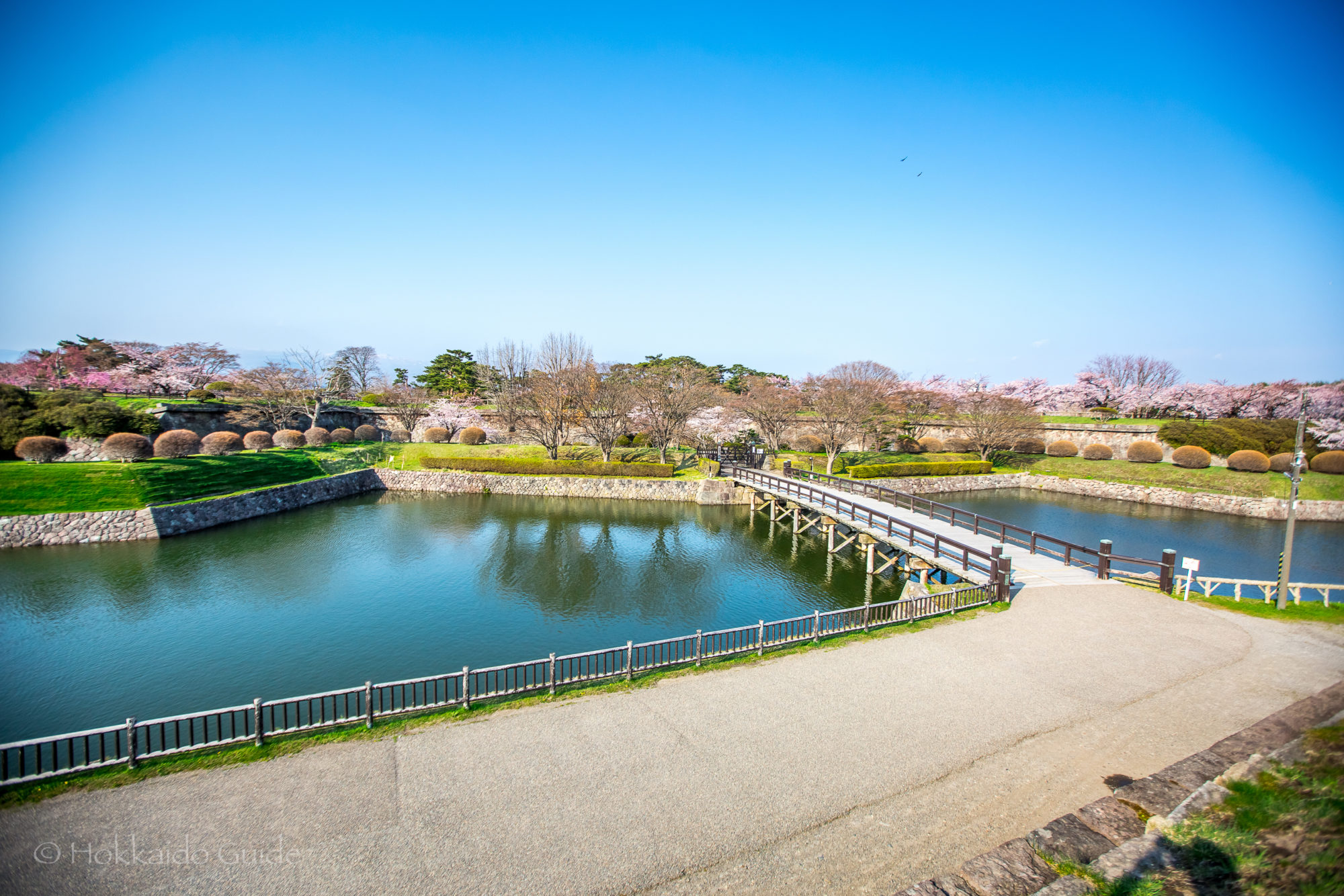
| Admission | Free |
| Opening Hours | 5:00 - 18:00 |
| Closed | - |
| Contact | 0138-31-5505 |
| Notes | Cherry blossom viewing, historical landmark, photography spot, walking paths, no parking (but paid parking nearby), wheelchair access |
| Location / Getting There | Central Hakodate. It's a 15 minute walk from Goryokaku Koen-mae station. From Hakodate Station take the 19, 25, or 33 bus and get off Goryokaku Park entrance. It's a 10 minute walk. There is a also a 'Goryokaku Tower Trappistine Shuttle Bus'. 44-2 Goryokakucho, Hakodate, Hokkaido 040-0001 |
 Goryōkaku Fort & Park was designed in 1855 by the scholar and the architect, Takeda Ayasaburō. His design was based on the work by the French architect, Vauban. The design is in the shape of a five-pointed star. Unlike other Japanese forts, this allowed for a greater number of gun emplacements, and reduced the number of blind spots. It was built to protect the Hakodate Magistrates office at the end of the Edo period when Hakodate opened its harbor to international trade. It played an important role as a political center in Ezo until it was taken over by the new Meiji government. The fort nowadays has seen the last of battles and sees quieter days as a national historic site. It is also a part of the Hakodate city museum and is a hugely popular spot for cherry blossom viewing.
Goryōkaku Fort & Park was designed in 1855 by the scholar and the architect, Takeda Ayasaburō. His design was based on the work by the French architect, Vauban. The design is in the shape of a five-pointed star. Unlike other Japanese forts, this allowed for a greater number of gun emplacements, and reduced the number of blind spots. It was built to protect the Hakodate Magistrates office at the end of the Edo period when Hakodate opened its harbor to international trade. It played an important role as a political center in Ezo until it was taken over by the new Meiji government. The fort nowadays has seen the last of battles and sees quieter days as a national historic site. It is also a part of the Hakodate city museum and is a hugely popular spot for cherry blossom viewing.
 In 1952, it was designated as a national historic site under the name of “Goryokaku Ruins”. The site is a fantastic place to wander around in any season. The green trees in summer, the autumn leaves in the fall, snow in winter. and the sprawling cherry blossoms in the spring. There are about 1,600 cherry blossoms here and they start to bloom in late April and the park is one of the best places to view the blossoms in the whole of Hokkaido. To appreciate the park there is an observation platform overlooking the park. The tower is called Goryokaku Tower and is accessible on the south eastern side.
In 1952, it was designated as a national historic site under the name of “Goryokaku Ruins”. The site is a fantastic place to wander around in any season. The green trees in summer, the autumn leaves in the fall, snow in winter. and the sprawling cherry blossoms in the spring. There are about 1,600 cherry blossoms here and they start to bloom in late April and the park is one of the best places to view the blossoms in the whole of Hokkaido. To appreciate the park there is an observation platform overlooking the park. The tower is called Goryokaku Tower and is accessible on the south eastern side.

Kanemori Red Brick Warehouse
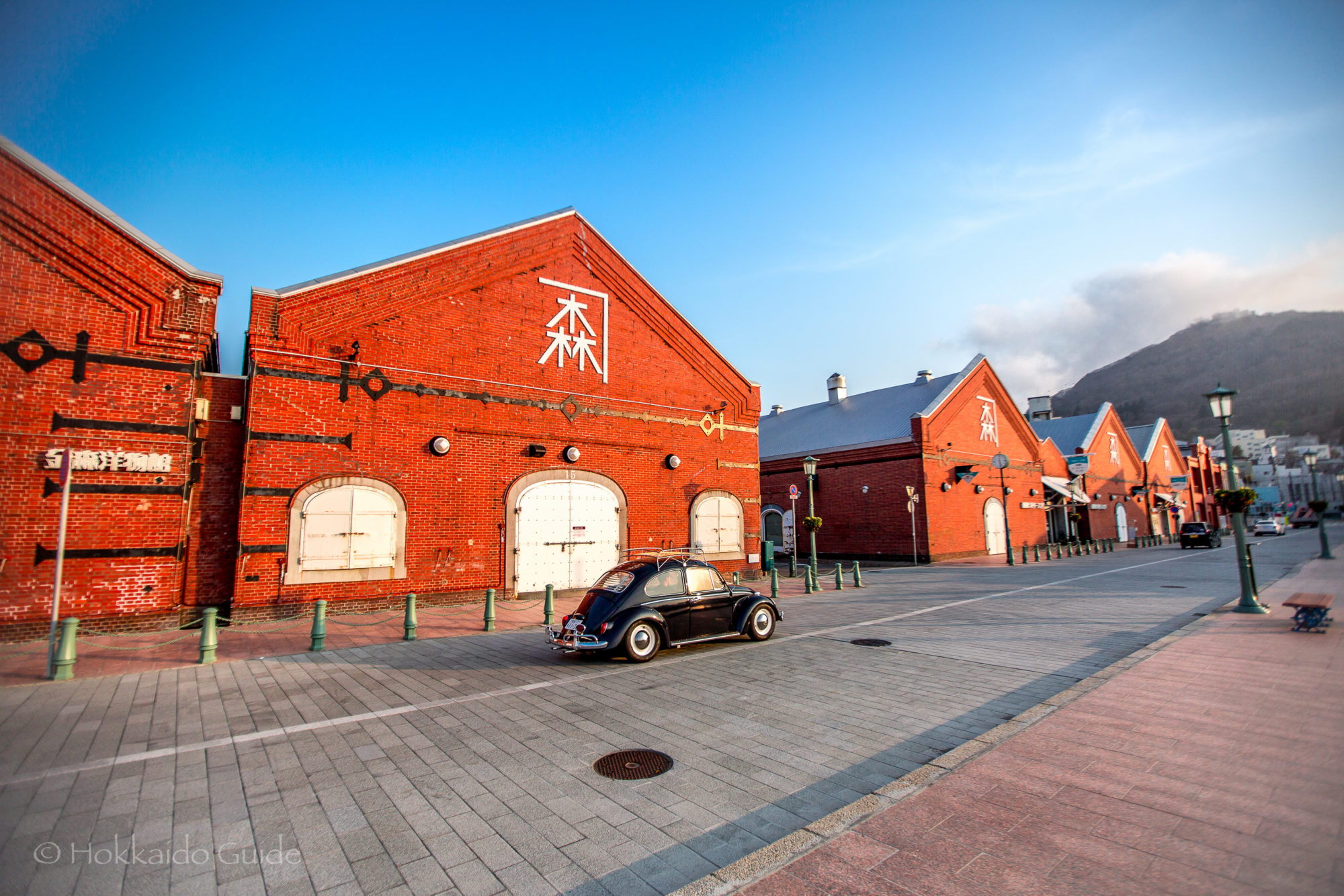
| Opening Hours | 9:30 - 18:00 |
| Closed | - |
| Contact | 0138-27-5530 |
| Notes | Shopping complex, historical site, free Wifi, wheelchair access & rental, no smoking, tax free shopping, rental bicycles, lockers, baby stroller rental, breast feeding room, pay phone, no pets, no outside food, currency exchange machine, parking available at ¥400 an hour |
| Location / Getting There | It's only a 2 minute walk from Suehirocho station. It's also an 18 minute walk from Hakodate station. It's right by the old red brick warehouses shopping district. 14-12 Suehirocho, Hakodate, Hokkaido 040-0053 |
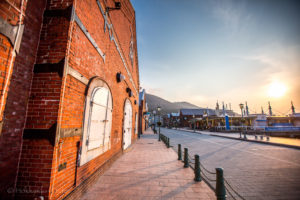 Sitting on the old Hakodate pier, the Kanemori Red Brick Warehouse is a commercial shopping area. Kumashiro Watanabe founded the first warehouse business in Hakodate, which lead to the current site. Constructed in 1909, it consists of four large facilities. Hakodate Port opened up to international trading. The Kanemori Red Brick Warehouse, over its history, has seen countless people and cultures trade within its walls. The area has changed very little. This area is a great spot to walk around and enjoy the history of the place.
Sitting on the old Hakodate pier, the Kanemori Red Brick Warehouse is a commercial shopping area. Kumashiro Watanabe founded the first warehouse business in Hakodate, which lead to the current site. Constructed in 1909, it consists of four large facilities. Hakodate Port opened up to international trading. The Kanemori Red Brick Warehouse, over its history, has seen countless people and cultures trade within its walls. The area has changed very little. This area is a great spot to walk around and enjoy the history of the place.
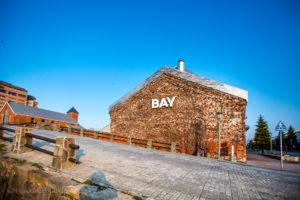 The Red Brick Warehouses are divided into four areas. Bay Hakodate, Kamemori Yobutsukan, Hakodate History Plaza, and Kanemori Hall. Bay Hakodate includes numerous stores, such as souvenir shops, boutiques, tax free stores, art and craft stores like Malaika, restaurants and cafes, plus a wine museum. Kamemori Yobutsukan, as with Bay Hakodate, has an array of twenty four stores including boutiques, interior stores, arts and crafts. Hakodate Plaza has fewer shops, but has a large beer hall with a couple of other stores, and the last warehouse is the Kanemori Hall. The hall is a concert hall that has regular shows on. Points of interest around the warehouse include the Girl in the Red Shoes, and the First Place of Entering Hokkaido.
The Red Brick Warehouses are divided into four areas. Bay Hakodate, Kamemori Yobutsukan, Hakodate History Plaza, and Kanemori Hall. Bay Hakodate includes numerous stores, such as souvenir shops, boutiques, tax free stores, art and craft stores like Malaika, restaurants and cafes, plus a wine museum. Kamemori Yobutsukan, as with Bay Hakodate, has an array of twenty four stores including boutiques, interior stores, arts and crafts. Hakodate Plaza has fewer shops, but has a large beer hall with a couple of other stores, and the last warehouse is the Kanemori Hall. The hall is a concert hall that has regular shows on. Points of interest around the warehouse include the Girl in the Red Shoes, and the First Place of Entering Hokkaido.
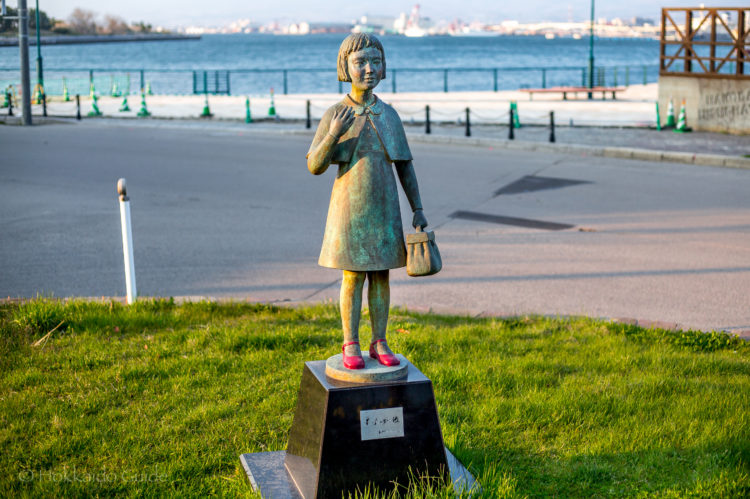
Girl in the Red Shoes
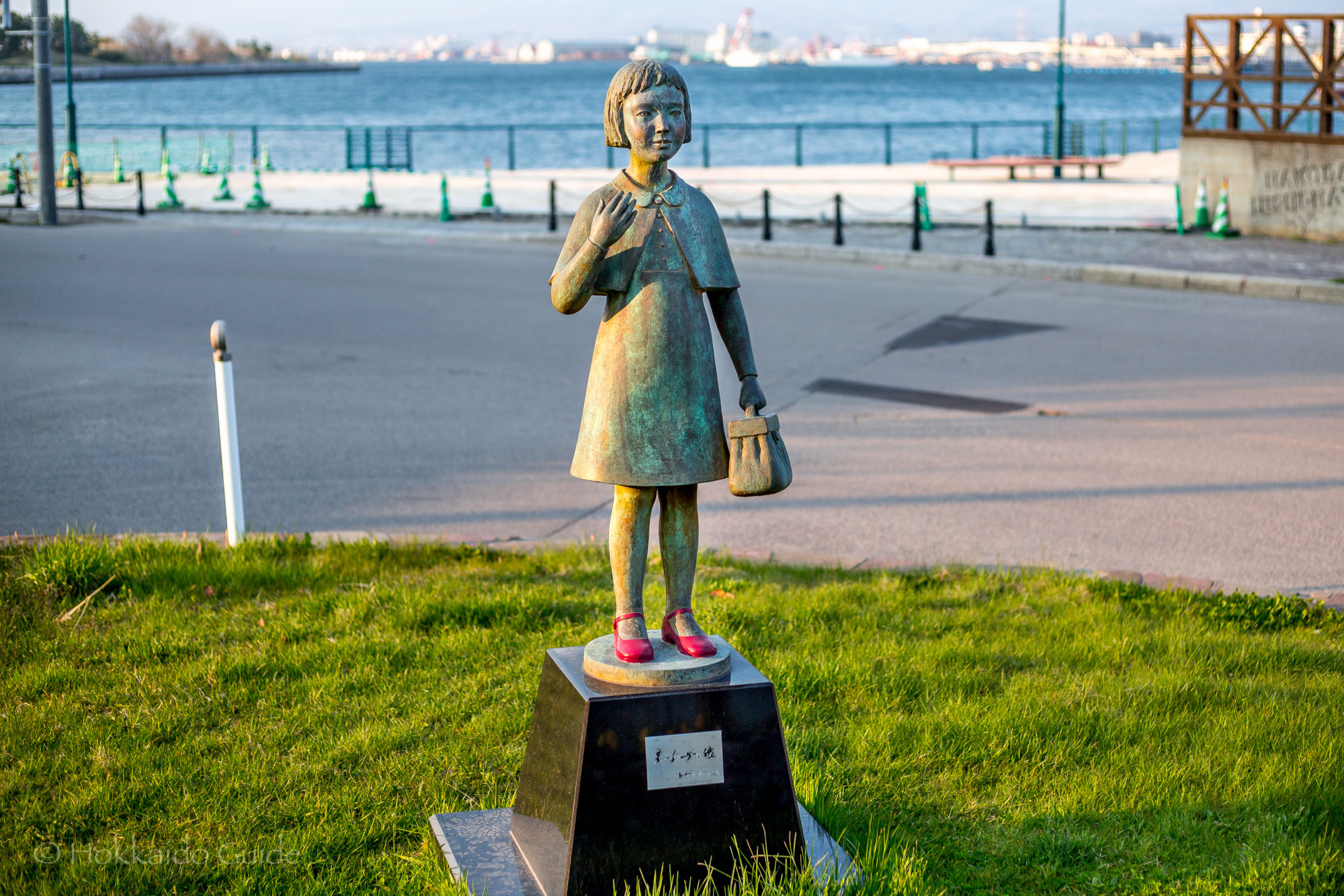
| Admission | Free |
| Opening Hours | Open 24 hours |
| Closed | - |
| Contact | 011-3826-3753 |
| Notes | Sightseeing spot, historical landmark, walking spot, no parking (paid parking nearby) |
| Location / Getting There | It's only a 2 minute walk from Suehirocho station. It's also an 18 minute walk from Hakodate station. It's right by the old red brick warehouses shopping district. 23 Suehirocho, Hakodate, Hokkaido 040-0053 |
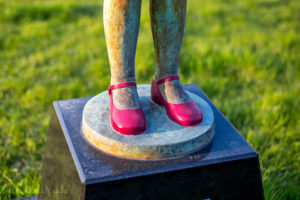 The statue of the girl on the red shoes has a sad and fascinating background. The actual origins can be traced back to a poem ‘Akai Kutsu’ (which translates to red shoes), written in 1922 by Ujō Noguchi. The poem is about a young girl in red shoes taken to a foreign country by a foreigner. This short poem is based on the real life of Iwasaki Kimi (July 15, 1902 – September 15, 1911), though there has been disagreement on the accuracy of this story. The story is of Kimi, and her mother, Kayo moving to Hokkaido (hence the three statues in the prefecture), to start a new life with Kayo’s new husband.
The statue of the girl on the red shoes has a sad and fascinating background. The actual origins can be traced back to a poem ‘Akai Kutsu’ (which translates to red shoes), written in 1922 by Ujō Noguchi. The poem is about a young girl in red shoes taken to a foreign country by a foreigner. This short poem is based on the real life of Iwasaki Kimi (July 15, 1902 – September 15, 1911), though there has been disagreement on the accuracy of this story. The story is of Kimi, and her mother, Kayo moving to Hokkaido (hence the three statues in the prefecture), to start a new life with Kayo’s new husband.
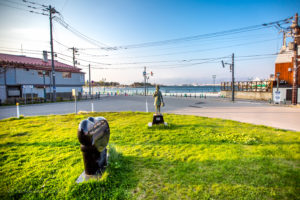 Living on a farm and due to the harsh living conditions Kayo entrusted Kimi’s upbringing to a pair of married American missionaries by the name of Hewitt. The missionaries planned to return to America and bring Kimi with them. Unfortunately, the tale takes a sad turn, as Kimi died of tuberculosis before going away at the age of 9. Kayo, not seeing her daughter again, spent her life believing Kimi had gone to America with the Hewitts. There are six statues throughout Japan, with three in Hokkaido, one in Hakodate, Otaru, and in Rusutsu.
Living on a farm and due to the harsh living conditions Kayo entrusted Kimi’s upbringing to a pair of married American missionaries by the name of Hewitt. The missionaries planned to return to America and bring Kimi with them. Unfortunately, the tale takes a sad turn, as Kimi died of tuberculosis before going away at the age of 9. Kayo, not seeing her daughter again, spent her life believing Kimi had gone to America with the Hewitts. There are six statues throughout Japan, with three in Hokkaido, one in Hakodate, Otaru, and in Rusutsu.
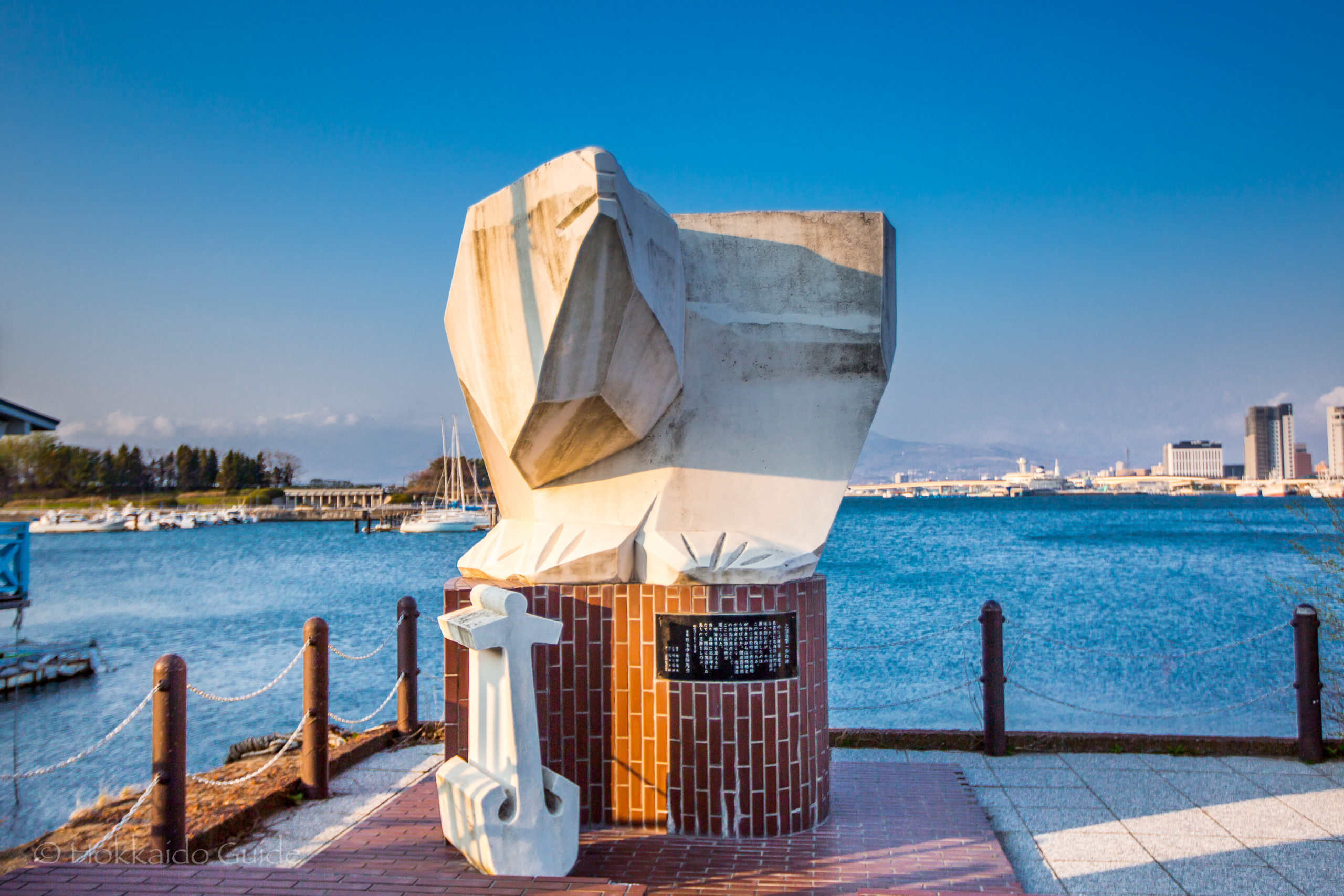
First Place of Entering Hokkaido
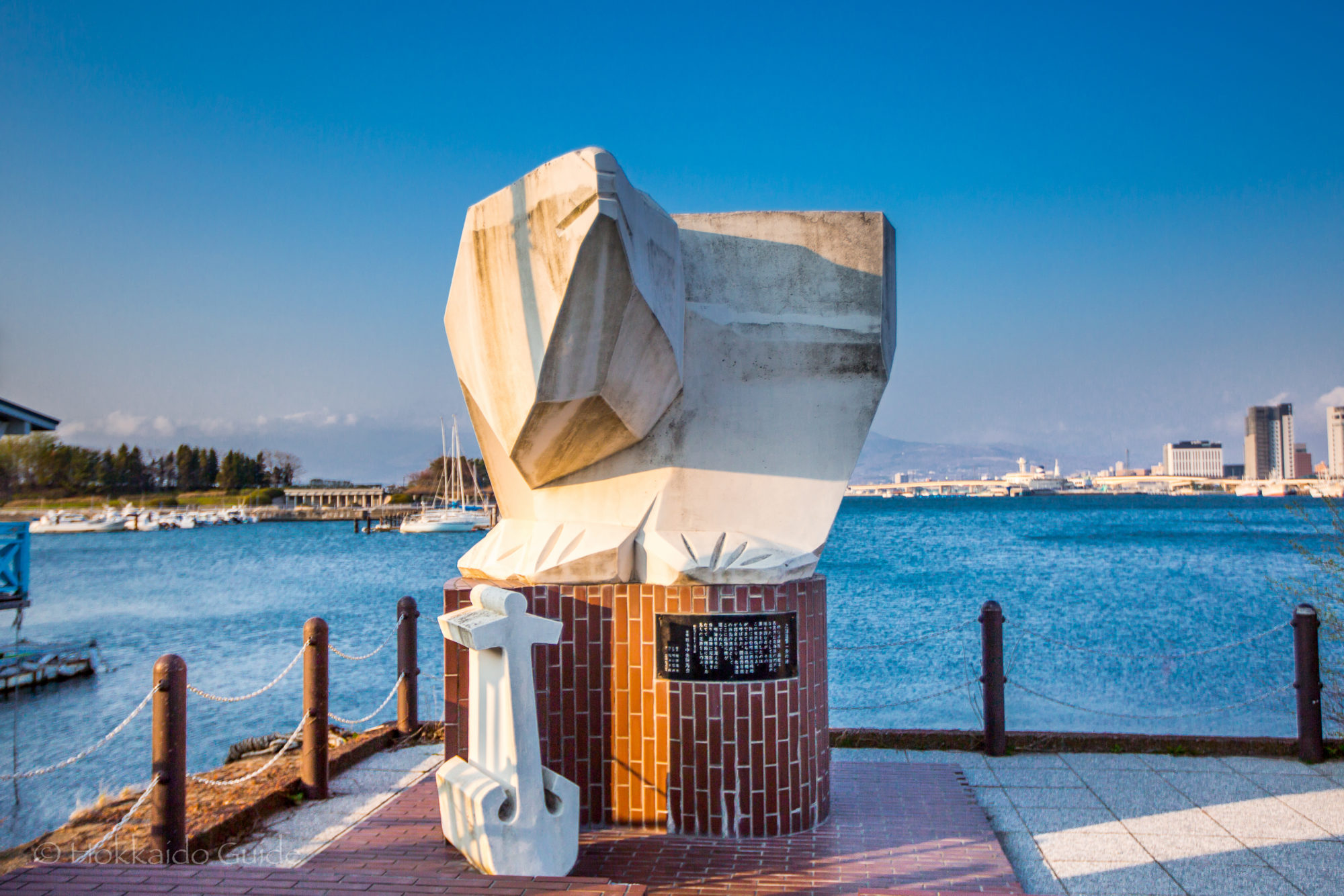
| Admission | Free |
| Opening Hours | Open 24 hours |
| Closed | - |
| Contact | 0138-23-5440 |
| Notes | Sightseeing spot, historical landmark, walking spot, no parking (paid parking nearby) |
| Location / Getting There | The monument is located on the old pier of Hakodate. It's only a 2 minute walk from Suehirocho station. It's also an 18 minute walk from Hakodate station. It's right by the old red brick warehouses shopping district. 24 Suehirocho, Hakodate, Hokkaido 040-0053 |
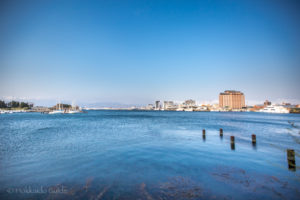 Since the Meiji era, the Higashihama Pier (the former pier) was the gateway to Hokkaido. This pier was the original landing site. In 1968 a monument was erected to commemorate the 100th anniversary of this landing. The monument also celebrates the achievements of the ancestors who came and cultivated Hokkaido. It is fascinating to go to that very spot and gaze over waters that brought in settlers from the mainland of Honshu. For those who like historical spots, take a quick walk down and enjoy the view.
Since the Meiji era, the Higashihama Pier (the former pier) was the gateway to Hokkaido. This pier was the original landing site. In 1968 a monument was erected to commemorate the 100th anniversary of this landing. The monument also celebrates the achievements of the ancestors who came and cultivated Hokkaido. It is fascinating to go to that very spot and gaze over waters that brought in settlers from the mainland of Honshu. For those who like historical spots, take a quick walk down and enjoy the view.
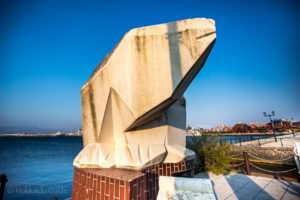 The design of the monument depicts a brown bear standing over an anchor. The bear and the anchor are common motifs seen around Hokkaido. The monument was designed by Nobumichi Akashi, who was a professor at Waseda University. The pier itself is a nice place to take a walk by the water. The landing spot is right past the Red Brick Warehouse shopping area (which is a great spot to visit), so it is easy to have a wander around and take in a bit of history.
The design of the monument depicts a brown bear standing over an anchor. The bear and the anchor are common motifs seen around Hokkaido. The monument was designed by Nobumichi Akashi, who was a professor at Waseda University. The pier itself is a nice place to take a walk by the water. The landing spot is right past the Red Brick Warehouse shopping area (which is a great spot to visit), so it is easy to have a wander around and take in a bit of history. 
